







Teton Valley’s long established real estate team—Sage Realty Group—has joined forces with the most powerful brokerage focused on mountain town communities: Coldwell Banker Mountain Properties.
Our brokers live, work, and play here—they are local experts who are the ideal guides to help you navigate the market, and make the most out of your real estate journey. With proven local real estate expertise, leveraged by the powerful reach of the regional and national Coldwell Banker networks, let our team be your guide to Teton Valley real estate.
189
208-354-9955
www.tetonvalley.realestate



















All office visits, phone and electronic messaging, telemedicine appointments, and certain in-office procedures are included at no additional charge! For a complete list of services included and excluded, please visit www.tvhcare.org/dpc.






Building or Remodeling? Make It Your Propane Dream Home!

RANGES & OVENS
SPACE HEATING RADIANT HEAT
OUTDOOR LIVING
The all Fall River Propane home provides your family with the utmost comfort while enjoying greater efficiency and energy savings with clean, green, American-made Fall River Propane.
• Locally owned with local employees since 1999
• Fast set-up and delivery
• Full-service with certified technicians
• Tank rentals or lease-to-own
• Never run out of gas with our “Auto Fill” program WATER HEATING
Call from anywhere






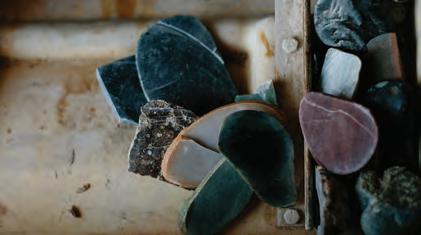
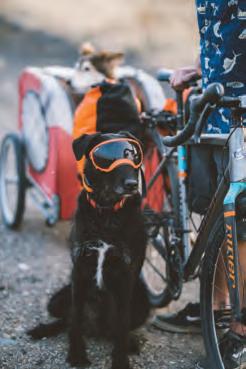





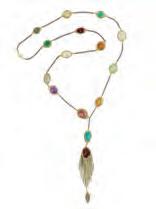

As I read the collection of pieces that make up this latest issue of Teton Valley Magazine, change is on my mind: the change of seasons mixed with the passage of time and the start of new chapters. Each story invited me to pause and reflect on where we’ve been and what may lie ahead in all its equally exciting and uncertain glory.
With stories of times long gone, celebrations of the present, and individual reflections on the uncertainty of the future, they all hover around a shared thread: Time marches on.
In Earle F. Layser’s “Back When” piece (page 40) the longtime Teton Valley Magazine contributor unlocks the lore of frontiersman and early settler Richard “Beaver Dick” Leigh, who landed in Pierre’s Hole some 160 years ago. I wonder what Dick saw come and go in those early days? And Judy Allen (page 46) shares a snapshot of the longstanding legacy of the Green family of Alta, Wyoming. Imagine how proud patriarch Austin Greeley Green would be to see his family still playing a key role in life in the Tetons.
In Steps Across (page 78), award-winning photographer David Stubbs pens first-person reflections on his two decades residing in the pair of valleys that flank the Tetons, an idea he explored while on a solo east-to-west traverse of the Teton Range.
Some change revitalizes what was once here and then gone, such as that highlighted in Smith Maddrey’s “Resurrecting History” (page 86), a look at the newly renovated and reopened Astoria Hot Springs. Another, Christina Shepherd McGuire’s “Farming Up High” (page 30), shares Rafe Rivers and his young family’s journey from the low country of the South to the high country of the West to give growing in the mountains a go—a huge change, no doubt.
And then there are the transitions that bring with them hope for what is to come—the reason why change has been on my mind so much. My husband and I are preparing to bring a new person into the fold this summer, a baby boy expected to arrive in August. I can only imagine his own reality of life spent growing up in Teton Valley. Will the valley Kenny and I met and married in be the same place he grows to love? No, time will bring change. But here’s hoping it doesn’t change too much—or too fast.

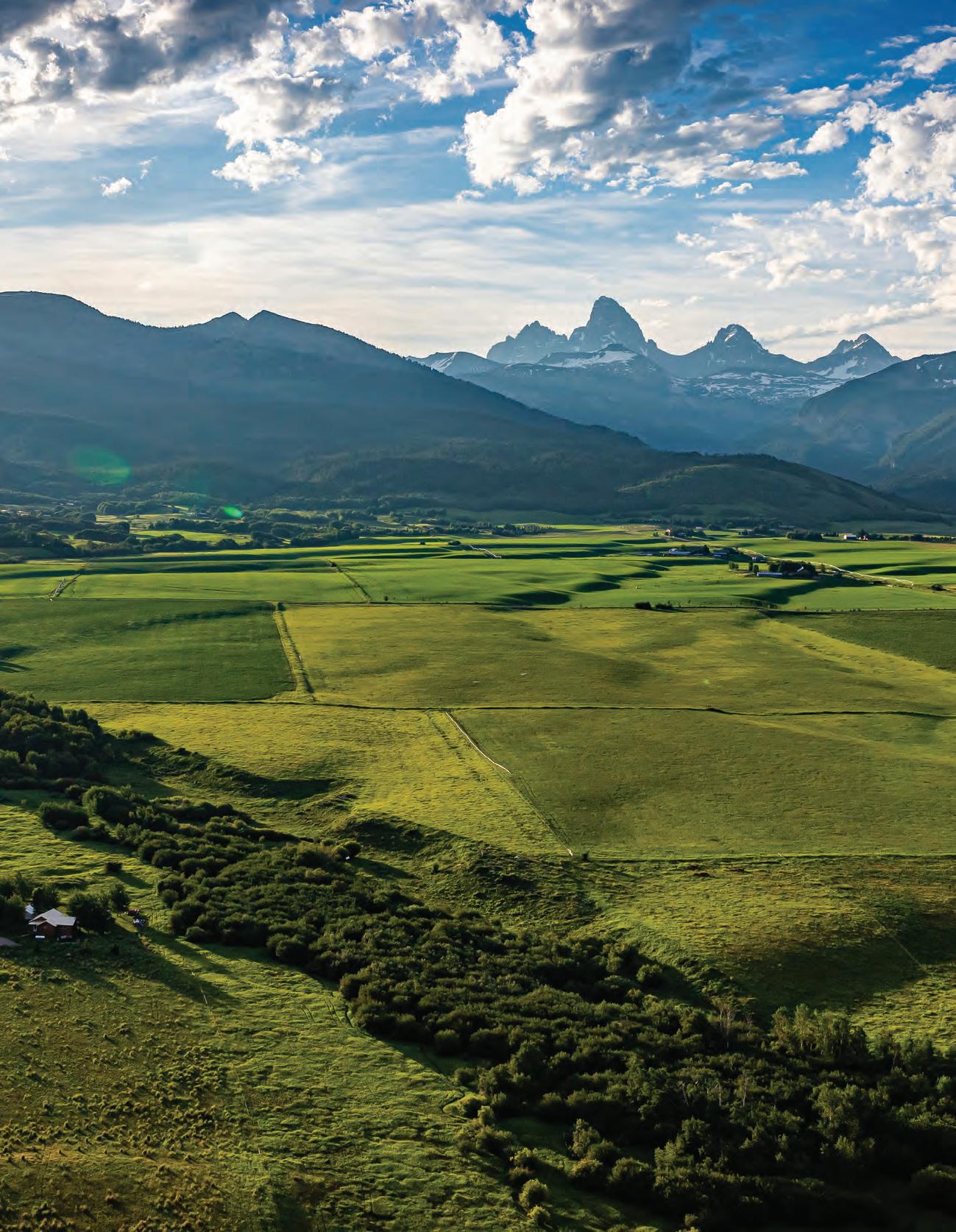

Ready for your next move? We are a team of locally owned, trusted advisors working collaboratively to leverage our combined knowledge and expertise to deliver a fundamentally different service. What that means for you - stress free real estate transactions.














Even though she’s lived in the Tetons for nearly forty years—twenty plus in Teton Valley— Judy Allen (The Greens, page 46) still struggles to balance her love of hiking and biking with gardening during our short summers. She writes, teaches, and grows organic produce year-round in her solar greenhouse and garden, where she rents beds to the public at Darby Canyon Gardens.

Kristen (Public Lands, page 56, and Rockhounding, page 90) is a Victor-based freelance writer and editor. She writes about science, conservation, travel, and outdoor adventure, among other topics. When she’s not glued to her computer, you’ll find her out on the local trails and waterways, traveling, or curled up with a good book. In addition to her work with Teton Valley Magazine, she writes for a variety of publications, including National Geographic, Discover Magazine, Smithsonian, and others.

One moment Christina’s boots are covered in chicken poop and the next she’s playing taxi driver for soccer practice; while somewhere in between she’s striving for her version of “balance.” As the managing editor of Teton Family Magazine and Grand Wedding magazine, Christina (Canewater Farm, page 30) aims to help women and families live a slower, healthier, and more fulfilling lifestyle. To her, this often means hitting the trails in the high country or taking a mid-day siesta on her front porch in Tetonia.

David Stubbs
David Stubbs (Steps Across, page 78, and Astoria Hot Springs, page 86) is a freelance photographer, cinematographer, and director who’s been based in Jackson since 1999. David combines his passions for photojournalism, film, adventure, and environmental stories to produce striking content for editorial, commercial, and nonprofit clients. He has worked in more than twenty-five countries for clients including The New York Times, The Wall Street Journal, Le Monde, The Rockefeller Foundation, National Geographic, The Nature Conservancy, The North Face, Arc’teryx, Stio, and Marmot. David’s motion work has appeared on Vice, Showtime, and the Travel Channel. He and his wife Bille, a teacher, have two little girls.

Linda Swope
Linda (Lean On Me, page 70, and Sandhill Cranes, page 112) got her first camera at age ten. By twenty-four, after earning degrees in psychology and sociology from the University of Texas, she began a photography career that has lasted more than forty years. She has shot everything from Harrison Ford as a wedding groomsman to the San Antonio Spurs. Linda discovered Jackson Hole in 1988 and moved to the Tetons, where she pioneered the destination wedding photography business and shot thousands of portraits, action, and events. She came to Teton Valley five years ago and now devotes her time to fine art photography and photographing for nonprofits. “My proudest moments are when working with our amazing nonprofits,” she says. “Pure inspiration!” Look for Linda and her spouse e-biking the valley from end to end, always with a camera in her pannier.



With the daVinci robotic surgical system at St. John’s Health, human touch gets a helping hand.
With more precision, control, dexterity, and 3-D visualization, we now offer more minimally invasive surgery for patients.
Now offering robotic-assisted surgeries for: hernias, weight reduction, medical problems of the gallbladder, prostate, kidney, appendix, colorectal system, and more.
Talk to your physician about whether robotic-assisted surgery is right for you. Learn more at: www.stjohns.health/robotics

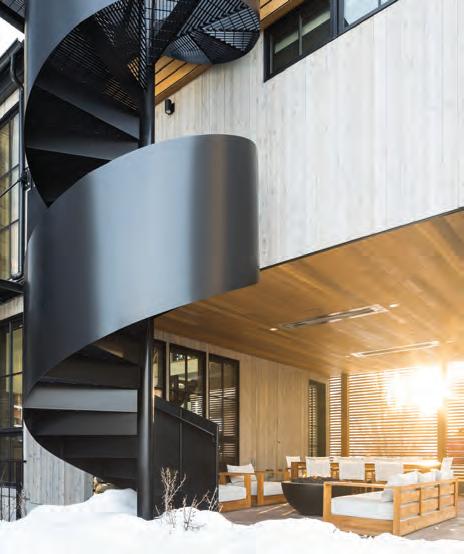





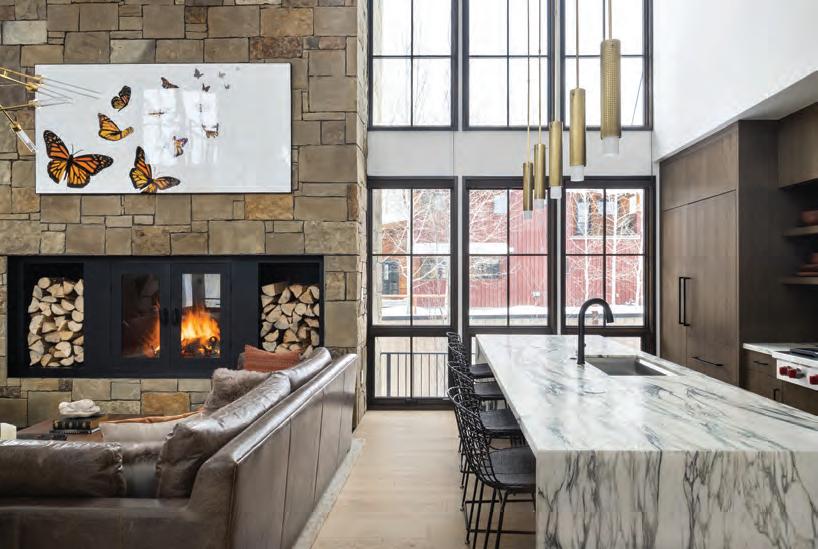

























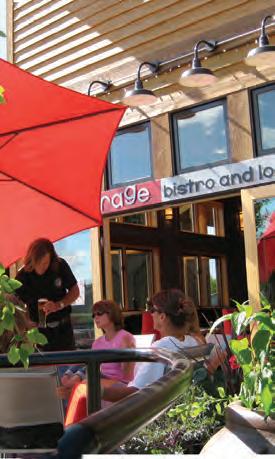




* Activities/operating hours may be adjusted according to COVID-19 guidelines for the safety and health of the community. Please call ahead for current information.
01 02 03 04 05 06 07 08 09 10
Sit outside and munch a Teton burrito with a pourover coffee at Rise Coffee House
Grab an Americano and a muffin to go from Victor’s Alpine Air Coffee Hut
Practice your cast on the South Fork or the Teton River during a guided fly-fishing trip
Hike or mountain bike the South Horseshoe trails in the Big Hole Range west of Driggs
Gaze down on Teton Valley from a high-flying hot air balloon
Savor brunch at Butter Cafe in Victor with flavorful French toast or a hearty Butter burrito
Spoil a good walk (as Mark Twain would say) by golfing at one of our three public courses
Find your center and float the Teton River on a SUP rental from Yöstmark Mountain Equipment
Stock up on homegrown goods at the Teton Valley Farmers Market Fridays, June through October
Stop by Mugler Plaza in Driggs for the weekly artisan fair held Fridays from 9am to 1pm








Take an afternoon trip to Grand Teton National Park and soak up the stellar views at Jenny Lake
Rent a mountain bike and brush up on your skills with a lesson from Grand Targhee Bike School
Explore the unique home décor offered at Victor’s Festive Living or The Rusty Nail in Driggs
Stop by the Fifth Street Skate Park and show your stuff on roller blades, boards, or bikes
Experience the flavor of the valley at the Teton Geo Center in Driggs
Pack a lunch of Victor Valley Market’s fresh deli sandwiches, then hit the trails in Teton Canyon
Cool off with a huckleberry shake from the Victor Emporium or lime freeze at Corner Drug in Driggs
Melt your worries and heal your worn body with a massage at Teton Springs’ Stillwaters Spa
Groove on a smoothie from Barrels & Bins Natural Market in Driggs
Sip a sample at Victor’s new craft cidery, Highpoint Cider, located on Lupine Lane


Dine alfresco at Forage in Driggs, savoring a charcuterie board and seasonal fare
Get expert advice from the crew at Yöstmark, Peaked, or Habitat on favorite local trails
Watch the sun dip behind the Big Holes while sharing a pizza and pitcher at Wildlife Brewing in Victor
Share a special dinner with family and friends at Linn Canyon Ranch
Enjoy a scenic drive along Bates Road and look for sandhill cranes, bald eagles, and moose
Hoot and holler for the cowboys and cowgirls at the Friday evening Teton Valley Rodeo
Hang with the locals at the Royal Wolf, where “snow sagas and fish tales are told nightly”
Cozy up under the stars at the Spud Drive-In and order up a famous burger and milkshake
Toast the day’s adventures with a cold brew and delicious meal at Citizen 33 in Driggs
Celebrate the season and dance the night away at Thursday’s Music on Main in Victor
BY RYAN ARIANO

At the end of every Gracie Jiu-Jitsu (GJJ) Driggs youth Bullyproof class, students, ranging in age from seven to twelve, recite the rules of engagement. The priority is de-escalation, but if that doesn’t work, the students are taught how to defend themselves in a controlled manner.
“Unlike many striking-based martial arts, Gracie Jiu-Jitsu allows the smaller person to defend and defeat the larger stronger opponent by using leverage and technique,” says John Coakley. John and his wife Jess, longtime valley residents, own and operate Teton Training Center, Idaho’s first Graciecertified training center.
GJJ Driggs offers several options: the beginner adult program Combatives; the more advanced Master Cycle; Bullyproof; and Women Empowered, which is what originally brought them to Gracie Jiu-Jitsu.
“Jess had a scary experience in Mexico City in early 2013 and did not want to feel that way again,” John says. “We did some research and discovered Gracie’s Women Empowered program.” They began training together and John went on to become an instructor. Since there were no Gracie Jiu-Jitsu schools in Idaho, John and Jess founded their own. And while self-defense is a central part of the center’s offerings, GJJ Driggs has thrived in Teton Valley because it’s about much more.
The program can also help improve flexibility, core strength, and body awareness.
“Gracie Jiu Jitsu gets you in shape, and keeps you safe in a street fight,” John says. “It also teaches you to use leverage to your advantage in life.” More info: tetontrainingcenter.com.
Few things are as enjoyable as gathering around an outdoor fire on a brisk mountain night. In winter 2020, Justin and Cody Hyde, co-founders of the Bronze Buffalo Sporting Club at Teton Springs, introduced their Cowboy Cauldrons to bring this experience to their guests and members, allowing people to gather while social distancing. The Hydes built on the immediate popularity by inviting guests to order a meal out by the fire.
Patrons can reserve a Cauldron to enjoy cocktails, make s’mores, or order from The Grille’s standard menu. But for a truly unforgettable experience, go for a Cowboy Cauldron Cookout under the stars from a special menu that changes based on what ingredients are in-house and in-season. “You can have simple meat or veggie skewers or allow us to design a three, four, or five-course menu,” says Chef Christian Bustamante.
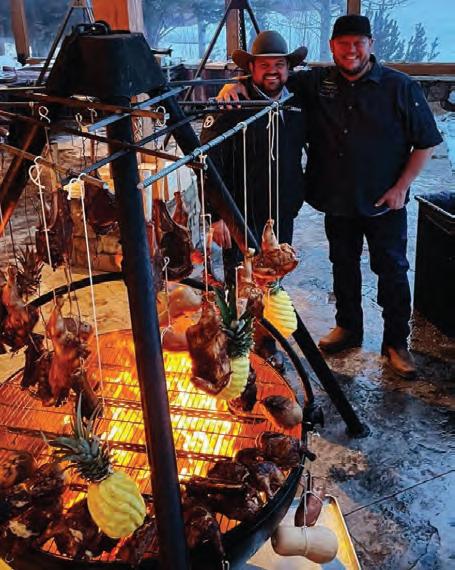
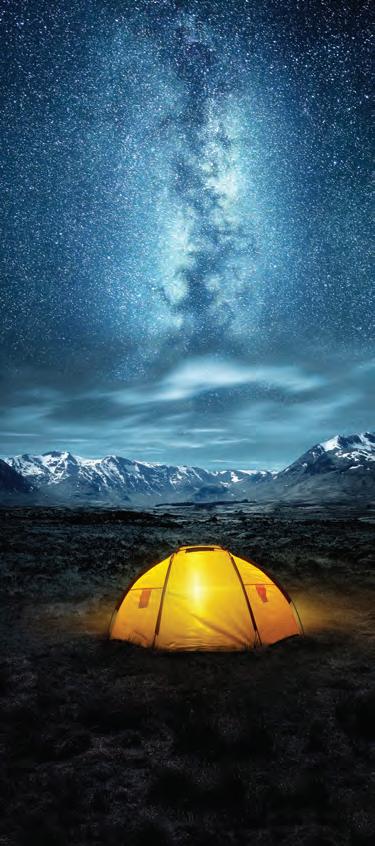
Sweet summertime is here again! Before you embark on your outdoor excursion— from fly-fishing on the South Fork of the Snake to mountain biking the endless Big Hole trails—remember to be a good steward of the land and leave it better than you found it. (To learn more about Idaho’s public lands, turn to page 56.)
The Leave No Trace Center for Outdoor Ethics has coined seven easy-to-remember principles to take with you on any and all outdoor excursions. From remote wilderness to your own backyard, this framework is an important code for all.
The Leave No Trace Seven Principles
• Plan Ahead and Prepare
• Travel and Camp on Durable Surfaces
• Dispose of Waste Properly
• Leave What You Find
• Minimize Campfire Impacts
• Respect Wildlife
• Be Considerate of Other Visitors
©1999 by the Leave No Trace Center for Outdoor Ethics: LNT.org


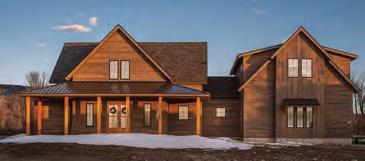

Newly constructed 5-bedroom, 5.5 Bath 4,000 finished square foot home on a 4.54 Acre Lot. High-end features include white oak hardwood floors, river lagan carpet, alpaca limestone masonry, alder kitchen cabinets, heated flooring in the master bathroom, linear gas fireplace, and Viking appliances. Front and back porches plus outdoor fireplace. This gated community’s amenities include a private launch access to the Teton River and close proximity to the national forest trail system. River Rim has some of the most coveted and exclusive fishing in the Teton Valley. Estimated completion March 2022. | $2,400,000
158 spacious acres west of Felt, Idaho with wide open views of the Grand Teton Peaks and mountain range. Just 17 minutes from Driggs. Perfect for a private home and the grazing of cattle or horses. Complete with Water Rights. Frontage on Badger Creek which flows seasonally. A year round spring creek runs through the property. | $1,500,000
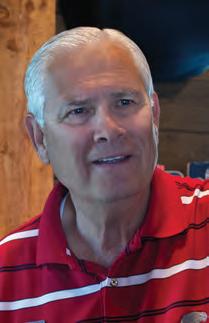

Very rare Park Home in Tributary/ Huntsman Springs. 4 bedrooms, 3 bath, downstairs living. Almost 2,600 finished square feet. Being sold fully furnished. Corner lot. Tributary is an exclusive golf and fishing club. Full Wellness Center. New Clubhouse under construction. David McLay Kidd designed 18 hole golf course. 7 private fishing lakes. Private/Gated Community. Full Single Generation Golf Membership included. | $2,000,000
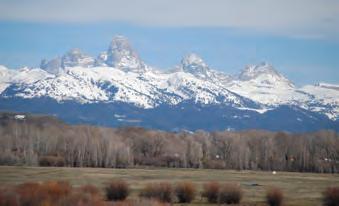

Idaho
West Side Yard is the oldest bar in Victor. Originally opened as the Timberline in 1940, the Mills brothers purchased the bar and restaurant in 2018 and renovated the space, giving it a modern and industrial flare. A Teton Valley hotspot, West Side Yard delivers a fresh vibe and great food and cocktails. This summer, sip the mountain-inspired Through the GrapePine.
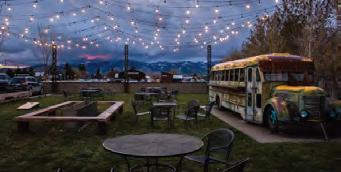

1.75 oz. gin
0.5 oz. lemon
0.75 oz. fresh-squeezed grapefruit juice
0.75 oz. honey-pine syrup
(yes, as in from a pine tree)
1.5 oz. soda water
Pour soda water into glass. Add other ingredients to cocktail shaker; shake and pour. Fill glass with ice and garnish with lemon wedge and pine needles.

This summer marks the fortieth anniversary of a celebrated summer favorite: The Teton Valley Balloon Rally. A local nonprofit, the event has kept the magic of ballooning alive for visitors and residents each July with a vibrant weekend that’s a visual treat for all. Held July 1-4 at the Teton County Fairgrounds, look to the sky as mammoth balloons are inflated at the crack of dawn and launched, floating high above the valley floor in a kaleidoscope of colors.
The event has been a summer staple since 1982, when Driggs-Reed Memorial Airport founder Fred Reed staged the inaugural rally. Today, it is run by balloon meister Margaret Rose Breffeilh and event director Virginia Powell Symons.
To view this exciting event, purchase an admission parking pass ahead of time and be sure to visit the website tetonvalleyballoonrally.com for the latest safety protocols as the event date nears. And on any clear summer morning, grab a cup of coffee, head to the porch, and take a moment to look up toward the Tetons. You just might see a colorful balloon or two adding a bit of extra beauty to the morning sky. Or, book your own private ride for the view of a lifetime.
Cecily Costa has more than twentyfive years of experience working with fine foods in San Francisco.
Now a Teton Valley resident, Cecily is bringing her love of food to the valley with her specialty grocer, Food Shed Idaho. Cecily’s idea: Bring the ingredients of a fantastic culinary experience home. Order delicious and gourmet items online for pick-up or delivery, or ship to friends and family.
Here are a few of her gourmet brands: Mieli Thun An Italian pure monofloral and multifloral honey company that produces a variety of exciting products.
Mr. Bing Freshly made in New York City, these spicy condiments are a hit, served on eggs, rice, pizza, meats, and more.
Mancini Pasta Italy-based pasta purveyors known for pasta made from their own wheat fields.
De Carlo For more than four hundred years, the De Carlo family has been creating their celebrated extra virgin olive oil.
Acquerello Rice Aged carnaroli rice known for its stable starch and enhanced flavor; best used for risotto. foodshedidaho.com
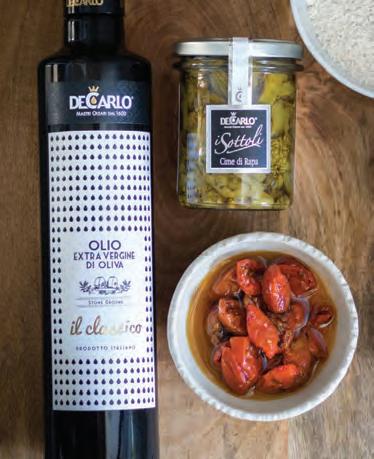
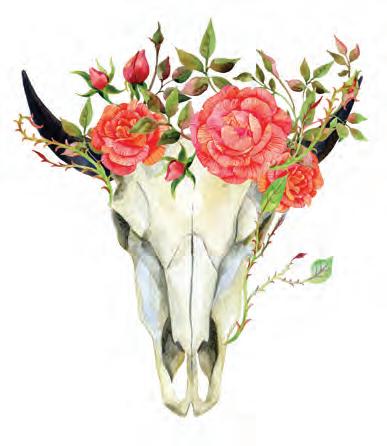







Teton Valley Aquatics (TVA) began its journey in 2014 when Teton County identified the need for an aquatic facility for the valley. This spring, board chair Barb Beller shared a look back on how far they’ve come on the journey toward achieving their goal: building a healthier community through the power of water.
2016 Local residents form Teton Valley Aquatics and develop an aquatic center plan with USA Swimming and the City of Driggs.
2017 Granted 501(c)(3) status, TVA organizes, works with nonprofits, and meets with potential land donors.
2019 A feasibility study is completed, as well as a geothermal study by Idaho National Laboratory to see if TVA can tap into geothermal water.
2020 City of Driggs selects the building site with support from TVA.
2021 A grant application is submitted to fund a portable pool to begin water safety and swim lessons.
TVA looks to continue developing their programs while pulling together funding and support from the community and beyond. tetonvalleyaquatics.org















This is all-in western living. A basecamp for the human spirit. It’s a rare but reachable respite amidst a confluence of adventure and luxury. Rich in wildlife, abundantly stocked ponds, and charming mountain town culture, this 1,500-acre low-density community is the Rocky Mountain West’s last best-kept secret. An invitation to discover more than place; but your place within it. TAKE A MOMENT TO
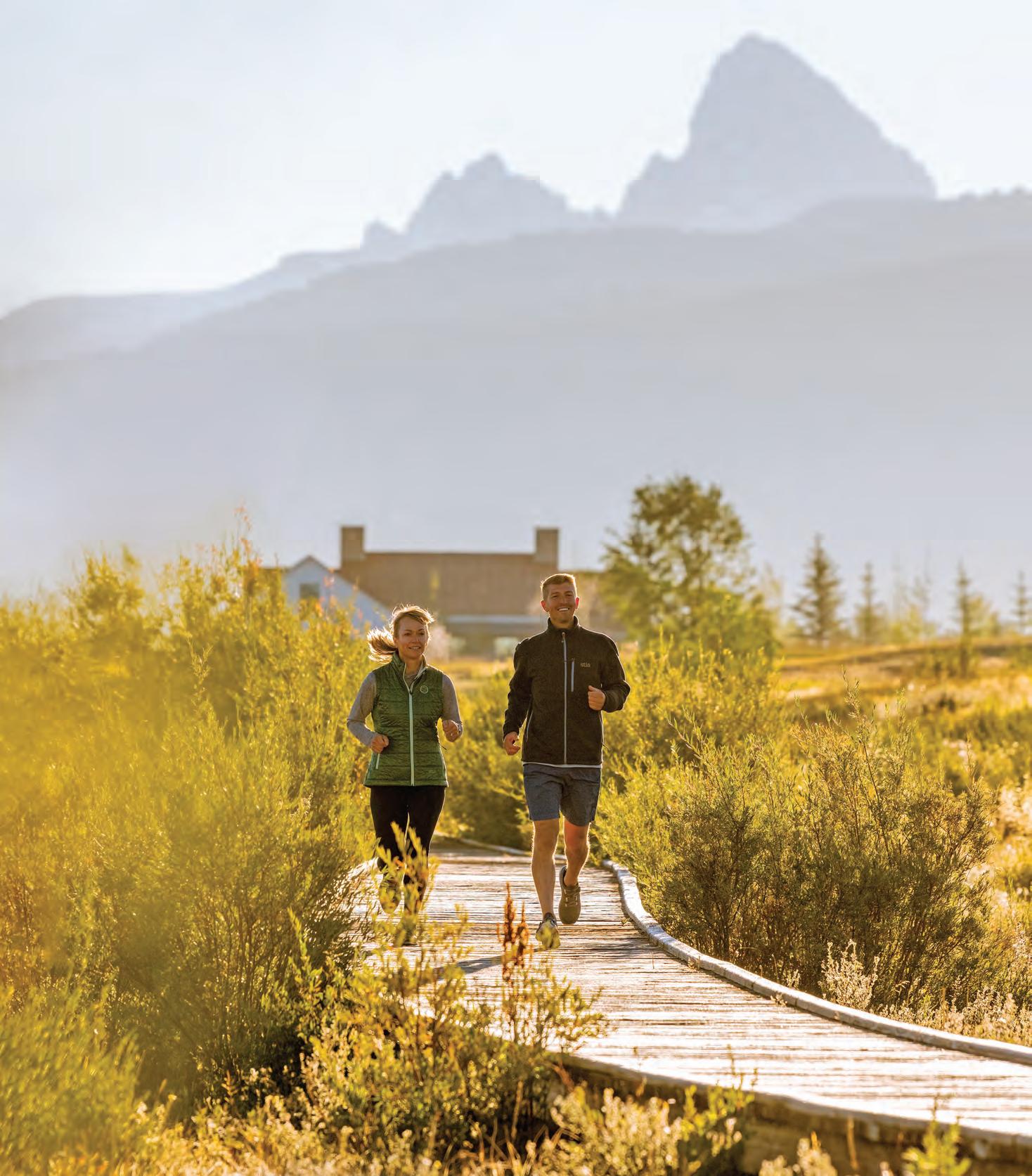

A long-time farming family, the Rivers moved from the coast of Georgia to Victor in 2019 to give high-altitude growing a go. Their operation, called Canewater Farm, grows certified organic vegetables and flowers available at the local farmers markets and sold wholesale to local restaurants.




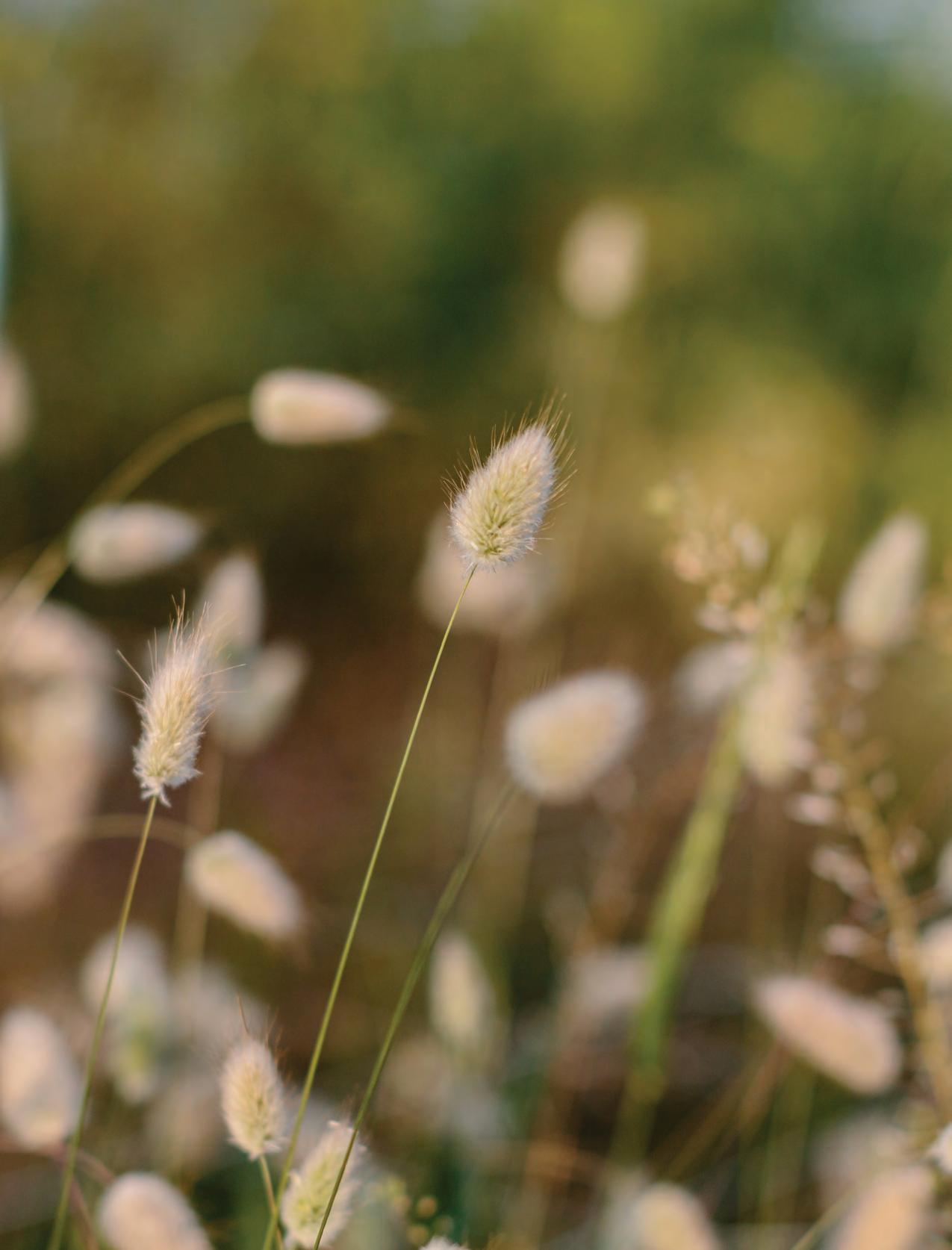







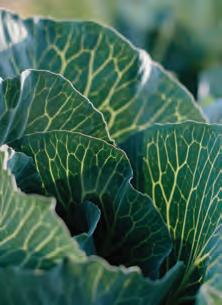
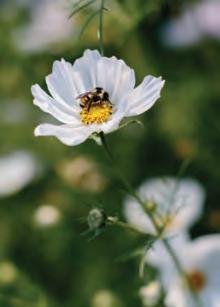



BY CHRISTINA SHEPHERD MCGUIRE PHOTOGRAPHY BY LARA AGNEW
How Georgia farmers pulled up stakes and pounded them into Teton Valley soil
I’m not usually one for eggplant. But, peering out from inside their pint cartons at the Teton Valley Farmers Market, these fairy tale eggplants spoke to me; their intriguing purple and cream-colored hues drew me in.
I was surprised to see eggplant on display at our high-altitude Idaho farmers market. (This might have been a first.) For sure, I could disguise these little gems in a sautéed goodness that wouldn’t be poo-pooed by my family. After all, I didn’t need to tell them what I was serving.
At first bite, my husband oohed and aahed over their creaminess, the little gems having been pan-fried in olive oil with just a touch of garlic. My daughter produced the same response after eating her entire serving and asked, “What are these?” It was then I knew I needed to buy more. When I returned the following Friday, however, they were gone. I wasn’t the only one wooed by their wonder.
“The head chef at Tributary wants to buy all of my fairy tale eggplants,” says Rafe Rivers, farm owner and manager at Canewater Farm in Victor, when I express my delight in their taste and texture.
You could say Rafe has more than a knack for growing specialty Southern crops like fairy tale eggplant, and shishito and Padrón peppers, at altitude. His vegetable variety sets him apart at the
market, as the presentation of textures and colors makes his booth look more like a work of art than a retail produce stand. And that would only make sense, since he’s married to full-time artist Ansley West Rivers. Her photographic practice focuses on the intersection of landscape and humanity.
Rafe and Ansley, along with their two children, Emmalou, age six, and Rowan, age three, moved to Victor from Georgia in August of 2019 after purchasing five acres, a home, a barn, and a greenhouse, and leasing an addi tional eight acres between Pole Canyon and Smith Canyon previously used to grow vegetables by long-time resident Georgie Stanley. The couple were no strangers to the area. They both had spent time in Jackson, Rafe working as a river guide and property manager, and Ansley working in the art world. They moved away in 2008 so that An sley could attend graduate school and Rafe could enroll in a farming program. After school, a family opportunity presented itself and they began a six-year farming journey on the coast of Georgia in Darien, growing a budding business from the ground up.
BELOW Canewater Farm has added some surprises to the typical offerings at the farmers market. Be on the lookout for specialty veggies like fairy tale eggplants and


Your visit to Teton Valley is not complete until you have experienced the surroundings from the air. Teton Aviation offers scenic flights that cater to the customer’s interests.

Turn your dream of flying into a reality! Flight instruction offered with the Teton Mountains as your training ground.
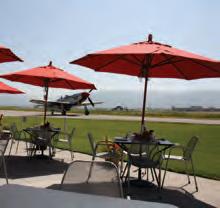
“For three years we came here to just poke around,” Rafe says. “We love the community. We had friends here, and every time we left, we wondered why. Now, we feel like the luckiest people in the whole world.”
The Teton region is lucky to have the opportunity to experience the Rivers’ work ethic and tenacity, too. They immediately dug their heels in, moving the farm across the country and figuring out what it takes to transition from


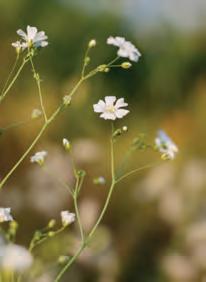
a low-altitude, humid climate to a highaltitude, semi-arid environment.
“Physically, it was really challenging to actively farm [in Georgia],” Rafe says. “We had to wear mesh suits because we were on the marsh and were covered in bugs … it was almost a deal breaker.

Coming here, I was surprised by the lack of bugs and I love the hot days. It is not even hot compared to Georgia.”
Despite Rafe’s familiarity with Teton Valley’s climate and his skill at farming in various regions, including Vermont and Uganda, the nuances of his new environment still caught him off guard. Tiny bugs (yes, there are bugs here) infiltrated his baby greens, an early June hail nearly demolished his entire crop of kale and collard greens, and his celeriac—a celery root crop he hoped to store through winter—never sized up. Weed pressure soon dominated his farmable acres (a challenge he had dialed in back in Georgia), and despite using a process called stale seed bedding—covering, irrigating, and allowing weeds to grow in beds before lighting them on fire—he could never get on top of the quack grass and thistle.
“[Eradicating weeds] is very timeconsuming,” Rafe says. “You need to take care of it so that it doesn’t become a bigger pressure exponentially. I’m trying to figure out how to grow cover crops because last year I spent a lot of money on compost instead of cover cropping. … I never want to take more from the soil than I give. .”
“I’m blessed to have a job that celebrates both food and community. I want to raise my kids in the outdoors and allow them to see where their food comes from.”
Rafe Rivers
Canewater Farm is
for River,
BOTTOM Each Friday at the market, the Canewater Farm stand is a visual treat all its own with its presentation of colors and textures.
Despite the challenges, Rafe had some big wins last season. His head lettuce (the beauty of which particularly caught my eye at the market) never bolted, but rather flourished. Radicchio, a cousin of cabbage and a veggie not usually offered by many Idaho farmers, grew really well. And his Brussels sprouts, while taking “forever” to grow, yielded beautiful trees of buds in the early fall.
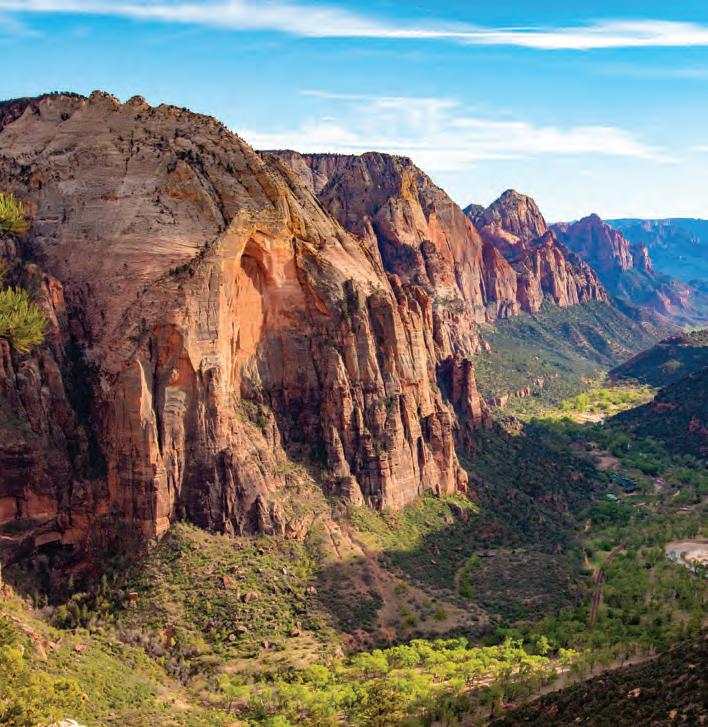


in Idaho Falls and Phoenix, plan your escape to warmer climates with RV There Yet? Your mobile base camp for a desert getaway, a family road trip in the off season, or whatever exciting destination calls your name. Now with brand new luxurious units added to the fleet. Call or visit our website to book your adventure today! rvthereyetrentals.net | (208)








Rafe attributes his successes to three things: “One, I always want to credit my employees. They made things happen last summer. I was just the architect. Two, we have really nice soil. And three, working on a lot of different farms—from San Francisco to Santa Fe to Vermont—gave me a perspective. I think it is important to honor the food by making it look really nice. I want it to be beautiful so that people feel they are getting a great product.”
“Rafe has an artistic eye … from planning the fields to what he brings to market,” Ansley says. “He wants to serve people beautiful food and won’t feed you holey lettuce. He loves how the different varieties look next to each other. It sets [our food] apart from the food in [typical] grocery stores … Plus, he truly believes in what he’s selling— we eat it, too—and that passion comes across at the market.”
Rafe promises me he won’t sell all the fairy tale eggplant this summer to his wholesale customers, which include Forage Bistro & Lounge, Citizen 33 Brewery, Warbirds, Teton Springs, Tributary, and Barrels and Bins. In return,





I promise to buy snap peas this year from his daughter Emmalou, who grows her own crop and has a little stand within his stand at the Driggs market. These promises we’ll keep to each other, as a local farmer and a loyal consumer, in a shared commitment to family values and community vibrancy.
“I’m blessed to have a job that celebrates both food and community,” Rafe says. “I want to raise my kids in the outdoors and allow them to see where their food comes from, alongside teaching the values of hard work and the challenges and beauties that come along with it.”
Teton Regional Land Trust presents
September 13-18
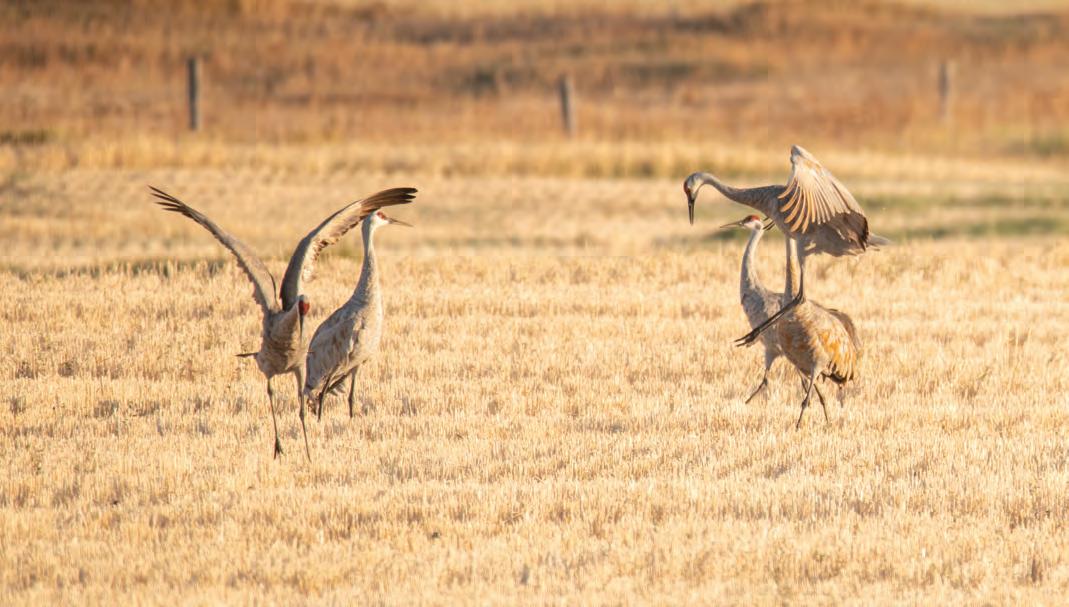









Armed with a master’s degree in sports conditioning, an extensive background as a competitive athlete, and a career spent working and training in gyms, Robin Lyons opened MTN LAB Performance Coaching in Driggs in 2018. She calls it the culmination of years of coaching at many different levels.

BY MOLLY ABSOLON PHOTOGRAPHY BY SHANNON CORSI
Robin Lyons looks and moves like an athlete, which makes sense when you learn about her background.
She’s a five-time All-American in track and field. She competed in bobsled and long drive golf, as well as the CrossFit Games and for the Canadian track and field national team. These days she’s doing some mountain bike racing. She’s worked in gyms for more than half her life, holds a master’s degree in sports conditioning, and is a certified strength and conditioning specialist and a functional nutrition practitioner. And yet, despite all her accolades and labels, when it comes to coaching, she isn’t just interested in working with elite athletes like herself.
“I love to help everyone,” Robin says. She moved to Driggs four years ago, as she puts it, “to live the dream.” She opened MTN LAB Performance Coaching in 2018, calling it the culmination of years of coaching at many different levels.
“I work with plenty of athletes who just want longevity,” Robin says. “Moms with four kids who want to go for a mountain bike ride, cook dinner, and still have energy. Grandparents who want to be able to get onto the floor with their grandkids without pain.”
Teton Valley has a wide range of fitness options designed to accommodate just about anyone’s goals, schedule, and pocketbook. MTN LAB specializes in
individual programming. Robin doesn’t post daily workouts on a white board for everyone to follow. Her athletes receive personalized programs designed through a detailed intake process.
“I want to see the whole human, every aspect,” she says. “All of it comes into programming a fitness journey that works for the individual.”
One of those athletes is Justin Bowersock, who lives in Victor. Like many Teton Valley residents, Justin has long been a mountain athlete who enjoys biking and skiing at a high level. But career, kids, and years have begun to affect his fitness. He started working with Robin two years ago.
“My experience has been fantastic,” Justin says. “Sadly, I’m at an age where it seems I need to train in order to train. Robin motivates me to work hard, to keep pushing myself, but to do it smartly. She has a remarkable ability to assess me on a given day and adjust my training accordingly. So, if I arrive exhausted from working late or if I’m still recovering from some hard outdoor activity, she’s still going to work me hard, but will keep me on the right side of injury or overtraining.”
Before someone starts working with MTN LAB, they fill out a questionnaire that explores everything from sleep


TOP Robin welcomes all levels of athletes to MTN LAB. Her focus: working with athletes of all levels who want longevity.
BOTTOM After an intake process, clients receive personalized programs designed to develop skill and competency.



“I want to see the whole human... all of it comes into programming a fitness journey that works for the individual.”
Robin Lyons


ABOVE Robin connects with a client during a remote session. MTN LAB offers onsite and remote coaching, personal training, and health and lifestyle coaching. RIGHT Robin tests her strength during a workout with box jumps.

patterns and diet to what a typical day looks like. They are then analyzed by the gym’s InBody 570 Composition Analyzer, which measures fat, muscle, and total body water data to establish a person’s base levels and identify structural imbalances. With this information, Robin, or another MTN LAB coach, tailors a plan to help the client work toward his or her fitness goals in a realistic way that minimizes injury risk and maximizes gain.
Robin says it’s important to meet people where they are, rather than where they want to be, and to make sure they understand the “whys” behind the programs she sets up.
“I don’t want to make people dependent on me,” she says. “I am providing them with knowledge and helping them develop skill and competency. I’ve seen a lot of great things happen.”
MTN LAB maintains a small gym on the second floor of the Colter Building


in Driggs. Large west-facing windows make the room feel light and airy with a little bit of the outside coming in. Athletes can sign up for a specific time slot if they want coaching during a session or they can schedule a special check-in session with one of the coaches. They can also go during open gym using their individual program hosted on an app on their phone, including instructional videos from Robin. As a result, everyone in the gym is doing his or her own thing. Even so, Robin says, MTN LAB still feels like a community.
“We are individuals pursuing our own specific paths together,” she says. “It’s kind of like a relationship. We are walking down the same path, we have the same philosophy, but we are all on our own journey.”
MTN LAB currently offers on-site and remote coaching, personal training, and health and lifestyle coaching. Learn more at mtnperformancelab.com.



BOTTOM
Dick and his young family traveled across the northern end of the Teton Range by way of the Conant Trail,
BOTTOM RIGHT Dick is remembered today as a frontiersman, trapper, and guide whose immense knowledge of the region helped the Hayden Expedition survey what would become Yellowstone National Park.




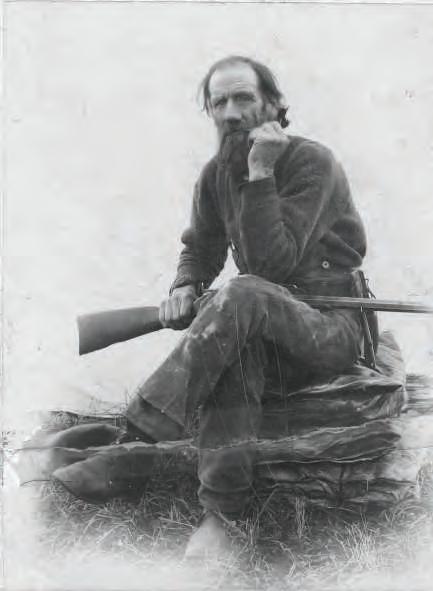

BY EARLE F. LAYSER
“An important fellow in these here-a-bouts”
The massive cottonwood trees lining the Teton River canyon bottom appeared stark and lifeless; the canyon edge above was blanketed with drifted snow.
Bundled in winter garb, some forty or fifty people had arrived on bobsleds and solemnly assembled near the canyon’s rim. The large gathering was for Richard “Beaver Dick” Leigh’s funeral.
The March 1899 graveside service, located north of today’s Newdale, Idaho, overlooked what had been Dick’s 160acre homestead; on the eastern horizon, the Teton peaks presided. And, as Dick himself had once written, “… it was a grand sight.” A neighbor’s words summed it up: “Beaver Dick was quite an important fellow in these here-a-bouts.”
Literate for the time and place, Dick had literally penned his own obituary in a missive to a friend: “I am the son of Richard Leigh formerly of the British Navy and grandson of James Leigh formerly Colonel of the 16 lancers, England. I was born Jan. 9, 1831 in the city of Manchester, England. Came with my sister to Philadelphia, U.S.A. Went for the Mexican War at close of ’49 … then came to the Rocky Mountains and here I die.”
An old English name, Leigh means “a clearing in the forest.” Frontiersman, trapper, miner, Army scout, ferry operator, government expedition and hunting guide, early settler, and diarist, his was a well-known and respected name in
the Greater Yellowstone region in the latter half of the nineteenth century.
Guided by Jim Bridger in 1860, the U.S. Army Raynolds Expedition conducted the first organized exploration of the Yellowstone region’s vast wilderness. They were undoubtedly surprised to encounter Dick, a solitary, buckskinclad Englishman with a Cockney accent, encamped in Pierre’s Hole (Teton Valley). Dick had been trapping in Teton Valley as early as the mid-1850s.
Dick’s features made him readily recognizable: thick red hair, heavily bearded, freckled, blue eyes, pockmarked face with a rather large nose. Among the Indians, he was known as “Ingapumba,” the red head; others called him “Beaver Dick,” for his prominent front teeth.
Dick guided the 1872 Hayden Expedition responsible for surveying the natural features that led to the establishment of Yellowstone National Park. Nathaniel Langford, a principal member of the survey party and, later, Yellowstone’s first superintendent, endorsed Dick: “…there is not a stream, lake, or range in any direction from us, for hundreds of miles, with which he is not familiar. He has the entire mountain region in his mind’s eye, like a map.”


Today, in the Tetons, Leigh Canyon, Leigh Meadows, North and South Leigh Creeks, and Leigh Lake are named after him. Hayden Survey members immortalized Dick’s Shoshoni first wife by naming the singular lake at the mouth of Cascade Canyon after her: Jenny Lake.
In the cold darkness of winter in 1876, in their one room cabin alongside the Henry’s Fork, not far downstream from the Teton River confluence, Dick suffered a horrific tragedy: Jenny and their six children contracted smallpox.
His entire family died within twelve days. Dick, though seriously sickened himself, survived. Dick’s great-grandson from his second family and his wife related the ghastly tale in Beaver Dick: The Honor and the Heartbreak (Yelm Mountain Publications, 1982): “…assisted by trapping comrades, Dick buried his entire family in the cold frozen earth.”
As the Jenny Leigh memorial explains today, because the ground was frozen, they buried the entire family “under the [unfrozen] cabin floor.” After that, Dick burned the cabin and its contents to prevent spread of the disease.
Weakened, Dick complained of health issues, injuries, and loneliness; the heartbreaking disconsolate loneliness that deep grief imparts. “… I am so lonesome no matter how tyard [sic] I am.”

Flashback to a bitter cold winter night in 1862: While returning from Fort Hall, Dick stopped at a Bannock Tribe couple’s encampment. The woman, in the throes of childbirth, was the sister of Chief Targhee. Dick assumed the role of midwife and helped deliver a tiny girl, who was given the name Susan “Sue” Tadpole. The grateful father, Pam-PigE-Mena, known to settlers as Bannock John (he reportedly had massive scars from a grizzly bear mauling), promised the tiny infant to Dick to be his wife when she became of marriageable age.
In one of those stranger-than-fiction stories that have come out of the American West, in the spring of 1879, more than two years after the deaths of Beaver Dick’s wife and children, he married Sue Tadpole, now sixteen. Dick was three times her age.
Dick and Sue had three children— Emma, William (“Bill”), and Rose. Dick continued his seasonal routine accompanied by his new family. They traveled across the northern end of the Teton Range by way of the Conant Trail, camping at Jackson’s Meadows (features named by Dick); they hunted, trapped, and camped throughout today’s Teton Wilderness; driving their horse herd with them, the children rode burros.
In late autumn 1892, the Leighs wintered along the lower Teton River, a few miles north of his earlier Henry’s Fork cabin site. Beneath the river canyon rims, below 5,000 feet in elevation and among the sheltering cottonwood groves, the setting was relatively mild, with a concentration of wintering big game animals.
By 1887, large numbers of Latter-day Saint settlers had ascended into Pierre’s Hole. Although not a church member himself, Dick found himself in a key advisory and emissary role among the Latter-day Saints. Teton Basin under-

Beaver Dick’s Gravesite
Beaver Dick’s gravesite is located ~4 miles north of Newdale, Idaho, on the breaks of the Teton River on private farm land. It is enclosed by a white vinyl fence; there is no tombstone or public access. The county road paralleling the north side of the river leads to what was once a corner of Dick’s homestead property. An old decaying wagon (actually a manure spreader box) located roadside there has an affixed brass interpretive plaque. It generally directs to Dick’s homestead and gravesite, but also incorrectly states that Dick guided the first ascent of the Grand Teton, by Hayden Survey members.










went rapid change. The nearest settlement from Dick’s homestead, only three miles away, was Wilford, Idaho; by 1887 it boasted a post office and school. Dick became a school trustee. Writing in his journal, he reflected: “I ave [sic] the pleashur of knowing that I ave led the settlements of the snake river…”
Dick proved up on his squatter’s claim along the lower Teton River. Government Land Office Records show his homestead patent (No. 1799) was granted by President Glover Cleveland on July 8, 1895. His home consisted of two log houses connected by a breezeway. The family had a large number of buckskin horses, a milk cow (supposedly the first cow brought into the area), and a garden. They cut and stacked wild hay. At times, a good number of Bannock Indians, to whom Dick was related by marriage, would visit and camp within the cottonwood groves on his river bottom property.
By the late 1890s, although he continued guiding hunters, Dick had begun to suffer from poor health. Fremont County records show he sold 120 acres of his homestead in June 1898 to William A. Hague, a hunting acquaintance.
After Dick’s passing, Sue lost the remaining forty acres of their homestead in lieu of payment of taxes. She eventually moved to the Fort Hall Reservation, where she and two of her children are buried in the Episcopal Mission Cemetery. As she was dying, it is said, Sue wept because she was unable to be buried next to her husband along the Teton River.
Created in 1964 to memorialize Dick Leigh, the park is located seven miles west of Rexburg, next to the Henry’s Fork Bridge crossing on State Highway 33. Camping, picnicking, and interpretive facilities are provided. People frequently assume Dick is buried there, but he is not.
Sue, and daughters Emma and Rose, are buried in monumented graves at the Episcopal Mission Cemetery at Fort Hall, Idaho. There is also a memorial at the Fort Hall cemetery for Susan Leigh’s parents, Bannock John and his wife Tadpole, gravesites unknown. Dick’s son, William, at the outbreak of World War I, traveled to Shelby, Montana, to become a pilot. While there he died from influenza and was buried in an unknown location.
The site of the tragic deaths of Jenny Leigh and her six children on the bank of the Henry’s Fork is memorialized and poignantly interpreted. Located six miles west of Rexburg off State Highway 33, it
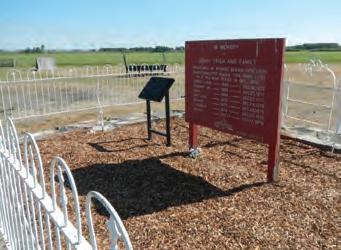

is on BYU-Idaho Livestock Center grounds. BYU does not allow general public access to the site, but self-guided or small group tours can be arranged. The site and signage are maintained by the Rexburg Chapter of the Daughters of Utah Pioneers.
Descendants of Beaver Dick, through his daughter Emma’s marriage to Kit Carson Thompson, still reside in the St. Anthony, Newdale, and Teton, Idaho, areas.
Except for the general topography, the landscape Leigh knew 120 years ago is unrecognizable today. Overseen by the Bureau of Reclamation and promoted by politicians, who ignored environmental objections, the construction of Teton Dam, a 305-foot high earthen structure, was completed in 1976. It was located only a few miles upstream from what was Beaver Dick’s homestead location. Catastrophic failure of the dam occurred shortly after it filled. Along with loss of life, the calamitous downstream damages were calculated at two billion dollars. In the canyon where Beaver Dick’s homestead and cabin had been located, the debris-filled flood water deposited coarse sand and gravel, scouring the channel and canyon walls, and destroying the original cottonwood gallery forest. His grave on the rim within farm fields was not impacted; but downstream, the Jenny Leigh cemetery site was severely flooded, requiring it to be completely restored. The town of Wilford was wiped from the map.



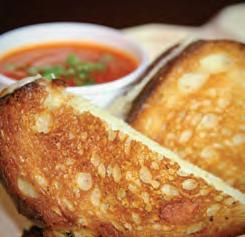







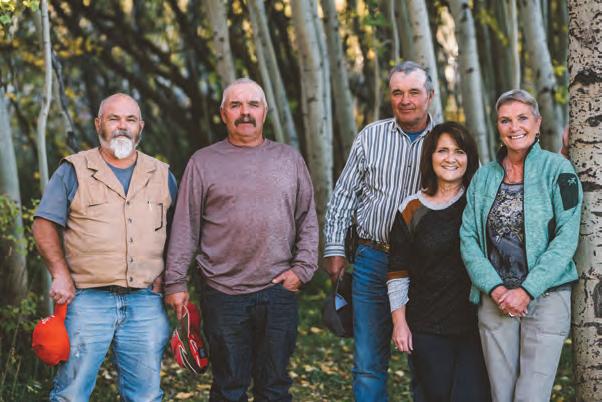
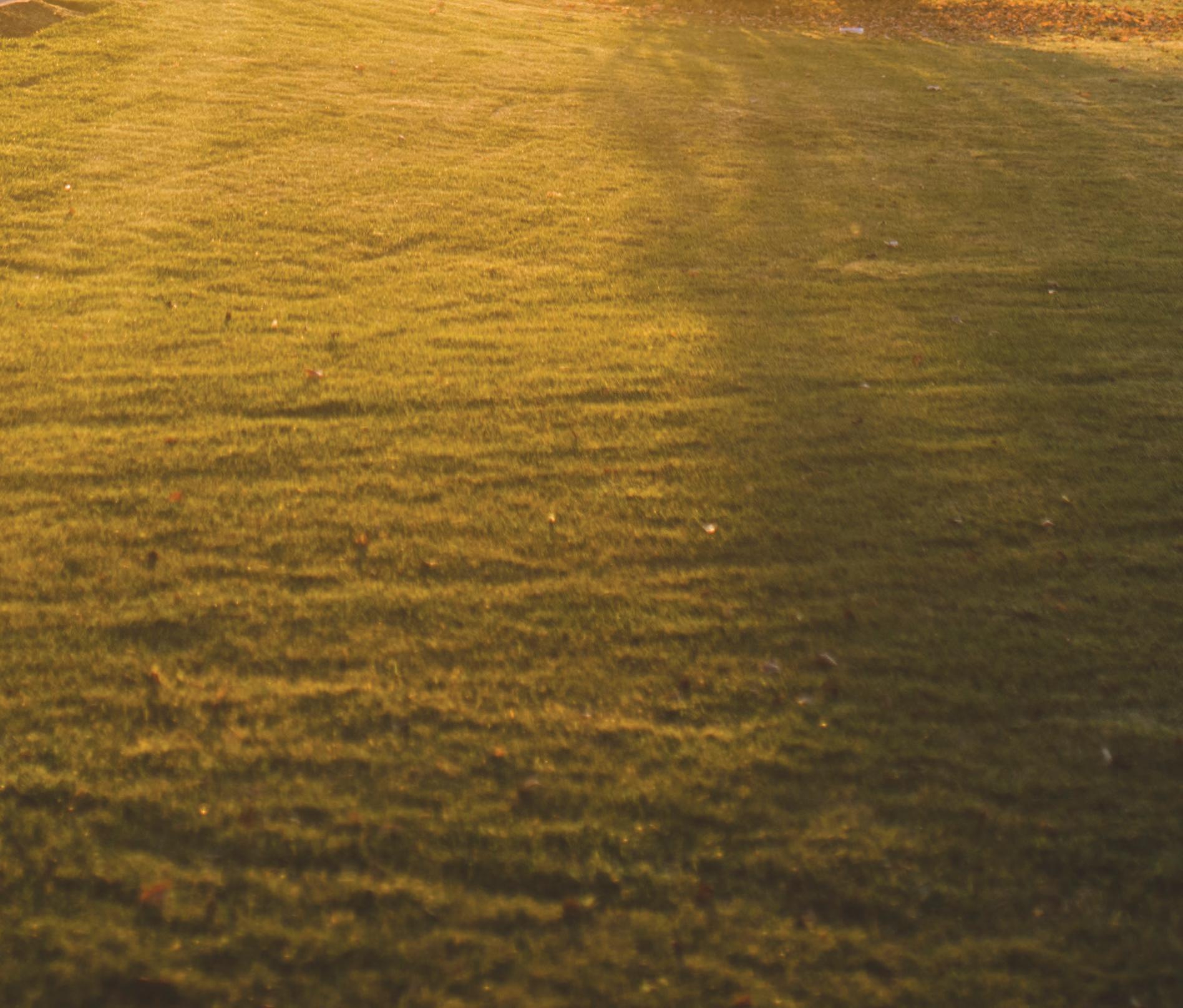
ABOVE Trudy (Green) Treasure prepares the spread for another Green family hotdog roast. In the winter, this monthly gathering turns into game night.
LEFT Green siblings (left to right) Dave, Steve, Craig, Trudy, and JoAnn are fifth generation descendants of Austin Greeley Green and Sarah Green, one of the first families to settle in Alta, Wyoming.
BELOW The Greens enjoy a late-summer evening by the campfire on the family’s Wyoming land.

BY JUDY ALLEN PHOTOGRAPHY BY CAMRIN DENGEL
Pioneer family perseveres
The residents of the tiny town at the western foot of the Teton Range wanted a post office. By 1904, a growing group of homesteaders, many of whom were members of the Green family, was populating this isolated corner of northwestern Wyoming.
But in order to be granted a post office, the community needed a name. Residents decided on “Aleane” (origin unknown), but then discovered, by post office rules, they were required to vote on a name and needed to add a second choice. Ernest Green suggested his wife’s name, Alta. When the votes were counted, “Alta” won and the community had an unexpected name that remains to this day.
Alta Green’s great-granddaughter, valley resident and Teton Middle School secretary Trudy (Green) Treasure, tells this story with pride. Since 1890, Green descendants have lived in and farmed the area around Alta. Family stories compiled in Ernest and Alta Green, Their Ancestors and Descendants, written in 2011 by Greg Green, son of Oscar and Davida, relate the rich history of the Greens of Teton Valley. As unofficial family historian (and my guide to the family tree), Trudy pulls another legend from the volume, this one about the first Green to arrive in the valley.
It’s the year 1890, and Austin Greeley Green has just moved his family to the farmland that would become part
of Alta a few years later. At least, he moved one of his families. According to Trudy, Austin was a polygamist with another residence in Menan, Idaho. By that time, polygamy was no longer legal, although still practiced by Latterday Saint outliers. Because he had two wives and two families, Austin was arrested and sent to prison in South Dakota, where he stayed for fourteen months. Upon his release, he learned that the state of Wyoming wasn’t prosecuting polygamists. His solution: take one of his families just across the Idaho border to Wyoming, where he homesteaded 160 acres directly south of where St. Francis of the Tetons Episcopal Church now stands. His brother, Robbie, arrived to homestead 160 acres directly east of Austin’s property. In 1905, Austin’s son, Ernest, moved as a young man to homestead another 160acre parcel east of his Uncle Robbie’s. George B. Green, another son of Austin, claimed the last 160-acre parcel, forming a contiguous Green family holding of 640 acres. All the land south of Teton Creek from today’s Teton Teepee to the base of Teton Canyon was owned by
Greens, earning the area the apt nickname of “Greenville.” Today, Ernest’s acreage is still in the Green name, and George B.’s great-grandchildren still own his property.
With a more than a century of history and seven generations in Teton Valley, the Green name is woven into the fabric of the community. Fourthgeneration Green daughters married Moultons, Calderwoods, and Kunzes, other notable homesteader families. The large web of extended Green family members owning valley businesses spans past to present.
In the early 1900s, Ernest and his dad Austin opened the Green Lumber Mill in Teton Canyon across from Sheep Bridge. Brothers Delbert and Oscar later took over operation of the mill. From 1954 into the early 1970s, Oscar and his wife Davida owned and operated Green Grain Mill on Depot Road in Driggs. In the 1960s, Vada Green ran a bakery in Driggs. Ben Green owned the service station on Main and Wallace in Driggs and founded Green Excavation. His son, Scott, took over the business and just recently sold it. Also in the construction trade, the late Gary “Bush” Green owned Green Backhoe and Septic in the 1960s, while his son Craig now owns Greenville Backhoe and Excavation. Sixth generation Brooks and Andy own AK Concrete. In the 1990s, JoAnn Green was proprietor of the popular Main Street Grill in Driggs, and then purchased the North End Grill in Tetonia from her cousin Deck. JoAnn’s daughter, Alta, owns AltaTude Beauty. In other shirttail family connections, Sid,
“When you live in a place where your roots run this deep, why leave?”
Trudy (Green) Treasure




Sean, and Scott Kunz own Sure Green Lawn Services, David Kunz owns Teton Creek Auto Glass, and Sean Moulton practices law here. The family’s contributions to Teton Valley stretch far and wide. Steve is now the family’s lone remaining farmer, working land formerly farmed by his father, Bush.
With the unforgiving terrain and climate of Teton Valley, the Greens’ early ancestors did not escape tragedy. One
source of income for Ernest Green’s family was setting and checking trap lines. In the winter of 1917, Ernest’s fourteen-year-old son Elvin skied out to check the trap line in Teton Canyon. When he hadn’t returned by nightfall, a search was organized. His father and Uncle George found his body buried in an avalanche. In June of the same year, Alta and Ernest lost a baby girl. And in a cruel twist of fate in February 1920, fortyyear-old Ernest was also killed in an avalanche while checking traps on Spring Creek. Later generations of Greens were not spared tragedy, either. In Trudy’s family branch, mother Jeanenne lost a two-year-old when she drowned in Teton Creek and a six-month-old to the flu. “For our family, Teton Canyon is sacred ground,” Trudy says.
But when life has been hard, the Green family’s solidarity in Teton Valley has endured. A group of about a dozen, including Trudy and her siblings, have traditionally gotten together monthly for hot dog roasts in the summer and game nights in the winter. Such a strong family commitment keeps individual members tied to the valley. “When you live in a place where your roots run this deep, why leave?” Trudy says, a sentiment shared by her siblings.
Surely Austin and Ernest Green would be proud of having populated Teton Valley with their descendants. In turn, the industrious and resilient Green family has made Teton Valley proud.




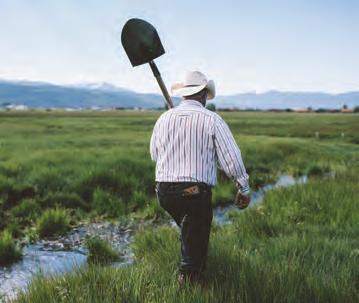
TOP TO BOTTOM Increased soil moisture and aquifer levels reduce reliance on sprinkler irrigation until later in the growing season.
Fields are flooded in the spring, when water is plentiful, to augment groundwater levels.
Groundwater flows slowly into springs, wetlands, and the Teton River, providing water in late summer when it’s most needed.
Greg Bagley places a tarp in an irrigation ditch in the spring to flood irrigate his field.





BY KATE HULL PHOTOGRAPHY BY CAMRIN DENGEL
The Teton Basin aquifer sustains our community, providing needed water for farmers, ranchers, and private wells, and replenishing the Teton River through groundwater flow.
When vested groups began noticing that ever-earlier spring runoff was sending vital water supplies down river, and eventually out of the area, rather than replenishing the underground reservoir, a plan for aquifer recharge took root.
As part of Friends of the Teton River’s (FTR) Farms and Fish initiative, the Teton Valley Aquifer Recharge Program works with local farmers and ranchers to manage water in the spring when it is available in copious amounts, storing it for use in the hotter, late-summer months, when the river and farms need it most. And it is not as complicated as it may sound.
Aquifer recharge occurs when surface water is absorbed into the ground and becomes groundwater. This typically happens through rain and snowmelt runoff, sprinkler irrigation, and water seepage in streams, ditches, and irrigation canals, according to FTR. Water in the aquifer moves much slower than surface water, and reaches the Teton River later in the season.
“We recognized that there are many threats to fish and the Teton River fishery,” says Amy Verbeten, executive director of FTR. “One of those is declining water flows and rising temperatures
in the Teton River. One of our big goals is to address those issues—to increase flows and decrease temperatures during the time when fish need it most, like July and August.”
The idea for an aquifer recharge program sparked when a group of individuals from the Teton Water Users Association sat down to talk about water-use challenges, opportunities, and shared goals. The group was stacked with diverse key players: FTR, agricultural producers, conservation groups, municipal and county leaders, and experts in hydrology and the economics of the rural West. Represented were the Teton Soil Conservation District, Farm Bureau, individual water rights holders, canal companies, the Henry’s Fork Foundation, and others.
“Aquifer recharge turned out to really address a lot of those shared goals and was tangible to move forward with implementing because it really benefited all of those interests,” Amy says.
So how does it work? Farmers and ranchers sign up for the program and are compensated for their time by way of a payment system that is currently funded through grants and donations to FTR. These agricultural participants take water that is coming down from


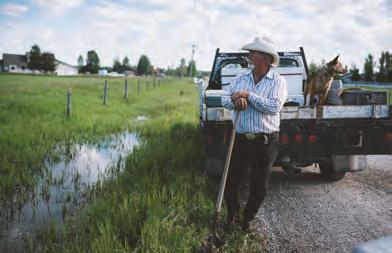
Water diverted in spring will show up as cold water in the Teton River in the typically hot months, when fish and farmers need it the most.
the mountains during periods of highest flow in April, May, and June and divert that water into canals that are unlined and very porous, or they spread the water out onto the field using flood irrigation. The water seeps through the soil and into the underground aquifer.
Seeing standing water in a field might strike a chord with some. “I think people drive by and they see a field full of water and they might think, ‘Oh, they’re just wasting water again,’” says Anna Lindstedt, FTR’s development and communications director. But it is all about timing.
“The unique hydrology of our valley means it takes about three months to see a response in the Teton River,” Amy says. “If you divert water near the mouth of the canyons that come out of the mountains in the foothills, where all the irrigation canals start, it takes three months for the water that is diverted up there to sink into the ground and then make its way into the Teton River.”
This means water diverted in spring will show up as cold water in the Teton River in the typically hot months, when fish and farmers benefit from it the most.
“It’s exciting to take something from an idea into practice and be able to have a measurable impact,” Anna says.
Last year, the program was able to add approximately 10,000 acre-feet of water back into the aquifer. One acrefoot refers to the amount of water it takes to cover one acre, about the size of a football field, with water one foot deep. (This is the equivalent of 326,000 gallons.) This led to an increase of about ten cubic feet per second (CFS) in the flow of the Teton River in late season. The amount of water diverted through recharge last year equaled nearly 5,000 full Olympic-sized swimming pools.
This summer marks the fourth season of the program. The long-term goal is to continue increasing the amount of early season diverted water and to create a sustainable program. And if you come across a flooded field, thank a farmer. They are likely helping to ensure the Teton Basin aquifer continues to supply the valley with water for decades to come.
For more information, visit tetonwater.org/featured-work/aquiferrecharge.







“This

BY

With more than 35 million acres of public land, out of 53 million total acres, Idaho contains more public land than all but three states in the country.

The brightest gem in the Gem State is without a doubt its public lands. From the Sawtooths and the Panhandle to the Tetons, the collective landscape is as beautiful as it is rugged, and worthy of exploring and preserving.
“In the West, outdoor recreation always seems nearby and available,” says outdoor enthusiast and Driggs resident Anna Kirkpatrick. Anna and her husband, Ken, made a goal on January 1, 2018, to spend time every single day outdoors, from neighborhood bike rides to full-day adventures hiking their favorite trails or exploring nearby public lands. At the end of April, the couple reached day 1,215, and they are still counting.
“Although we still enjoy taking trips to the national parks, it’s nice to just take a walk in the afternoon and see moose and cranes,” Anna says. “Living in this valley, with the ability to just drive a few miles and be in the wilderness, is priceless.”
More than six out of every ten acres in Idaho are public land, owned by either the state or federal government. With more than 35 million acres of public land, out of 53 million total acres, Idaho contains more public land than all but three states in the country (those are Utah, Nevada, and Alaska). Most U.S. public land is located in the western part of the country—less than 5 percent of land in the eastern half of the U.S. is federally owned.
In Idaho, Forest Service and Bureau of Land Management land make up the largest portions of public land, with 20.5 million acres and 11.8 million acres, respectively. Other federal land in the state is managed by the National Park Service, the military, and other federal agencies.
In Teton Valley, our backyard playground is public land: the Caribou-Targhee National Forest (CTNF). Residents and visitors alike cherish spending time in the forest, from hiking and backpacking in the Jedediah Smith Wilderness, to snowmobiling in Island Park and hunting and fishing in the hills and riffles to fill the freezer.

Nearly all the acreage in the CTNF is located within the Greater Yellowstone Ecosystem—the largest mostly undisturbed ecosystem in the Lower 48. Originally two separate national forests, the Caribou and Targhee national forests were combined in 2000, creating the more than three-millionacre national forest we have today. It includes the Curlew National Grassland near Malad, which holds a stretch of the historic Lander Trail, an Oregon Trail cutoff. The grassland also contains valuable habitat for the greater sage-grouse, mule deer, and other wildlife.
Three developed ski resorts are on CTNF land: Grand Targhee Resort on the Teton Basin Ranger District, Kelly Canyon on the Palisades Ranger District, and Pebble Creek on the Westside Ranger District. Many commercial ski resorts include private property, such as where lodges are located,

but the skiing itself typically takes place on public land. For example, if you’re standing in line for the Dreamcatcher Lift at Grand Targhee, you’re on private property, but when you’re skiing down from the top, you’re in the CTNF.
Every year, 2.5 million people recreate on the CTNF, from enjoying thousands of miles of trails for hiking, off-highway vehicle (OHV) use, biking, horseback riding, and snowmobiling, to skiing, hunting, fishing, and birding. The forest contains segments of the Continental Divide National Scenic Trail, Nez Perce National Historic Trail, Highline National Recreation Trail, Big Springs National Recreation Water Trail, and more.
Recreation on public lands adds a huge boost to the local economy. On a national level, outdoor recreation is an $887 billion per year industry, providing 7.6 million jobs. In Idaho, the outdoor industry is also an economic giant. Outdoor recreation results in $7.8 billion in consumer spending each year, and $2.3 billion in wages and salaries (with 78,000 Idaho jobs), with $447 million raised in state and local tax revenue. Visitors to the CTNF spend over $73 million annually.
“Having public land and public space is a benefit to so many people and so many things,” says Betsy Mizell, central Idaho director for the Idaho Conservation League. “Number one, it’s a [necessity] to wildlife for them to have a place where they can roam and be, especially with so much development happening and with climate change.” She also points out the economic benefits. “People’s jobs depend on it,” Mizell says. “So, some people who work in the mining industry, work in logging, their lives depend on those resources.”
Mizell highlights the importance of protecting public
BENCH LAKES, located in the Sawtooth National Recreation Area near Stanley, Idaho, is a popular spot known for its five alpine glacial lakes.
land. “If you destroy a place, there’s no value in it,” she says. “There’s a lot of dollar gain in protecting public lands.”
Teton Valley’s Bureau of Land Management (BLM) lands are managed through the Upper Snake BLM Field Office, which is responsible for a cumulative 1.8 million acres in southeast Idaho.
Visitors come to BLM lands to enjoy blue-ribbon fishing along the South Fork of the Snake—an area that receives 250,000 visitors a year and is managed cooperatively with other agencies. The St. Anthony Sand Dunes are also a huge draw, with 250,000 visitors a year who enjoy riding UTVs, motorcycles, dune buggies, and other mostly motorized vehicles.
While many of the state’s national forest lands are fairly well known, BLM sites—which are often lower elevation, sagebrush-covered landscapes, unlike the more mountainous national forests—are lesser known.
“We’re a little underrated,” says Jeremy Casterson, field manager for the Upper Snake BLM Field Office. “I think the sagebrush is a little underrated. People want to see trees and peaks, which I love too… I think sometimes we understate the value of the sagebrush steppe ecosystem.”
Casterson points out that the BLM sites encompass valuable wildlife habitat and are often gorgeous, hidden gems. “It’s sometimes nice they’re a little bit more [of a] secret than some of the extremely well used Forest Service campgrounds, or especially the parks,” Casterson says, adding that one can find solitude at a sparsely used BLM site far more easily than in a place like Yellowstone National Park.

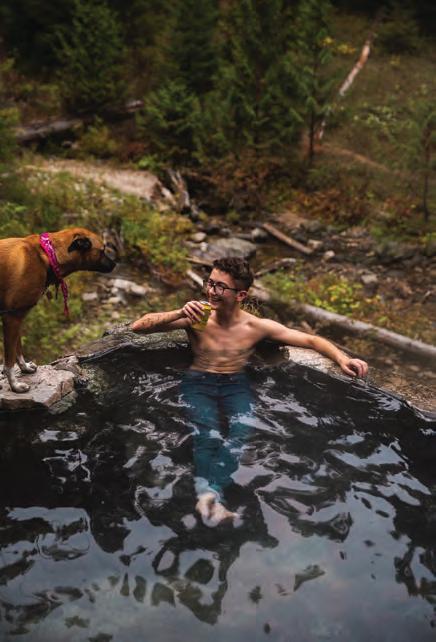
ST ANTHONY SAND DUNES near St. Anthony consists of 10,600 acres of shifting white quartz sand frequented by recreationists.

UPPER PALISADES is a fourteen mile outand-back trail leading to a high-alpine lake. Not up for fourteen miles? Head three miles from the trailhead to Lower Palisades Lake.
No matter your activity level or interests, public lands are for all. In fact, as a taxpayer, you are a public land owner. So take a walk, go on a hike, or hit the trails on a bike. But remember to know before you go. The activities allowed on public land depend on a wide variety of factors, including which agency manages the land.
Multi-use agencies, like the Forest Service and BLM, typically offer opportunities for not only recreation, but also livestock grazing and activities like timber harvesting, oil and gas extraction, and mining. Commercial activities, including harvesting firewood to sell or guiding clients on trips, are often allowed with proper permits.
“Our public lands serve as conservation and recreation areas, as well as places [for some commercial uses],” says Jen Piperno, an avid public land user and program manager for the Teton Regional Economic Coalition and the Teton Valley Chamber of Commerce.
“Public lands are also educational spaces,” she says. “They teach us about human history and colonialism, geologic time, and ecology, as well as wildlife and natural resource management challenges. I’ve been fortunate enough to be an educator on public land and to witness how these spaces inspire questions, spark reflection, and engender creativity.”
The National Park Service manages lands very differently. With a mission of “preserv[ing] unimpaired the natural and cultural resources and values of the National Park System for the enjoyment, education, and inspiration of this and future generations,” the rules are typically more restrictive in national parks and monuments.
For example, in most national parks, chopping down a tree would not be allowed. However, on the CTNF, with proper permits, harvesting trees is allowed, from collecting firewood to finding the perfect Christmas tree, to commercial timber operations under special permits. Likewise, cattle grazing is not permitted in most national parks, but such activities are often allowed on Forest Service and BLM lands, as long as permits are secured and certain rules followed.
Camping in national parks is often limited to developed campgrounds, and backpacking is restricted to a certain number of campers obtaining permits and staying in designated units or sites. The BLM and Forest Service provide developed campgrounds, but the agencies also allow for dispersed camping, which is far less restrictive.
However, wilderness areas—which are individually managed by various agencies—have different restrictions to protect them. These specially designated wilderness areas make up about 14 percent (4.8 million acres) of Idaho’s public lands, and 9 percent of the state’s total land area. Regulated by the Wilderness Act of 1964, they allow only non-mechanized recreation, so you can’t drive or bike in them, but you can hike or ride a horse. According to the Wilderness Act, “A wilderness, in contrast with those areas where man and his own works dominate the landscape, is hereby recognized as an area where the earth and its community of life are untrammeled
by man, where man himself is a visitor who does not remain.”
The closest wilderness area to Teton Valley is the Jedediah Smith Wilderness in the CTNF, which was established under the Wyoming Wilderness Act of 1984. It contains many popular areas for hiking, camping, horseback riding, skiing, hunting, fishing, and other activities.
Public land is shared land and, with so many different users, sometimes conflicts flare up. Controversies can involve consumptive, extractive, and commercial uses of the land, while prescribed burns can also cause conflict due to temporary closures and smoke making outdoor recreation unpleasant.
Jay Pence, district ranger for our local Teton Basin Ranger District, explains that one of the causes of conflict is changing use over the years. “On my ranger district, one of the larger controversies that I’m dealing with is the changing demographics of Teton Valley,” he says. “It used to be more rural and oriented toward equine use, horseback riding, and walking. It changed when people started using motorcycles here in the eighties.” Pence notes horseback riding, hiking, and motorcycles were the area’s primary uses until ATVs became popular and, more recently, mountain bikes and fat-tire bikes. He works to help meet the needs of all user groups.

THE BIG HOLE RANGE, rising above the western edge of the valley, is frequented by mountain bikers, horseback riders, and hikers in the summer, and backcountry skiers and snowmobilers in the winter.
On BLM land, Casterson says he doesn’t typically see a lot of conflict among user groups. “We do have livestock grazing on most of our acres, but we don’t hear of a lot of conflicts between recreators and livestock grazing, for example,” he says. “People go out and say, ‘Okay, well I see a few cows here,’ but it’s usually not anything that impacts their recreation experience,” though he does mention occasionally people will leave a gate open and cows will get out, frustrating ranchers.
“As long as people are using good stewardship and good ethics to look out for each other; the same thing as if you have different kinds of uses like if you have mountain bikes on the same trails as motorcycles, the vast majority of the time you have people looking out for one another and giving each other the right of way and making sure those uses coexist together,” Casterson says.



“

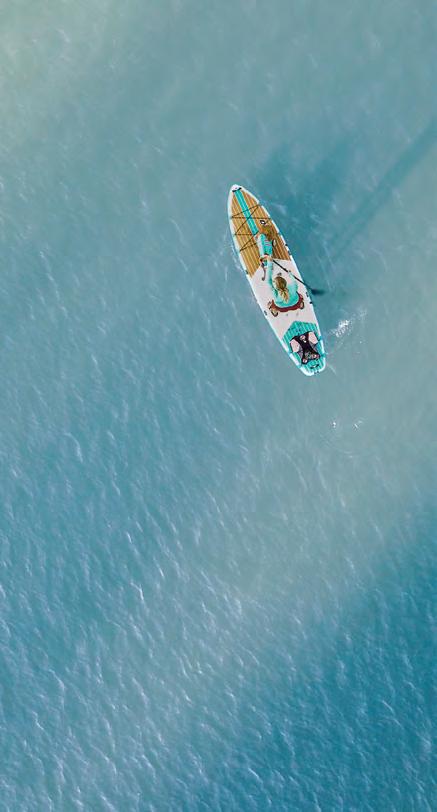

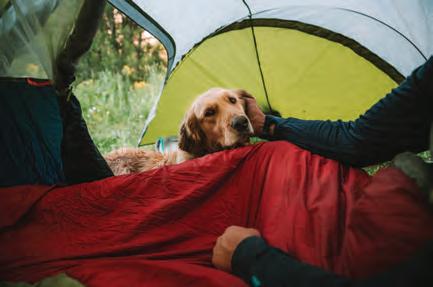


Being a good steward of public lands means working to protect the land and care for it, whether that translates to staying on a trail, picking up your trash, or spending your time volunteering. On the CTNF, volunteers do crucial work on everything from trail maintenance to fencing projects and stream restoration. Groups come together to hold work days to help with an array of projects.
For active users like Anna and Ken Kirkpatrick, taking the necessary steps to learn about good stewardship is key.

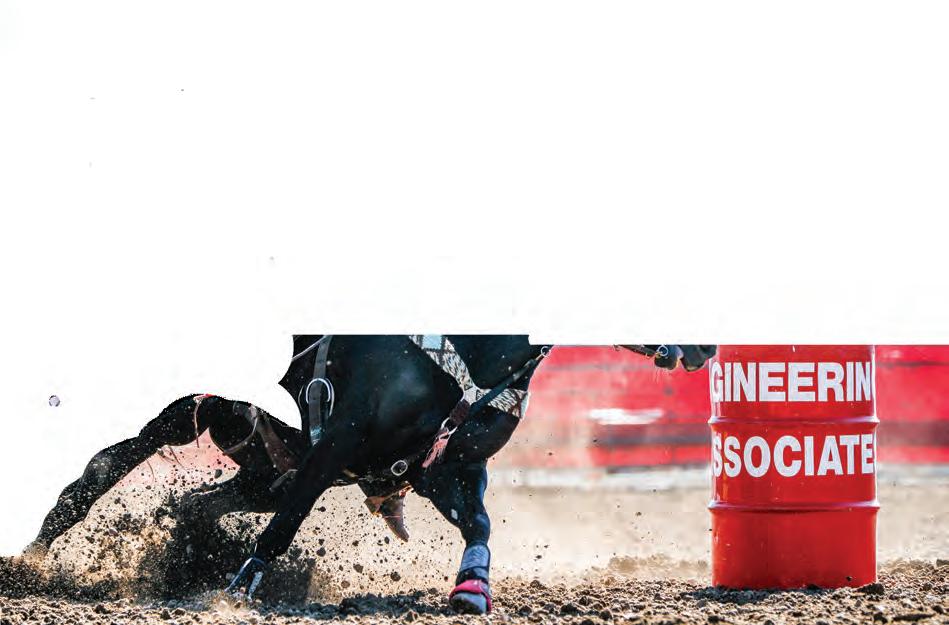

“Being a good steward of public lands means taking the time to find out what you should and shouldn’t do to keep our lands as pristine as possible,” Anna says. While basic steps like not riding on trails during mud season are more easily understood and practiced, others, she explains, like how to not disturb birds during nesting, take a little more education.
“The more that people feel like they have some stake in the long-term viability of these places, the more they’re apt to speak up for them,” says Becca Aceto, communications and outreach coordinator for the Idaho Wildlife Federation.
Good stewardship can also mean giving back. Jen Piperno has volunteered with a dozen environmental nonprofits, which she recommends as a way to familiarize oneself with local conservation issues and to participate in stewardship projects and research.
“As a recreationist, I’m conscious of my impact on public lands—avoiding highly trafficked areas when I can, always practicing Leave No Trace principles [see page 23], and abiding by the usage policies of the land that I choose to recreate on,” she says.
Land management agencies like the Forest Service and BLM also encourage people to stop by their offices to learn more, ask questions, and express their opinions.
“If you’re curious about your public lands, we would encourage you to come into your local ranger district office and talk to us,” Pence says. “That’s part of our job. We love to interact with people and let them know what we’re doing and see if they want to help.”
Silver Star continues to expand their fiber-optic network which provides the fastest internet speeds in the area and the reliable Wi-Fi you need to power all of your connected devices.





Teton Valley’s park-skating scene and the ladies leading the charge
BY CAMRIN DENGEL

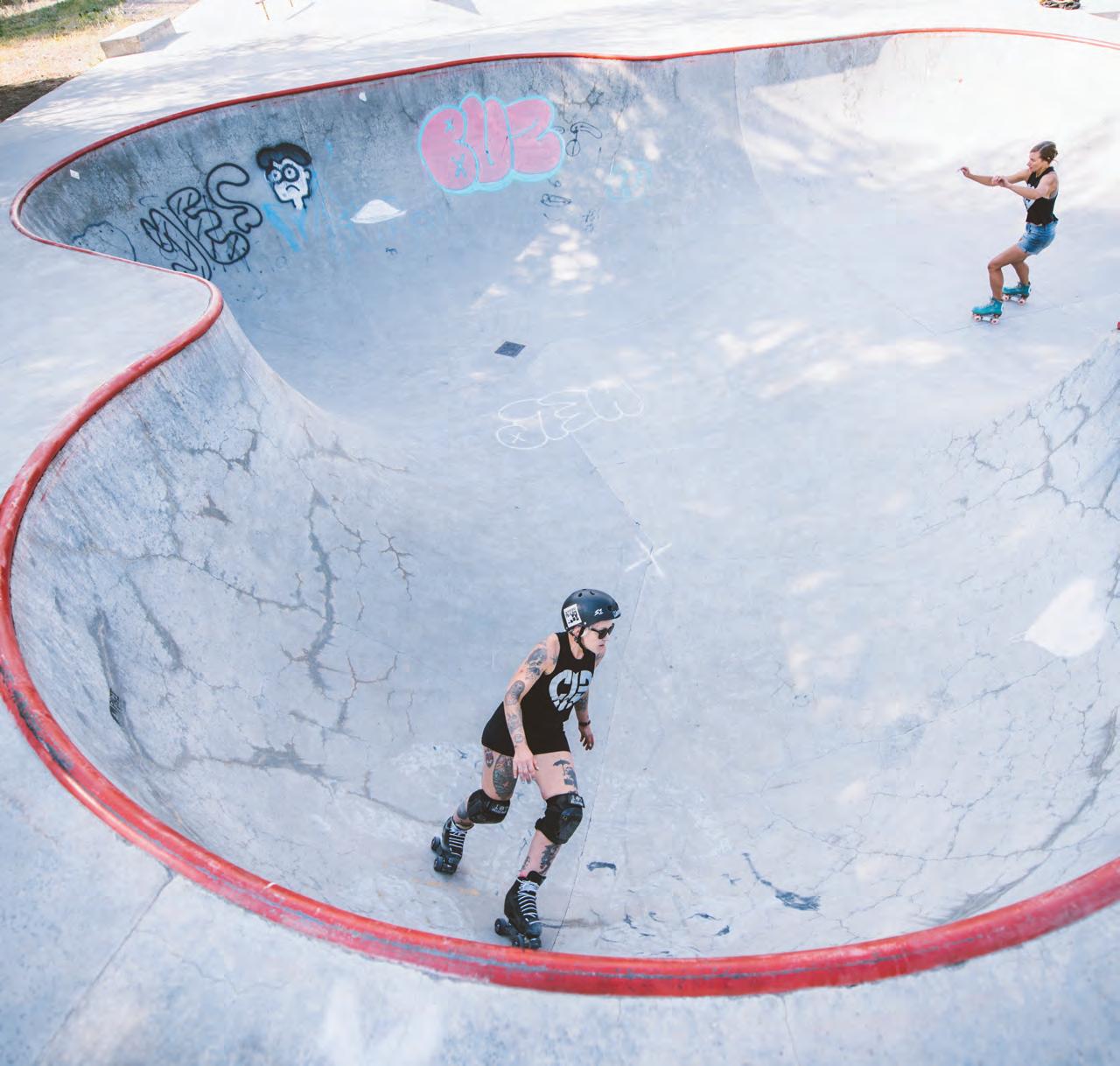
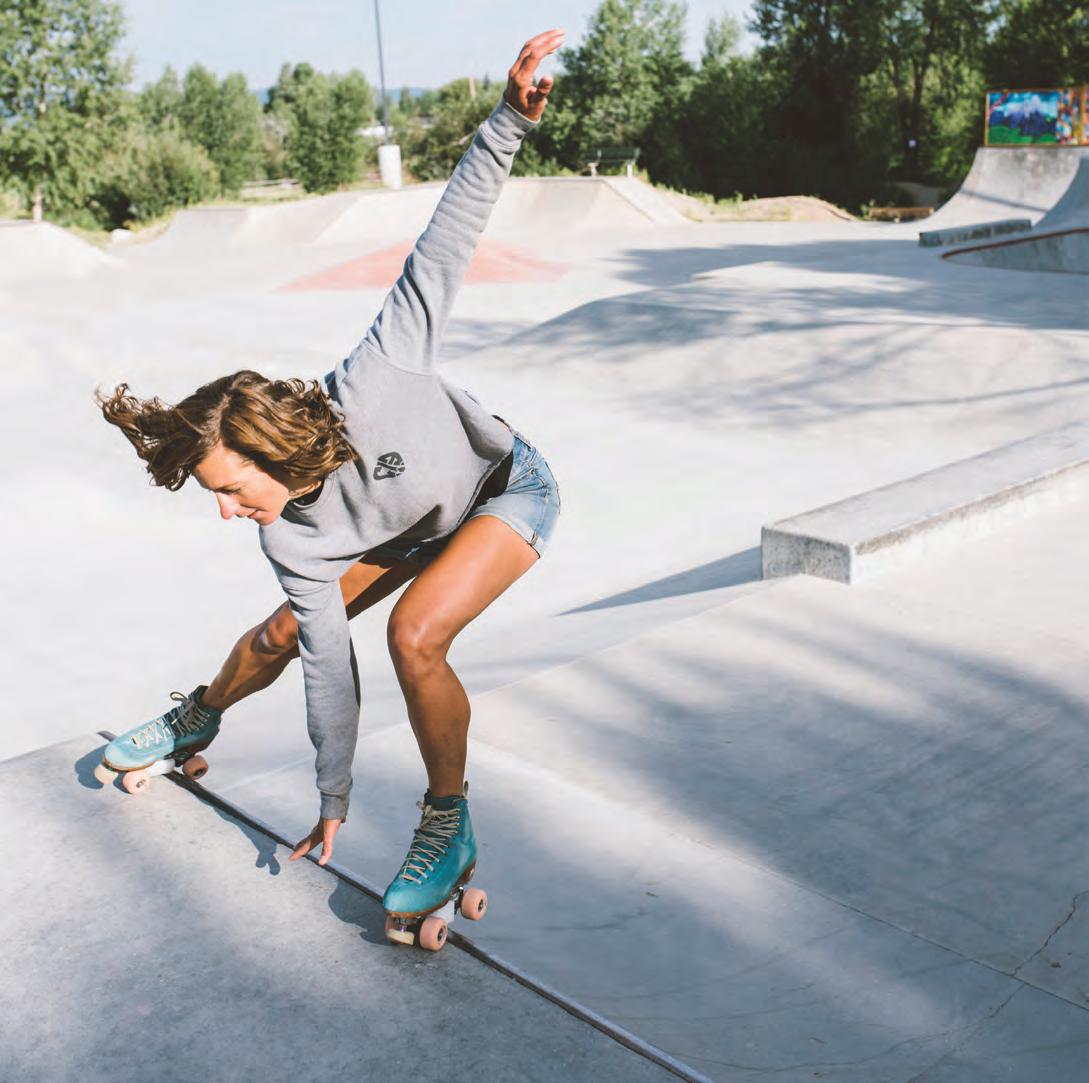
CIB, or “Community In Bowls,” is an international roller skating community claiming more than three hundred chapters throughout the world. Their mission? To spread the stoke for roller skating in skate parks, a mission that seems to have some teeth with the continued revival of the park-skating pastime made popular in the 1970s and 1990s.
TOP Allison Michalski practices a Spider-Man stall at the Fifth Street Skate Park in Driggs. A stall requires holding your position for two to three seconds on top of concrete coping. BOTTOM Allison Michalski, Jeanah Roberson, and Elyse Archer tackling another stall variation.


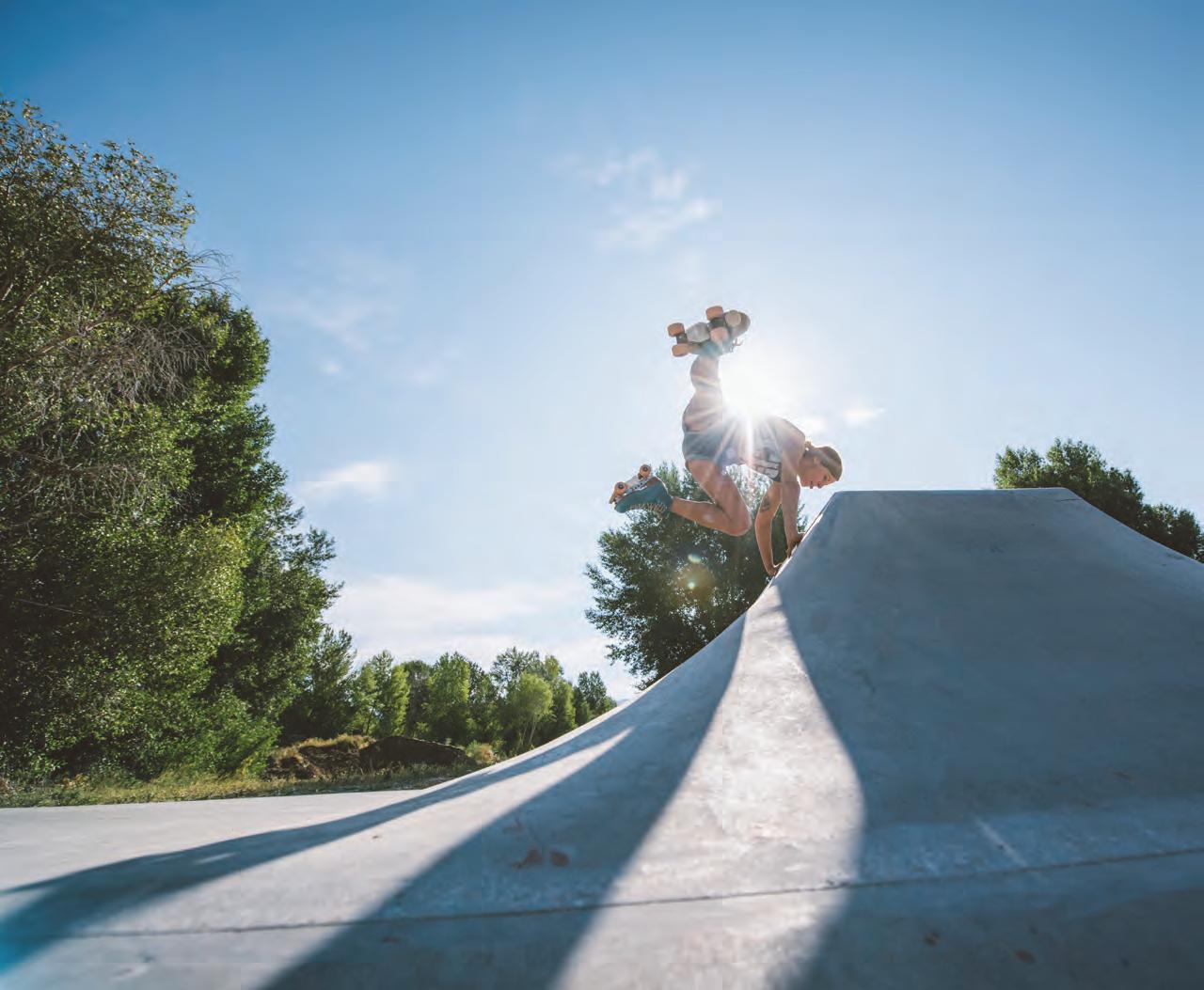
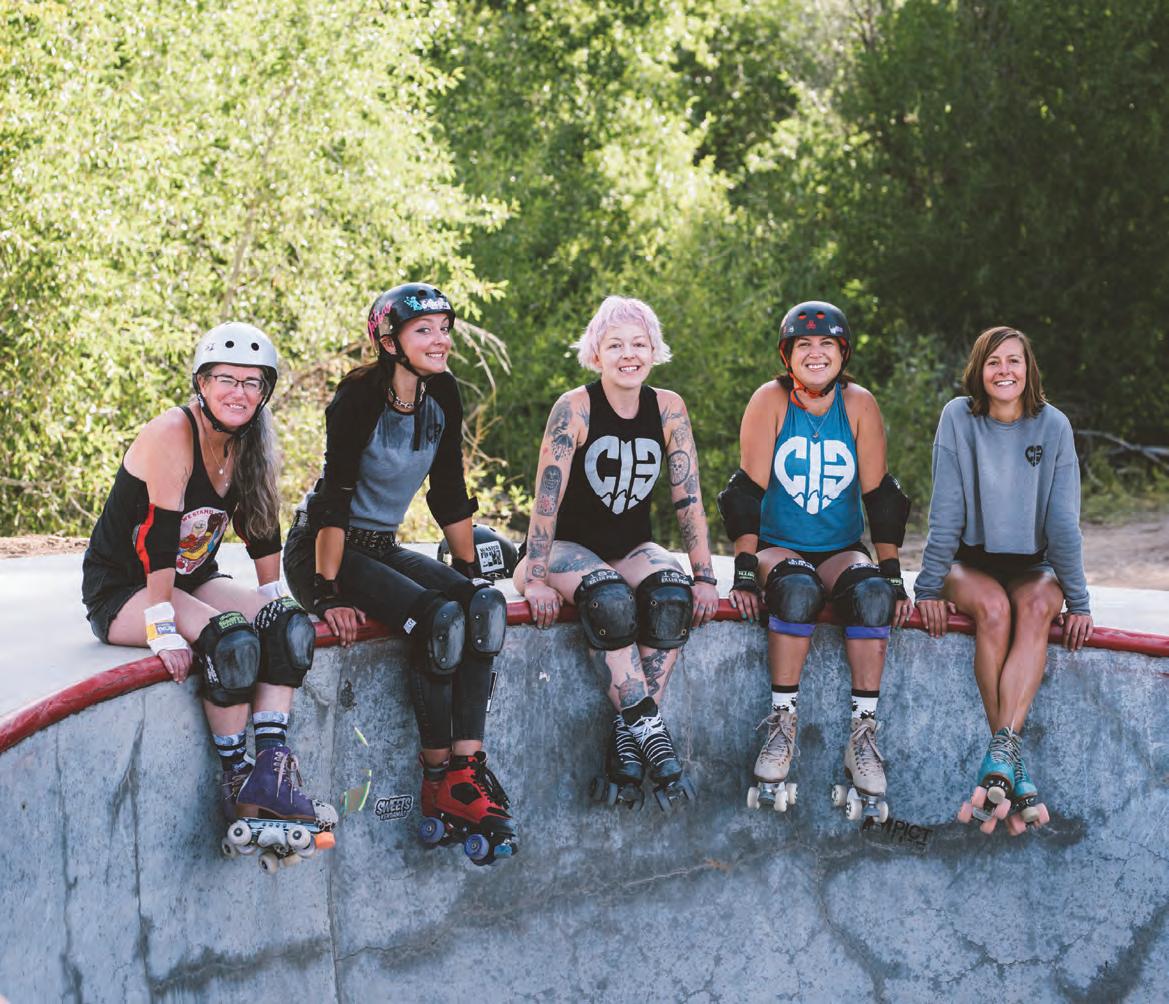
CIB provides online resources for skaters pushing the boundaries of vertical skating, a.k.a. park skating. They aim to grow the sport and push the legitimacy of roller skating globally, all while fostering long-lasting relationships with skate parks. CIB also develops hardware designed specifically for roller skaters. Though CIB was originally known as “Chicks in Bowls,” the group has recently expanded, taking on a more inclusive approach that welcomes skaters of all genders.
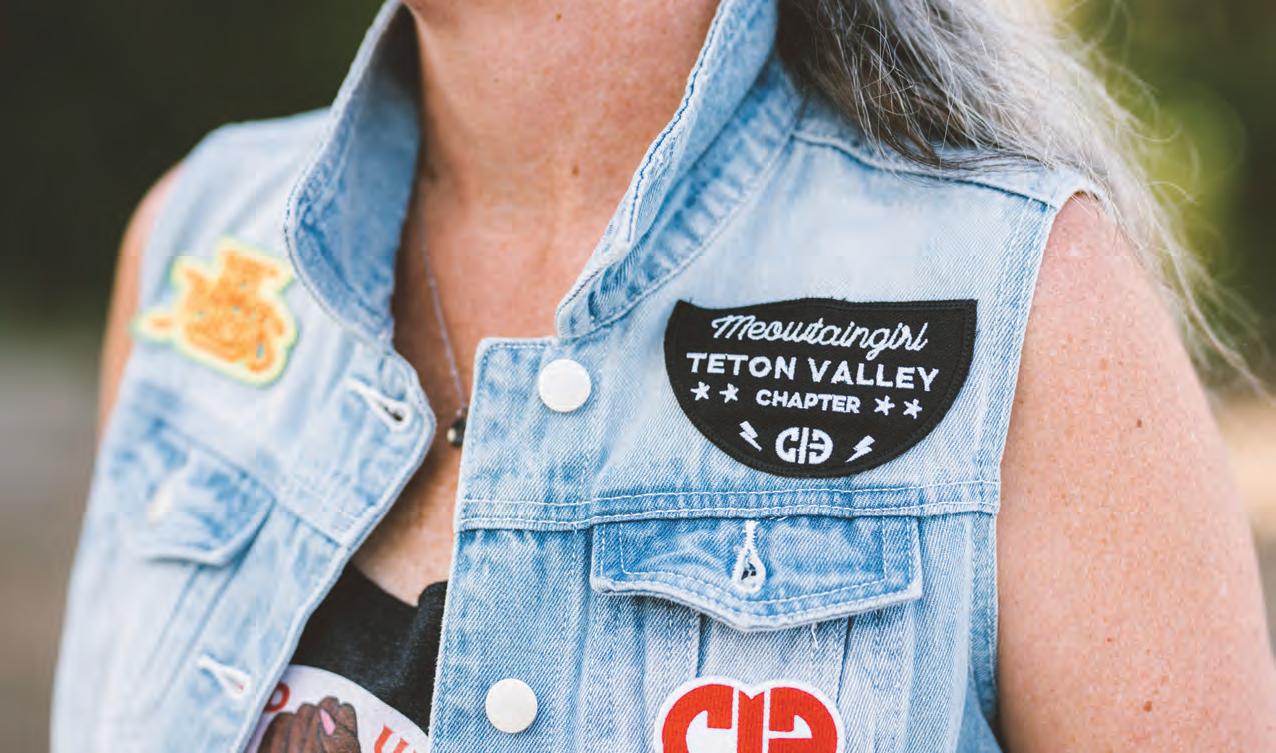



Teton Valley’s chapter, launched in 2019, is led by residents Allison Michalski and Elyse Archer. The group includes a variety of enthusiastic skaters who meet regularly to practice and improve their proficiencies. It’s a crew currently made up mostly of female skaters who have created their own little community that, although small, is part of something much bigger. And with big skills to match.

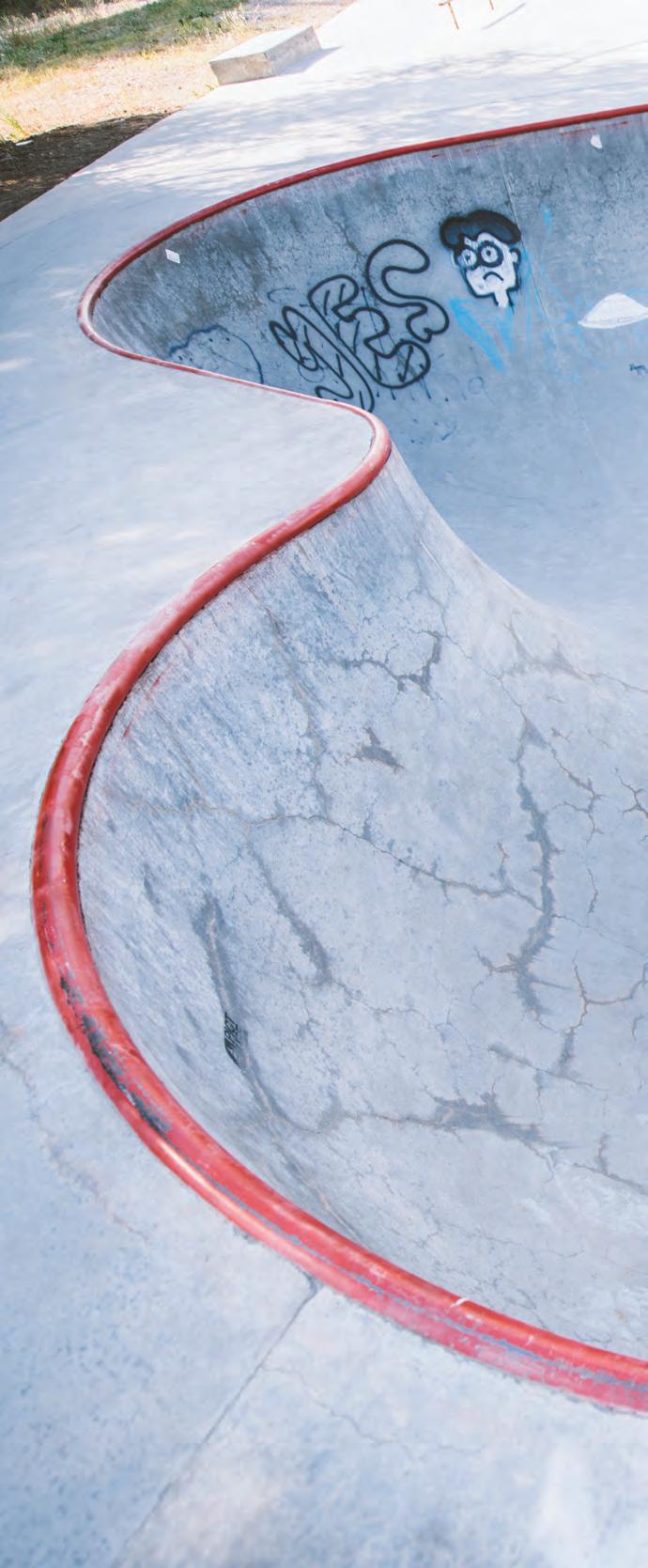



Keep up with the CIB Teton Valley chapter on Instagram at @cibtetonvalley.

ABC - Above and Beyond the Classroom Fund | Church in the Tetons | Community

Community Resource Center of Teton Valley Driggs Head Start | Earthfire Institute: | Education Foundation of Teton Valley the Teton River | Full Circle Education | Resource Center | The Learning Academy
Store | Mountain Academy Teton Science | Mountain Bike the Tetons | Mountainside
Rotary Club of Teton Valley | Seniors West Tetons Episcopal Church | Subs for Idaho 4-H | Teton County Idaho Extension

Teton County Idaho Search and Rescue | Teton | Teton Regional Land Trust | Teton Rock Gym Valley Balloon Rally Inc | Teton Valley
Community Recycling | Teton Valley Food Pantry
Teton Valley Health | Teton Valley Mental Health Foundation | Teton Valley Ski Education and Pathways | Teton Valley Youth Lacrosse Association Center | Valley Adaptive Sports | Valley Valley of the Tetons
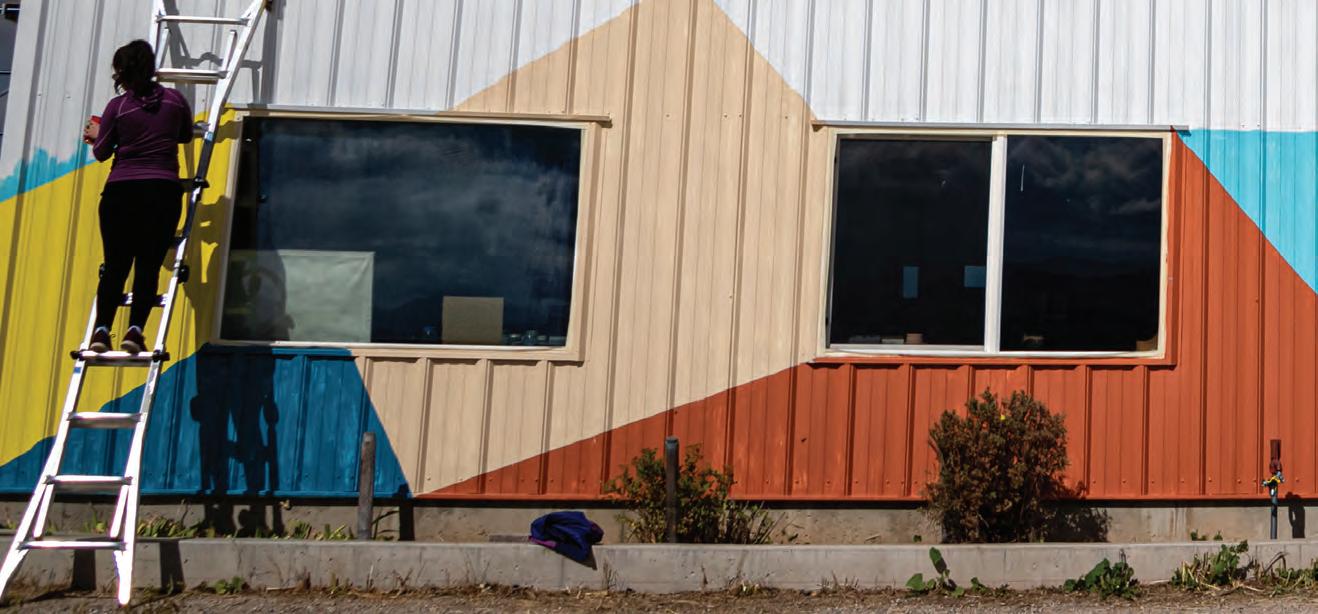
Classroom | Blake Chapman Young Eagles Scholarship
| Community Foundation of Teton Valley |
Teton Valley supports the nonprofit sector, which gives back in spades

Valley | Downtown Driggs Association | Institute: Wildlife Sanctuary & Rehabilitation Center Valley | Family Safety Network | Friends of Education | HAPI Trails - Horse Rescue | Hispanic Academy of Teton Valley | Lucky Dog Thrift Science Schools - Teton Valley Campus
Mountainside Institute | NOLS Teton Valley |
West of the Tetons | St. Francis of the for Santa Inc | Teton Arts | Teton County
Extension | Teton County Idaho Fairgrounds | Teton Football Club | Teton Geo Center
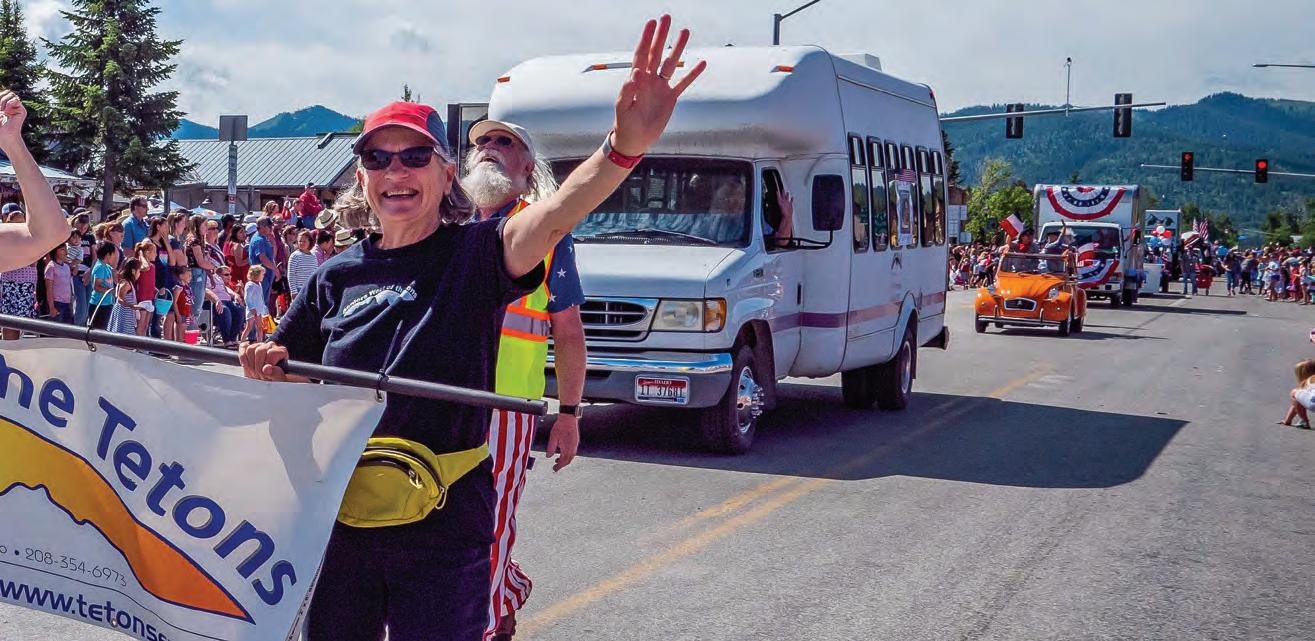
Rock Gym | Teton Valley Aquatics | Teton
Valley Community Animal Shelter | Teton Valley
Food Pantry | Teton Valley Foundation |
Mental Health Coalition | Teton Valley Museum
Education Foundation | Teton Valley Trails
Lacrosse Association | Teton Wildlife Rehabilitation
Valley Advocates for Responsible Development | Tetons Library

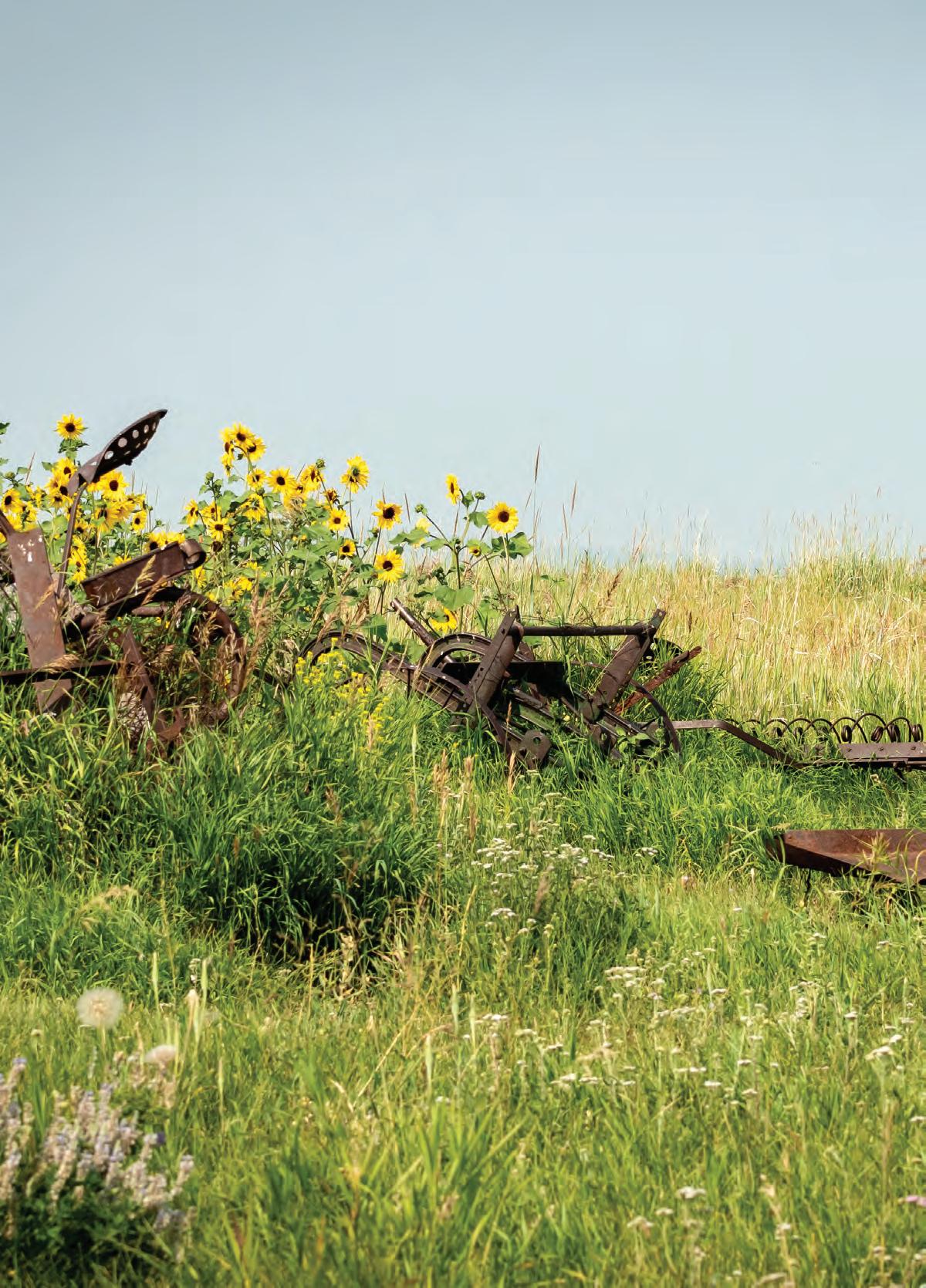
ABC - Above and Beyond the Classroom
Every year it seems as if there’s this stamp of approval. It’s as if people are saying, ‘Yes, this matters. Yes, we are giving to support the need.’ ”
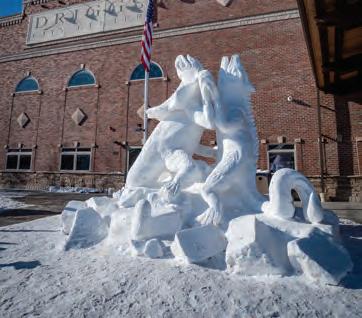
Fund | Church in the Tetons | Community

Valley | Community Resource Center of Teton Association | Driggs Head Start | Earthfire Rehabilitation Center | Education Foundation Network | Friends of the Teton River
Tim Adams

Horse Rescue | Hispanic Resource Center | The Valley | Lucky Dog Thrift Store | Mountain

Teton Valley Campus | Mountain Bike the Tetons
| NOLS Teton Valley | Rotary Club of Teton Valley Francis of the Tetons Episcopal Church Arts | Teton County Idaho 4-H | Teton County


County Idaho Fairgrounds | Teton County Idaho Club | Teton Geo Center | Teton Regional
Valley Aquatics | Teton Valley Balloon Rally
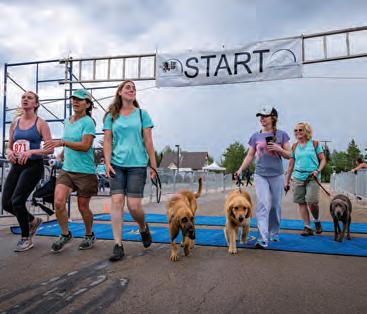
Animal Shelter | Teton Valley Community Recycling
Teton Valley Foundation | Teton Valley

Coalition | Teton Valley Museum Foundation Foundation | Teton Valley Trails and Pathways Association | Teton Wildlife Rehabilitation Center

Valley Advocates for Responsible Development |

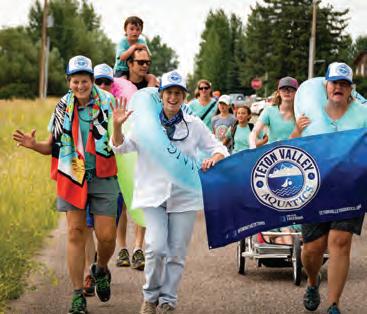
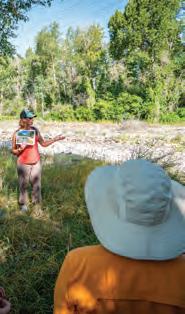








Miles of multiuse trails and pathways. Watershed enhancement. A food bank and a safe house for victims of domestic violence. Art classes, ski education, hockey, climbing, and dance. Nordic skiing and mountain bike teams. Meals and activities for seniors. Financial support and guidance for people in need. Counseling. Hispanic cultural programming. An animal shelter. Libraries. Horse rehabilitation. Open space and wildlife habitat protection. Free summer concerts.
All of these and more are brought to Teton Valley by local nonprofits.
In 2020, forty-seven nonprofits registered with the Community Foundation of Teton Valley to participate in the annual Tin Cup Challenge, a charitable fundraiser held over an eight-week period each summer. For a valley of twelve thousand residents, forty-seven nonprofits sounds like a lot, and per capita it is a big number. But it turns out it’s common for resort communities like Teton Valley to rely on nonprofit organizations to provide critical services and amenities. Jackson boasts more than two hundred of them; the Wood River Valley of Idaho, where Sun Valley and Ketchum are located, includes seventy-eight in its nonprofit listserv; and a quick scan of McCall, Idaho’s Chamber of Commerce website brings up a total of forty-one nonprofits.
“What I’ve seen is that communities with a higher wealth index tend to have a lot of nonprofits per capita,” says Amy Verbeten, executive director of Friends of the Teton River. “Certainly, that’s true in Idaho. We’ve made the decision at the state government level not to fund [certain] social and environmental services, which leaves [it up to] the private sector to step in.”
In theory, a couple of things are at work here: One, a lot of people move to Teton Valley because they fall in love with the landscape, the people, and the recreational opportunities they find here. That passion translates to a desire to help protect and preserve the character of the place where they have chosen to live.
The other issue is that Teton Valley’s low population results in a relatively low tax base. There just isn’t the
money in county coffers to cover some of the things people want and need to maintain the quality of life they seek, as well as to pay for certain social services for residents. In the absence of government or private business leadership, residents are forced to look elsewhere for the services they have identified as important. For a certain percentage of the valley’s population, these services are met by the faith community; for others, it’s nonprofits that step in.
It’s hard to get an exact number regarding how much nonprofits contribute to the local economy. In the United States, according to the National Council of Nonprofits, they employ 12.3 million people and spend nearly $2 trillion annually, with $826 billion of that going to salaries, benefits, and payroll taxes. These numbers underscore the importance of nonprofits not just to Teton Valley, but to the entire country. Still, it’s unclear what percentage of total economic activity can be attributed to nonprofits. Economic studies rarely separate nonprofits out as a sector; instead, they are lumped into the category of the services they provide. So, for example, Family Safety Network is considered in the social service sector, while Friends of the Teton River fits under environmental organizations. This makes it difficult to analyze the overall financial impact of nonprofits on the economy. But, Brian McDermott, executive director of the Teton Regional Economic Coalition, says you can do some simple math and add up salaries for the various nonprofits to get a sense of their importance to our community.
A 2020 nonprofit salary survey by the Community Foundation of Teton Valley shows that the salaries for fulltime executive directors of the thirty nonprofits that participated in the survey ranged from $5,000 to $130,000 a year. The $5,000 figure, however, is a bit of an outlier. Most of the salaries hovered around $50,000 to $60,000, rising in quantity with the size of the organization. A rough extrapolation of the data in the survey (using the low end of all salary ranges) showed that for these thirty nonprofits alone, salaries and benefit packages for employees total $4.8 million annually.
Tim Adams, executive director of the Community Foundation of Teton Valley and previous head of Teton Valley Trails and Pathways, says that what makes the nonprofits successful in the valley is the specificity of their missions. They each fill a clearly defined niche that residents have identified as important to their quality of life. As a result, people support them.
“The community has placed a lot of value on the nonprofits here,” Adams says. “Tin Cup started fourteen years ago with thirty-eight nonprofits. Since then, we’ve only added nine. It seems as if the community has almost monitored the growth of the nonprofit community. It’s as if they’ve said, we have [a certain] number of resources and these are the vital needs we want to see addressed. If someone comes in wanting to start another nonprofit that doesn’t fit into this, they are probably not going to succeed.”
The Tin Cup fundraising model, borrowed from the sister nonprofit Community Foundation of Jackson Hole’s Old Bill’s Fun Run, is, according to Adams, an unusual tool for leveraging a community’s charitable donations. He’s not aware of many communities that have adopted the model (although Lander, Wyoming, with help from the Community Foundation of Jackson Hole, ten years ago started a Run 4 Charities that uses the same basic principles). The Tin Cup pools donations and uses challenger funds to match contributions, thereby adding significantly to the fundraising efforts of individual nonprofits. Since its inception, Tin Cup has brought in $16 million for local nonprofits.
The Tin Cup model gives donors a kind of one-stop-shop for making charitable gifts. And it allows small organizations—the valley has a number of nonprofits that consist of only an executive director and a volunteer board of directors—to benefit from a large fundraising campaign that might be beyond their capacity going it alone. Adams says that despite the pandemic, 2020 was Tin Cup’s best year ever. The fund raised $1,776,670, an 8 percent increase over 2019. He believes Covid-19 enhanced people’s generosity.
“I think people thought. ‘If I am ever going to stretch in my giving, this is the year to do it,’” Adams says.
A record 1,234 donors contributed to the Tin Cup last year, which means that one in four Teton County households participated. These gifts ranged from a few dollars here and there, to large gifts of a thousand dollars or more. To Adams, the size of these gifts, while certainly important, is overshadowed by the way they indicate the community’s endorsement of the work the nonprofits perform.
“Every year it seems as if there’s this stamp of approval,” he says. “It’s as if people are saying, ‘Yes, this matters. Yes, we are giving to support the need.’”
With the onset of COVID-19, the valley also saw a shift in the way it gives, with more charitable donations pouring into nonprofits that provide social services to the community. Community Resource Center of Teton Valley, for example, saw dozens of new donors come in.
“We had over one hundred and fifty new donors in 2020; our total now is three hundred and fifty,” says Betsy Hawkins, executive director of the Community Resource Center. “It was tremendous for us. In an average year, we give out $12,000 in quality-of-life funding, which covers basic needs. In 2020 we were able to give out just under $90,000 for basic needs.
“We took money in, and we put it out. COVID-19 seems to have brought a new awareness to the community as to what we do and who might need our services. We are still seeing a much higher rate of non-fundraising-drive donations.”
While the millions of dollars in salaries and charitable donations are impressive, nonprofits create a ripple effect on the local economy that goes beyond the numbers. Verbeten, from Friends of the Teton River, says her organization has secured millions of dollars in matching grants for watershed projects over the years from federal entities and national private businesses like Patagonia. That money pays local contractors, farmers, ranchers, and vendors, as well as buying materials and supplies. In turn, the people paid by Friends of the Teton River shop in local stores, eat at local restaurants, buy homes, and pay for services—until, before you know it, one dollar donated to the nonprofit morphs into an intangible
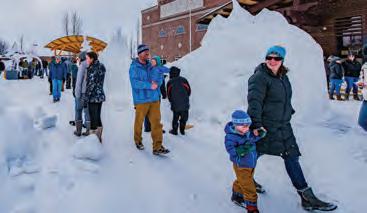
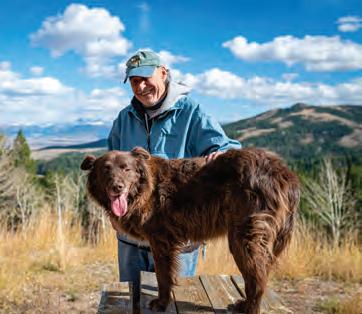
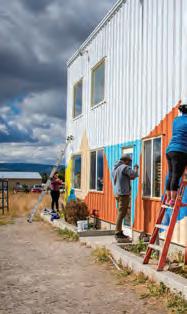



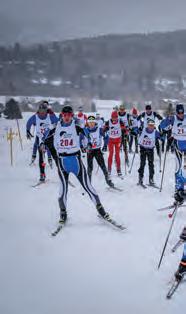


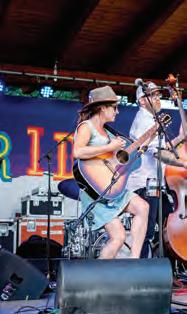
Classroom | Blake Chapman Young Eagles


Tetons | Community Foundation of Center of Teton Valley | Downtown Start | Earthfire Institute: Wildlife Education Foundation of Teton
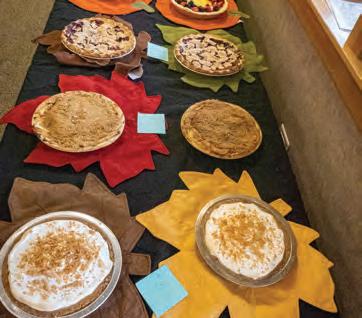

Friends of the Teton River | Full Rescue | Hispanic Resource Center
$1,776,670
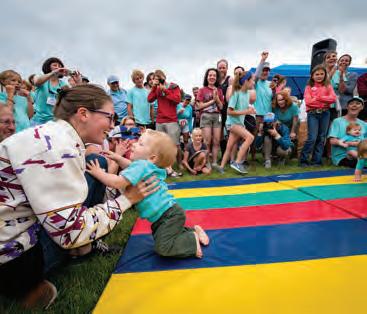
Teton Valley | Lucky Dog Thrift Science Schools - Teton Valley Mountainside Institute |
Valley | Seniors West of the Tetons



Episcopal Church | Subs for Santa 4-H | Teton County Idaho Fairgrounds | Teton County Idaho | Teton Geo Center | Teton
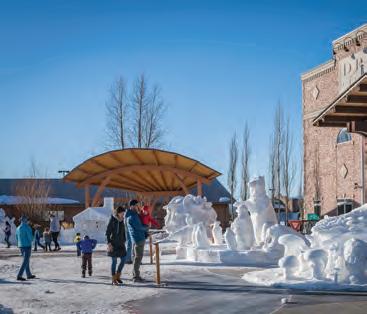
Teton Valley Aquatics | Teton
Valley Community Animal Shelter | Teton Valley Food Pantry | Teton Health | Teton Valley Mental Foundation | Teton Valley

Valley Trails and Pathways | Teton


When things work, nonprofits not only serve clients directly, but [generate] a broader benefit to the community.”
Amy Verbeten
number reaching far beyond the riverbanks where it started.


“When things work, nonprofits not only serve clients directly, but [generate] a broader benefit to the community,” Verbeten says. “Sometimes I think there’s a very surface-level understanding of just how much we contribute to the community. We have employees who do communication and outreach to tell our story, but it’s usually focused on fundraising goals. I don’t think many of us regularly look at how we contribute to the community as a whole.”


Dan Verbeten, Amy’s husband, serves as executive director of Teton Valley Trails and Pathways. He has thought a lot about the way his organization’s narrow focus—trails and pathways—affects the economy and quality of life in the valley. He focuses on this, in part, to help garner more support for his organization’s mission. Like Friends of the Teton River, Teton Valley Trails and Pathways has won numerous multimillion-dollar grants for projects over the years. People can see and enjoy the results of these efforts. Yet Dan says for him to get broad community buy-in for pathways, he has to sell their intangible economic benefits, not just the recreational pleasure they bring. To do that, he points to a 2016 study by Bozeman-based independent nonpartisan research firm Headwaters Economics that showed, on average, homes near trails are worth 5 to 10 percent more than those that are not.

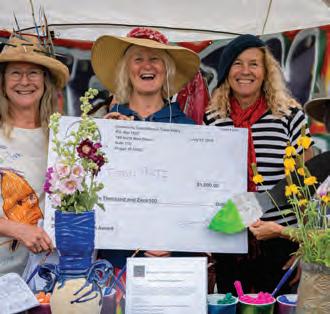













Similarly, access to the arts, parks, recreation, and music—amenities that enhance one’s quality of life—are shown to increase property values and boost economic activity.
Such non-market sources of value are difficult to pin a dollar amount to, but increasingly their impact is apparent. Teton Valley is seen as a desirable place to live. Land and home values have climbed steadily in recent years, inventory for real estate is low, and affordable housing hard to come by. Such desirability can be explained by many things: access to public lands, nearby national parks and ski resorts, low crime rates, and a healthy environment to name a few. But it can also be explained by the way people here have created organizations to ensure these values are continued through charitable giving, volunteerism, and support for the nonprofits that serve these functions or enhance the surroundings.
Having forty-seven nonprofits in a valley of roughly twelve thousand people could result in intense competition for finite resources, especially when nonprofit funding is subject to the vagaries of charitable giving and grant support. Still, most nonprofit leaders say they don’t feel like they need to fight against other organizations for dollars.
As Tim Adams points out, the nonprofits that succeed in the valley are those with clearly defined missions that meet specific needs and don’t overlap with other organizations. In fact, in order to avoid duplicating efforts, nonprofits that follow similar missions— for example Family Safety Network, the Community Resource Center, and the Teton Valley Food Pantry—often coordinate efforts to ensure their clients are directed to the right place to get the support and services they need. Similarly, nonprofits work with local governments to secure grant funding for projects that the cities and county either do not qualify for or lack the capacity to pursue.
Such “cross-pollination” happens on a small scale as well. Amy Fradley says she has been executive director of the Teton Valley Foundation (not to be
confused with the previously mentioned Community Foundation of Teton Valley) for about “twenty seconds.” She has found other nonprofit executive directors in the valley to be invaluable as she navigates her new role. This is especially true, she says, since she is one of just two full-time employees on her organization’s payroll, and has limited resources to draw upon for help and advice.
“When I find myself scratching my head, I often turn to some other nonprofit executive director to compare notes,” Fradley says. “I also share my expertise. My background is in event planning, so I helped with Snowscapes and HAPI Trails’ fundraising event.” (Snowscapes is a snowsculpting exhibition and competition sponsored each January by the nonprofit Downtown Driggs Association, while the nonprofit HAPI Trails facilitates the rescue and rehabilitation of abandoned and abused horses.)
Friends of the Teton River’s Amy Verbeten says another advantage to nonprofits is that they tend to be flexible and able to respond more quickly to changing conditions when compared to government entities.
“With government you kind of have one-size-fits-all,” she says. “Nonprofits can have really targeted responses on a local level as opportunities and challenges come up.”
Examples of this were obvious during the pandemic. Teton Arts moved its classes, usually held at its facility, online or to Victor and Driggs city parks; Teton Valley Mental Health Coalition found funding to offer six free counseling sessions to people in need; the Community Resource Center of Teton Valley hired a Spanish-speaking employee and moved intake forms online; and the Community Foundation of Teton Valley turned the 2020 Tin Cup into a virtual event and still managed to raise more funds than ever.
As the Tin Cup Challenge has demonstrated over and over, the Teton Valley community values its nonprofits. They provide critical services and amenities, while funneling millions of dollars into the local economy, even during the most challenging of times.

Reflections

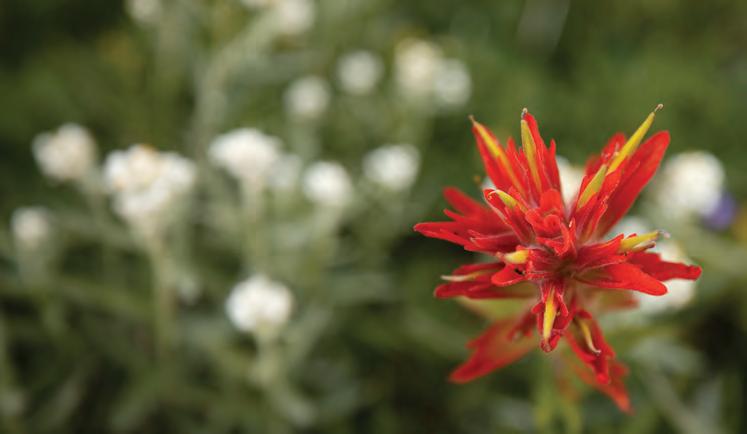

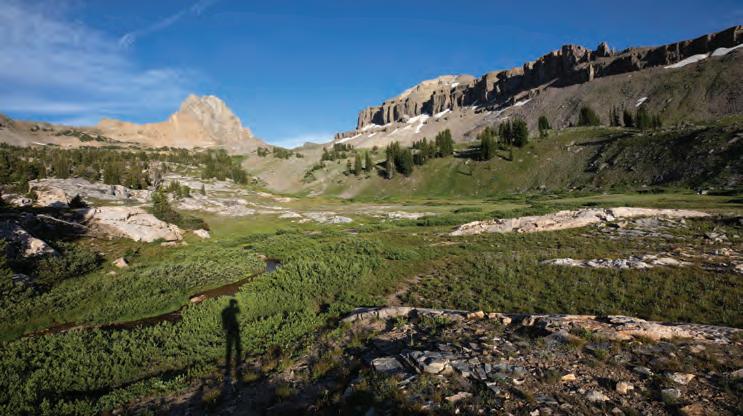
Weighted down with food and glass, I start uphill, cold, just waking up. My steps quicken, and the blue light and frost give way to dawn. It is early August, five months into the pandemic, and I managed to find a parking space at a trailhead in Grand Teton National Park, a rarity this summer. I set out solo from Death Canyon for an east-to-west traverse of the Teton Range, planning to meet my family on the other side at the Teton Canyon trailhead accessed by way of Idaho in Alta, Wyoming.
Finally, alone. No traffic. No crowds. The sounds of birds rise. I feel the ground on the soles of my feet. My senses wake to attention. The first rays of sun warm the chilly sweat on my neck. I stop a little ways into the canyon and look back toward Phelps Lake as a breeze breaks the glass of its still, blue surface. I turn and begin the more than four-thousand-foot ascent to the divide. As I pass through levels of exhaustion, thoughts appear and vanish like soapy bubbles floating and bursting. With each switchback, I become a little more numb to the discomfort of the load on my back. As I gain elevation, the alpine wildflower bloom takes hold. Paintbrush, columbine, asters, and geraniums burst along the banks of the steep, small streams of snowmelt. I hear only wind and rushing water. Then, the day begins.
The sounds of planes pierce the silence as they begin their morning march into the sky from Jackson Hole Airport. As day hikers emerge, I refocus on my assignment to contemplate the relationship and changing character of the two valleys that flank the Tetons. After a cumulative twenty-one years living on both sides of the hill, I’ve seen that the community and vibe of this place are always changing. While some changes are welcomed, others—like city-like traffic jams and busy trailheads—create questions and discussions worth having and hopefully solving.
The idea of a city exodus from busy metropolitans to smaller towns and rural places like the Greater Yellowstone region is not new. The pandemic has simply intensified that migration, giving us a new reality and glimpse at the future, raising new questions about how best to manage growth and change. A combination of pressures has reshaped the valleys on both sides of the Tetons, giving birth to both virtual and actual suburbs, where people are searching out a better quality of life.


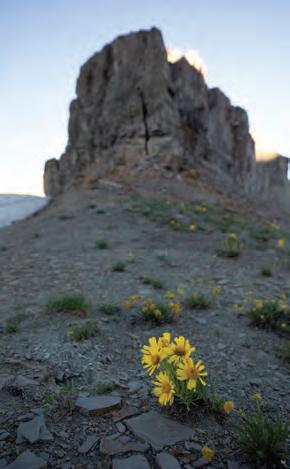
After a cumulative twenty-one years living on both sides of the hill, the author knows that the community and vibe of this place are always changing.
And can you blame them? We are not alone. This is a meta trend occurring anywhere in America with a desirable quality of life beyond the city.
With this unquenchable demand for clean water, fresh air, and outdoor recreation comes a host of very real issues and subsequent problems to solve. What’s the point of moving for a better quality of life and then spending two hours commuting? How do we create affordable housing and a thriving economy in Teton Valley to curb such an unsustainable commuting scenario, while also conserving resources and protecting wildlife? How do we engender tourism-based economies in Jackson Hole and Teton Valley that don’t destroy the character and the experience tourists are visiting for in the first place?
Traffic and employment studies estimate that 75 percent of residents in Driggs and Victor have at least one household member commuting over “the hill,” as Teton Pass is known locally. A thriving Teton Valley economy could give that many residents two hours of their lives back every workday. But that is not what’s happening.
When asked about the challenges facing Teton Valley, Jackson Hole, and Alpine, Wyoming—another bedroom community 37 miles south of Jackson—economist and Jackson town councilor Jonathan Schechter references our complicated governing geography.
“We are one community across two states and three counties,” he says. “It makes it very hard to solve community-wide problems. We [Jackson] literally ship out our trash to Idaho Falls and now we are shipping out our affordable housing problem over the hill, too.”
We are interconnected, sharing economies, roads, rivers, and public lands. Yet trying to address our impacts and govern with solutions across state lines is often a nonstarter. The different laws and tax structures of Wyoming and Idaho stall cooperation on the ground. The booming cost of housing in Jackson has spilled across Teton Pass and through the Snake River Canyon, damaging the supply of affordable housing in Alpine and Teton Valley. In the past year alone, real estate reports note that 739 properties have sold in Teton Valley. Small vacant lots in a new development in Victor that were selling for $60,000 in October 2020 were selling for
$90,000 this past March. Mark Rockefeller, who founded Teton Valley Realty more than forty years ago, says this about the current activity: “Over the top, far beyond what we saw leading up to the 2007 crash.”
Realtor Zach Smith, a Jackson native and Victor resident who served as mayor of Victor from 2011 to 2016, calls the current market “out of control.”
“Any single-family home in Victor around $500,000 has a dozen inquiries, and most are closing with bidding wars 10 percent above sale price,” he says. “People are moving here from cities or Jackson expecting municipal services like Jackson.”
“We have nine city employees in Victor,” Zach says. The Town of Jackson has more than one hundred and thirty. “The hardest part is making tax revenue match expectations. We have only had an intact municipal sewer system since 2003.”
One thing is clear: We can no longer blame our traffic issues on a busy tourist season. The same backups from Broadway in Jackson to downtown Driggs occur regularly, regardless of the time of year. So, what are the answers? Who have we become? Hardly a week goes by without hearing of another friend leaving Jackson for the mellower vibe and relative affordability of Teton Valley. Without big-picture solutions, leaving for another paradise just punts the inevitable down the line maybe a decade, until the same problems overtake that spot.
Admittedly without answers, I keep plodding up endless switchbacks in search of perspective.
Finally cresting tree line and passing the Static Peak divide, a famous geologic face of folded, metamorphic granite gneiss draws my attention. Created under pressure deep within the earth’s crust, this rock is over two billion years old, according to the late geologist Dr. David Love. It predates the entire uplift that created the range, as well as the older shallow sea that washed over a flat plain in this spot more than 500 million years ago. There is nothing like geologic time to help put things in perspective. The oncoming suburbs aren’t going to screw this up.
I push toward the Buck Mountain divide. I catch a final glimpse of Snow King Mountain, which hovers above the town of Jackson, in a


“We are one community across two states and three counties.”
Jonathan Schechter
Canyon.
notch, as the hanging alpine meadow known as “No Wood Basin” falls into space over Death Canyon. As I step onto the snowfield and prepare to leave the national park for the Jedediah Smith Wilderness and Teton Canyon to the west, the sun peeks in and out, its trajectory directly in line with a towering ridge of Buck Mountain immediately to my right.
I stop and play with the sun-shadow line like a curious child. One step back and the sun burst blinds me. One step forward and it disappears behind the granite massif, draping me in cool shade. One might describe such a place as a sort of vortex or power spot, but this is no hyperbole. Not here. The unfathomable geologic forces and time involved in creating the place where I stand cannot be exaggerated. Tasting the micro dust blowing around in the basin, I chug the last of my water to head off the light, dehydration-induced hallucinations that I strangely enjoy in the high mountains. Deafening silence rings in my ears.
I leave behind the east side of the range and all its bustle and park regulations for the familiar ease of national forest lands and Teton Canyon. Rehydrated from the highest trickle of water I have found yet, I look out over a vastly different landscape to the west. Marmots loudly chirp their warnings to each other, and alpine sunflowers grow defiantly, straight out of the broken rock on the divide, blazing yellow and four inches tall.
In the geology book Creation of the Teton Landscape, the authors (including the previously mentioned Dr. David Love) describe the expanse before me known as Alaska Basin: “Here is a record of Nature’s experiments with life, the triumphs, failures, the bizarre, the beautiful.”
The view empties my mind of thoughts about society. Just down the trail from the divide, I pick up one of the countless fossils of tiny sea creatures lying among the limestone and paintbrush flowers. Gastropods, brachiopods, corals, and algae heads; these same creatures, preserved in time here at over ten thousand feet in the open, lie buried thousands of feet below the floor of the Jackson valley on the east side of the Teton fault—only a few miles away from here as the crow flies.
The patches of snow from the previous winter are nearly gone, and water runs everywhere across the Flathead Sandstone, gathering volume that will ultimately feed Teton Creek and
the Teton River. All downhill from here. I spend the next two hours wandering all over the basin, exploring tiny islands of rocky outcrops shaded by gnarled pines separated by small flat spaces big enough only for a tent. After checking around at a dozen or more sites—this is notably a popular trail particularly in high summer, and even more so this past year as the pandemic surprisingly left the region with record-breaking visitor numbers—I hoist my pack and head back uphill, east toward the divide, in search of some flat, softish ground with a bit of protection from the wind that’s gaining momentum.
The busyness doesn’t spoil the last light washing over the alpine gardens and blazing the Darby formation and Bighorn Dolomite cliffs that wall off the southern side of the basin. (When I return a week later with my wife and kids from the west side, these flowers will have peaked, and the squishy, saturated microwetlands will be dry and hardened.)
In the morning, on returning to my tent after heading out in the dark for a high scramble and a peek into the north fork of Avalanche Canyon, two scenic flights buzz back and forth at dawn. Shortly after, a rescue helicopter crisscrosses the area before landing to assist someone just north of the basin. I pack up quickly and head back down to the west, bypassing the crowded basin lakes, covering ground to beat the midday heat.
As I lose elevation dropping into Teton Canyon, I stop to chat with a nice couple on their way up. They share their amazement at their good fortune. “We just retired to Teton Springs from Georgia!” they say. “We just sold it all and bought our dream home!” I tell them, I also came from Georgia via Utah to escape suburbia in the nineties, but I had nothing to sell at the time; a reminder of the commonality of so many residents: arriving here from somewhere else.
Too late. The August sun pins me in the open. I kick myself for not procuring water higher up, as algae blooms fill this stretch of Teton Creek. A sweaty mule train saunters by, heading up-canyon with full loads. A trailing pair of wranglers in leather chaps, flannel shirts, and cowboy hats tip their brims and thank me for stepping off the trail. Similar trains of guided pack trips on the west side supplant the groups of guided climbers on the east.
Beyond my own delicate sensibilities of entitlement to solitude, the mountains seem to




swallow up the crowds effortlessly. Although I haven’t really uncovered any answers to the issues we are facing as a growing community, the experience affirms that our increasing impact on the resources we love has everything to do with our sheer numbers and very little to do with where we moved from to get here.
When I have about three miles to go, my parched mind wanders back to when I lived in a cabin by Trail Creek twenty years ago. We had to move out in early March after running out of propane, our only source for heat and cooking. Standing on the Old Jackson highway looking up Game Creek before it was full of homes, the driver of the propane truck just laughed. “Sorry, buddy, snow’s too deep to get anywhere close to that tank,” he said. “Call me in May.” You could get a burger and a beer in town for under $10 and locals and transplants alike seemed to welcome the growing population of young women on telemark skis, though they weren’t quite as crazy about yet another young dude from somewhere in the South. Some things stay the same.
Now I’m fixated on a cold beer and a now
twenty-dollar burger, as a hot west wind bends the drying stalks of six-foot-tall delphiniums that obscure the trail.
Cherishing the final flat mile to the car I see my family walking toward me, kids bouncing with excitement. We cross the bridge together, passing a crew of fish biologists conducting research in the creek. They tell me they are studying the algae blooms’ effect on the piscine population. My girls join me downstream as I submerge my head in the creek. Despite the return to traffic on the trail, I shuffle into the packed parking lot with a sliver of optimism. I think about the efforts of valley farmers like Lynn Bagley and conservationists like Friends of the Teton River’s executive director Amy Verbeten crossing political and social divides, working together to improve this fishery. They, among many others, are actualizing big picture solutions in Teton Valley to address important issues. Their focus: the quality and abundance of water. Farm practices are evolving. On the ground, science is happening. So, about that traffic and affordable housing problem?









The Historic PACKSADDLE BENCH named by the Hayden Expedition is one of the most unique and beautiful land areas in the Yellowstone Ecosystem. Elevated 600 to 1200 ft. above Teton Valley, it has unparalleled views of the Tetons, Yellowstone, and 11 other Mountain Ranges in 3 States. Unique Wooded Canyons, Ranchland, Mature Aspen, and Spruce Forest on diverse topography. Moose, Elk, Deer, Game Birds, and Eagles are plentiful. Own one of a limited number of smaller Ranches (20-50 acres) or choose a Larger Ranch (50-400+acres) each with its own history. A County Public Trail System accessing 3 Direct Entries to NFS and Packsaddle Lake. Close proximity to Teton River, Driggs, Jackson Hole, Yellowstone, and Grand Teton National Parks.



BY SMITH MADDREY PHOTOGRAPHY BY DAVID STUBBS
Relaxing in the mineral-rich river pool at the newly constructed Astoria Hot Springs, it’s easy to soak your cares away—at least for a moment.
Not to be confused with the free, unregulated hot springs located a quarter of a mile upriver on the other side, Astoria boasts five pools, a bath house, a picnic pavilion, and a playground all perched above the Wild and Scenicdesignated Snake River. But this modern facility—freshly opened in September of 2020—is just the most recent, exciting chapter in Astoria’s centurieslong, evolving story.
Native Americans, including Bannock, Blackfeet, Crow, Gros Ventre, and Shoshoni, frequented the area before the 1800s, soon to be followed by American Fur Company trappers—employees of John Jacob Astor, known as Astorians—who came through the area seeking their way west to the Columbia River. (They wisely avoided taking their dugout canoes down the Snake in its predam state.) In the early 1900s, gold prospector Johnny Counts became the first long-term inhabitant at Astoria, a place he called Counts Hot Spring or Johnny Counts Flats. Counts spent many years looking for gold from the Snake and its nearby tributaries before passing the property along to other homesteaders.
Jackson businessman Robert “Bruce” Porter purchased Astoria around 1960 from the Goe family and opened its forty-by-eighty-foot rectangular pool— one of the only swimming destinations in the area—to the community a few
years later. For the next thirty years, locals flocked to Astoria and the public pool to enjoy the naturally warm mineral waters, take swim lessons, attend birthday parties, and hang out with friends by the river. It was just far enough from town to feel special for locals, and two campgrounds hosted them and tourists from farther afield.
Bruce Porter’s great-granddaughter, Nikki Gill, spent the summers of her youth at the pool. Her family owned and managed the facilities, and she remembers Astoria in its heyday being accessible to everyone.
“It didn’t matter how much money you had. ... It was affordable,” she says. When the Gill family was forced to sell the property in 1998, the Jackson community mourned the loss of its iconic gathering spot. Jackson was changing.
“It was the end of an era and Astoria was one of the last holdouts of old Jackson,” Nikki says.
Astoria Hot Springs and its surrounding acreage entered a twenty-year dormancy, its fate hanging in the balance. The land changed private hands multiple times and, eventually, community leaders started hatching a plan for how they might acquire it and return it to the public.
Enter the Astoria Park Conservancy in 2018. After a multi-year, donorintensive $6 million dollar campaign,

patrons enjoy the warm waters. September 2020 kicked off the next chapter of Astoria Hot Springs after a twenty-year dormancy.
LEFT Located just south of Jackson near Hoback, Astoria Hot Springs Park sits adjacent to the Snake River with five pools, a bath house, picnic pavilion, and playground.
FAR LEFT Robert “Bruce” Porter opened Astoria to the public in the 1960s. The much-loved pool remained a key part of Jackson life for several decades.

in partnership with the Trust for Public Land and enthusiasm from passionate volunteers like Nikki and other Jackson locals, the Conservancy secured the one-hundred-acre property now known

“There are multiple mini-habitats that are influenced by the geothermals... making the habitat unique...”
Paige Byron Curry

as Astoria Hot Springs Park. Starting in 2019, phase one entailed designing, building out, and landscaping the fiveacre pool and picnic areas. Astoria manager Todd Seeton, who helped manage nearby Granite Hot Springs for more than two decades, explained how beneficial it was to begin with a clean slate. “It was state of the art in that we were able to start from scratch with new pools and designs for the property,” he says.
Paige Byron Curry, Astoria Park Conservancy’s executive director, started swimming at Astoria in the 1980s. She finds great purpose in preserving this open space for all, wildlife included.
“There are multiple mini-habitats that are influenced by the geothermals and have longer seasons, making the habitat unique, compared to upriver and downriver,” Paige says, referring to the one-hundred-acre property. “The three ponds have warmer temperatures and provide bird habitat. There is a huge wetlands meadow providing feed for ungulates and birds.”
Future plans for the property include hiking trails, wildlife viewing improvements, interpretive kiosks, fishing ponds, and a venue for private events. Before beginning phase two, however, Astoria and its community support-

ers are enjoying the return of the hot springs to the public for the first time in more than two decades.
For Teton Valley visitors, expect about an hour’s drive to Astoria. (Make a nice clockwise loop out of it by going there via Teton Pass and Jackson, then returning to Victor by way of Alpine, Wyoming, and Swan Valley, Idaho.) Cross the historic red bridge off of U.S. Highway 26 and turn left into the parking lot by the bathhouse. There is a local’s price of $14 per person, which includes Teton County, Idaho, residents. Pool passes are available, yet you should still call ahead and/or make reservations online, a feature added during the COVID19 pandemic to prevent crowding. Natural hot springs individually feed all five pools and are free of chlorine (except the Children’s Pool). Pools vary in temperature from 90°F to 104°F.
What does this most recent chapter in Astoria’s history signify? “It showed that our community is still willing to fight for its health and soul,” Nikki Gill says. And for Paige Byron Curry, the story is twofold: “For me, it’s always been about the people—you’ll always feel welcome at Astoria—and to co-create a park with the community to preserve one-hundred acres with two miles of riverfront.”
The work that went into bringing back this regional treasure is a lot to reflect on, maybe during a good warm soak overlooking the storied Snake River. More info: astoriahotspringspark.org.



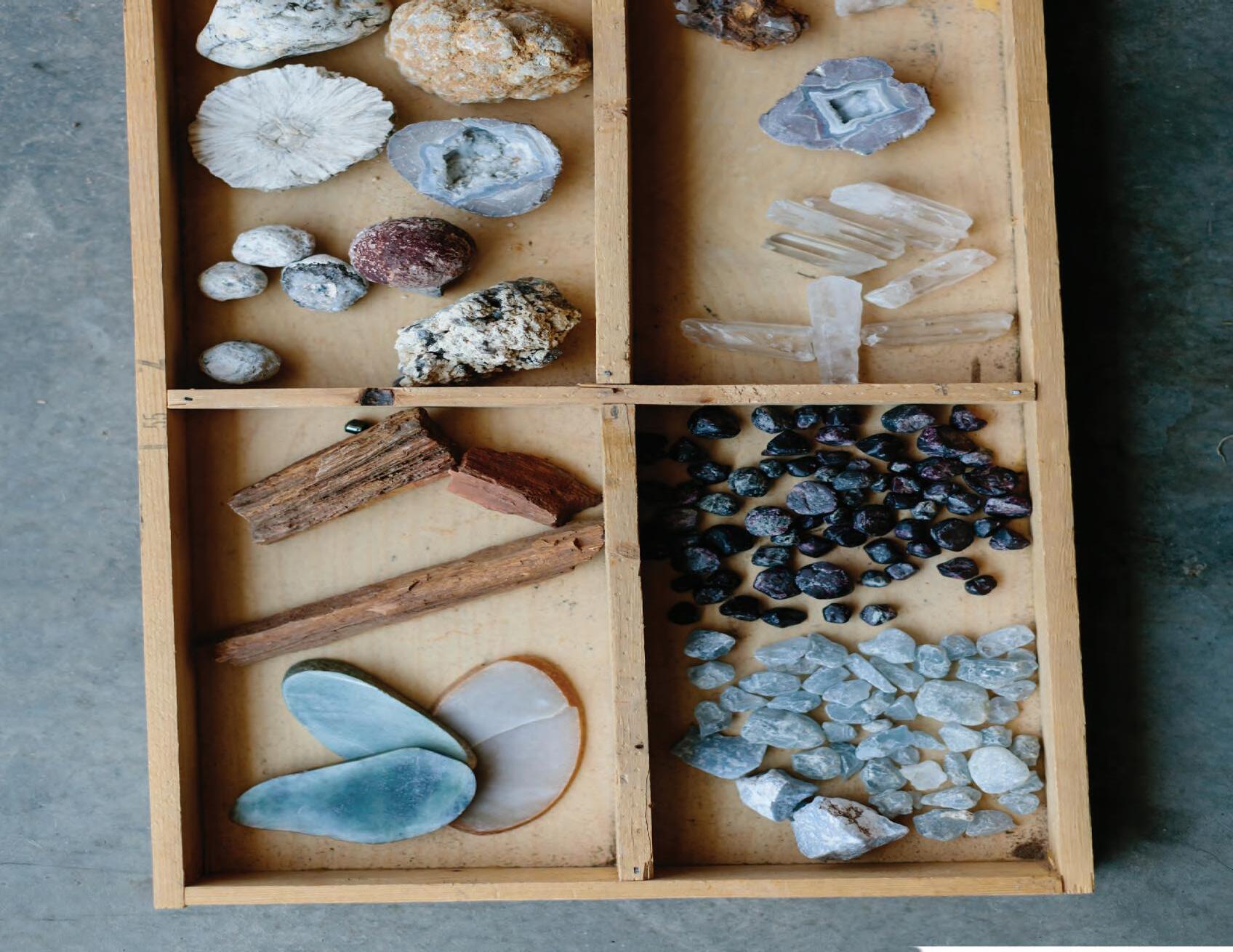
ABOVE Rockhounding tools like rock picks are used to crack or split a rock to reveal its crystalline structure.
LEFT Nick Arens’ pine cone slab jewelry, covered in soy-based epoxy resin, displays a cone’s interior geometric design.
FAR LEFT A variety of gems, crystals, and stones collected in the region.
BY KRISTEN POPE PHOTOGRAPHY BY LARA AGNEW
By day, Nick Arens works as production manager for Gravity Graphics in Victor. But in his free time, he’s roaming around Idaho, Montana, and beyond in search of jade and other gems to turn into jewelry.
A rockhound and artist, he transforms his foraged finds into intricate pendants made from pine cone slabs embedded with stones, as well as wirewrapped jewelry with rocks and crystals and silversmithing.
Since childhood in Iowa, Nick has been fascinated by stones and rocks. Beach trips would always involve searching out rocks and shells, and he fondly remembers his third grade trip to a gravel pit loaded with fossils. But it wasn’t until he injured his shoulder in a mountain biking accident around ten years ago that he became a serious hobbyist. With torn ligaments in his shoulder, he took a step back from his usual activities and started making jewelry.
“I was just sitting at home, so I started getting into wire wrapping,” Nick says. He already had a modest collection of rocks and cabochons, or polished gemstones, so he began with those, but the small project quickly snowballed as he acquired more and more gems. “Before I knew it, I had rocks everywhere,” he says.
Nick began selling pieces to people he knew, but his business quickly expanded beyond the valley. He built a sizable collection and opened his Etsy shop called Burnt Fern, burntfern.etsy. com. He also enhanced his jewelrymaking skills by learning about silversmithing from the late Jack Walker, a notable Teton area artist. Now, he continues to grow his business, spending summers searching for rocks and gems and expanding his collection.
When he’s collecting rocks in the local region, Nick primarily focuses on finding jade. He also travels to Montana in search of quartz crystals, though he’s always on the lookout for rocks and gems wherever he goes. “The shinier the better,” he says. In the summer, he tries to get out at least once or twice a month in search of gem treasures.
When venturing beyond the local locations he knows well, Nick says it’s always a little tricky to find the best spots to search, which are often closely guarded secrets.
“It’s tough to find places to go be-
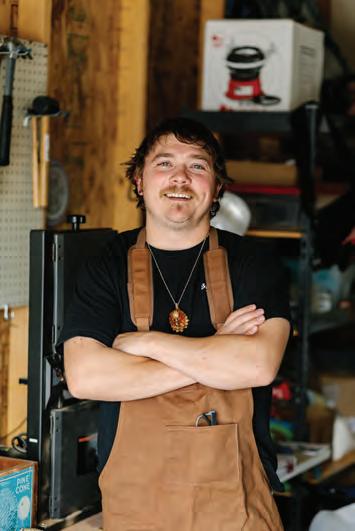
ABOVE Local artist and rockhound Nick Arens creates intricate jewelry with rocks, crystals, and pine cone slabs. His art is available online at burntfern. etsy.com and locally at the Liquor Market in Driggs.






cause it’s like a treasure hunt,” he says. “Every rockhound likes to keep their secrets. Trying to find people to give away their secret spots—it can prove to be difficult.”
Most of Nick’s searches bring him to Bureau of Land Management areas where collecting is allowed, and he says there are resources like maps and rockhounding books that point out places to search. He says he’s always very careful about determining where land boundaries are and what activities are allowed.
“You definitely don’t want to find yourself trespassing and digging on someone else’s land, especially in certain areas where people have claims for gold or whatever else they find,” Nick says. “I’ve heard some horror stories.”
When he’s out in the field, Nick will bring a few tools, usually a shovel, rock pick, and sifter, as well as a container to carry out any finds. He often hikes miles to reach his quarries, so he packs fairly
“I feel like just about everybody has this weird love for crystals [and gems], whether it be because they are pretty and shiny or it just resonates to you.”
lightly. Bringing water is also key, since identifying wet rocks is much easier. “If it’s dry, it just looks like dirt,” Nick says.
So, what is it about rockhounding that keeps Nick trekking miles, digging through dirt, and hauling heavy rocks out before transforming them into beautiful wearable art? “I feel like just about everybody has this weird love for crystals [and gems], whether it be because they are pretty and shiny or it just resonates to you,” he says. And there’s no better place to pursue this hobby, it seems, than in the aptly nicknamed Gem State.
Idaho is called the Gem State for a reason. Intrepid searchers will find plenty of gems to whet their rockhounding appetites. Nick Arens encourages people who are interested in the art to give it a try. “Just start diving in,” he says. “There are so many resources at your fingertips on the internet, and there are all sorts of groups and forums. People are more than happy to lend out information—at least enough to get you going. It’s hard to get the ‘honey hole’ information from people, but just start diving in and let it take off.”
If you’re wondering where to search for gems in Idaho, start with the Idaho Department of Lands website. It includes information about gemstones on public lands, including which counties are good places to find different stones. The site includes a number of rockhounding locations in Fremont County, where searchers may find colorful gems like feldspar, malachite, and even jade.
Site: idl.idaho.gov/mining-minerals/ rockhounding/
The Bureau of Land Management has published a helpful guide to rockhounding on Idaho’s BLM lands. It notes collecting personal specimens is allowed, in reasonable quantities, with hand tools in certain areas. Check out the brochure (or call one of the BLM offices listed in it) for more information. And remember, never enter abandoned mines, which can be very dangerous.
Site: blm.gov/sites/blm.gov/files/docu ments/files/RecreationalRockhounding.pdf
If you’re curious about rockhounding but not sure where to begin, consider a day trip just a hundred miles away to the Spencer Opal Mines in Clark County. Visitors bring their own tools and dig through a pile of rocks in search of opals. Be sure to dress appropriately with closed toe shoes, eye protection, and sun protection.
Check their website for COVID-19 opening updates and more information: spenceropalmines.com.


Weddings sunset dinners trail rides Cabin rental events

*and many winter activities including sleigh rides and holiday parties. Advanced reservations are required for all activities and events
(208) 787-5466 • 1300 E 6000 S, Victor, ID 83455 office@linncanyonranch.com • linncanyonranch.com


















BY TOM HALLBERG PHOTOGRAPHY BY CAMRIN DENGEL
Yes, your dog
When
you have to leave your dog at home, it can be briefly heartbreaking. If you’re dressed for work, they seem to understand, but when you pack for a bike ride or ski tour, they seem to recognize the smells and sounds of adventure gear.
My dogs’ “I’ll-never-forgive-you” look is not one I take lightly. In winter, I can justify to myself and them that humanonly outings are appropriate if the ski day is too long or the avalanche danger too high. In summer, however, we all know that most activities are dog friendly. That is, except for bikepacking.
My dogs Huck and Jasper love mountain biking, but road or gravel rides are too much for them, especially for Jasper, who recently crested double digits in age. Despite that, they still flash the “I’ll-never-forgive-you” look when the long-distance biking gear comes out. My girlfriend, Ellen, and I decided we needed a solution to this problem. Enter the bike trailer.
Several companies make pet-specific bike trailers. The two we purchased from the trailer company Pet Safe even have little windows on the tops for the dogs to stick their heads out of. Coupled with a rear bike rack and panniers, the setup supports an entire weekend bikepacking trip, something that has always been out of our reach unless we found someone to watch the pups. But, really, who wants to leave their dogs at home when they go camping?
There’s no manual for training your dog to ride in a bike trailer. Whether it’s
easy or not will depend a lot on your dog’s temperament. Jasper, an 11-yearold Husky mix, took to it with little encouragement. On the other hand, my neurotic Airedale mix, Huck, no doubt harbors a keen memory of the six months he spent in a Humane Society kennel before adoption. Consequently, he distrusts any new enclosure, even though he’s enjoyed freedom for the past seven years.
It takes a hefty serving of treats thrown into the trailer to get him in, and even then he lets out a whooping whine for the first couple of minutes to express his displeasure.
After a few training trips to Victor to get the mail or buy groceries, we were ready to embark on our first overnight trip. We chose the “Around the Rock” route, a circumnavigation of the Tetons that follows the Ashton-Tetonia Trail State Park to Grassy Lake Road, then wends its way to Jackson through Grand Teton National Park.
Huck preferred to run on the AshtonTetonia Trail, the old rail bed that bisects the farmlands north of Teton Valley. Fields of hay waved in the sunshine; grain elevators testified to the history of the region’s farmers and settlers. Bitch Creek gurgled far below its iconic tres-

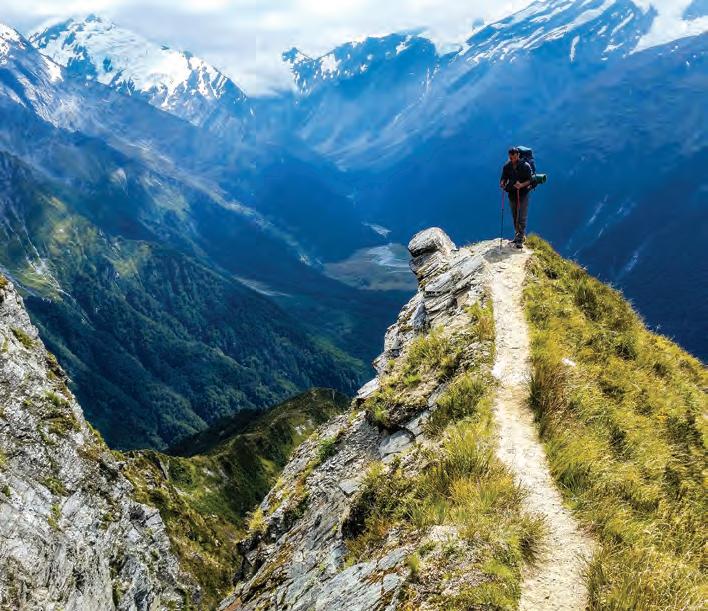




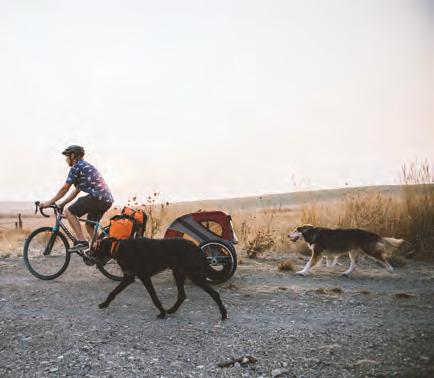
tle bridge, aspens lining the canyon rim.
The dogs ran until they were tired, a state that took much longer for Huck to achieve than it did Jasper. By the time Huck had slowed to the point of needing to ride in the trailer, he didn’t even protest. Pulling a dog in the trailer is a lot of work, but the satisfaction of arriving at camp after a good ride with tired dogs is ample reward.
In hindsight, the Ashton-Tetonia Trail and Grassy Lake Road may not have been the ideal choices for our inaugural voyage. Much of the AshtonTetonia Trail is pretty soft, making it a difficult substrate for towing more than 110 pounds of dog and gear—both Huck and Jasper each weigh a whopping fiftyfive to sixty pounds.
Grassy Lake Road, which hugs the boundary between Grand Teton and Yellowstone national parks, is beautiful. Meadows and lakes line the road on the western side of the Tetons, and the high peaks wink in the vista to the south. However, the section that traverses the north side of the Teton Range is steep, and although the dogs trotted the uphills and coasted in the trailers on the downhills, the extra weight made the going slower than anticipated.
But riding on hard-packed gravel roads (without too much incline) was incredible. Once your momentum is achieved, the trailer rides nicely. For anyone used to hundred-mile days or accustomed to tracking their top speed on a ride, towing a dog trailer will feel









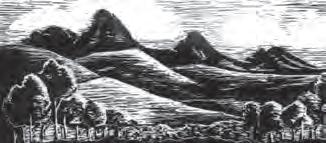

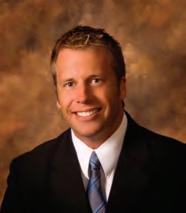





Victor Elementary School kindergartners practice their reading skills. Literacy is emphasized at all TSD 401 schools.

like living in slow motion, but it was generally a slow enough speed to allow me to listen to my book on tape, which I appreciated.
In the end, I’m not sure this sport is for everyone. If the idea of bringing your dog along on the adventure outweighs the desire to set a new personal record,

There are a lot of places my dogs still need to see, and the trailer is a perfect vantage point.
it might be for you—and, strictly from a workout stance, it’s pretty exhausting. The activity requires a different mindset than a lot of people have when they set out for a full-day ride. Fifty miles is probably the extent of what most would want to ride while towing a trailer, far less than your weekend cyclist might hope to cover. Nevertheless, I’m hooked.
Idaho is full of rolling hills, hot springs, and solid gravel roads wellsuited to towing a dog trailer. From the central Idaho hot springs bikepacking loop to weekend trips around City of Rocks or ranges like the Pioneers, there are a lot of places my dogs still need to see, and the trailer is a perfect vantage point.
If there’s one thing our dogs and I agree on, it’s that they deserve weekend trips just as much as Ellen and I do. And, although he’d be loath to admit it, I’m convinced Huck would always choose riding in the bike trailer over staying home.





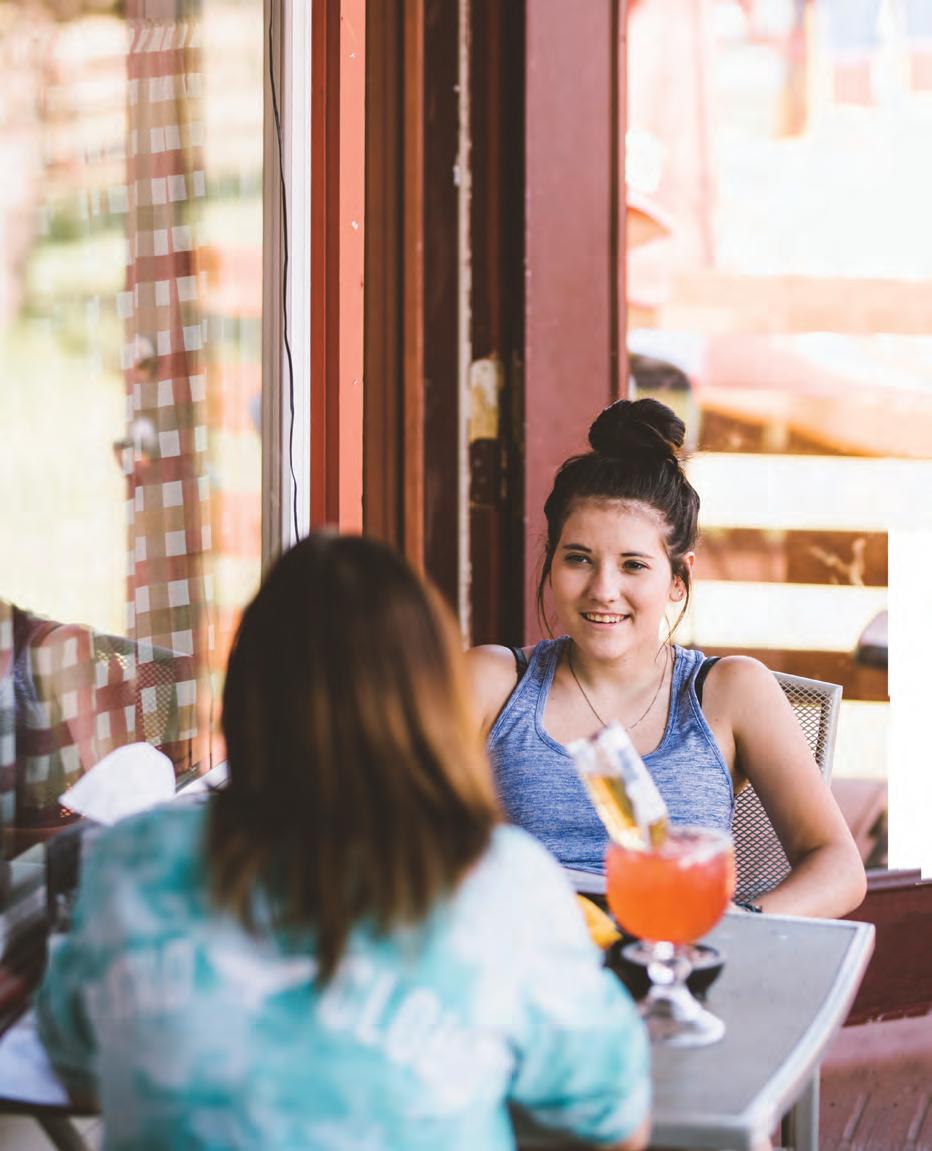
Where family friendly meets authentic




ABOVE Gina Hickey (facing camera) snacks on chips and salsa while Lana Sudela enjoys a Corona-rita on the sunny deck.
LEFT The Hacienda plate, featuring seasoned skirt steak and grilled shrimp, is a local favorite.
BY KATE HULL PHOTOGRAPHY BY CAMRIN DENGEL

If it weren’t for the welcoming sign announcing its location, you might miss it. But Hacienda Cuajimalpa, located not far north of the stoplight in Driggs, is worth a (frequent!) stop.
Inside the white house with red trim, located at 355 North Main Street, authentic Mexican fare, accompanied by refreshing oversized beers and traditional Mexican beverages, awaits patrons year-round. Run by owner Carlos Ordoñez and his mother and business partner, Miriam, Hacienda Cuajimalpa, named for the borough of Mexico City where Carlos’ mother and grandparents were born, has been a Teton Valley Mexican cuisine mainstay since 2008.
The secret to longevity, says the twenty-six-year-old owner, is the authentic fare and family atmosphere. Carlos began working at Hacienda Cuajimalpa at just fifteen, learning the ins and outs of managing a restaurant. He has been the part-owner now for just over three years.
On warm summer days enjoy a meal or happy hour on the spacious patio. Order up a heaping thirty-twoounce Corona or a refreshing horchata, a traditional Mexican drink typically made of rice milk and sweetened with vanilla and cinnamon. Inside, eclectic décor and colorful accoutrements create a lively vibe perfect for an evening


Grand Targhee Property Management is the premier property management company in Teton Valley, serving the communities of Driggs, Victor, and Tetonia. We offer short-term vacation rentals, longterm rentals, strategic marketing, and year-round caretaking services.

















The Birth Center at St. John’s Health
Your growing family deserves exceptional care, personalized attention, and the confidence that comes from a safe, understanding, and comfortable birthing environment—so that’s exactly what our team of experts delivers.
All of this in a serene, peaceful setting with spacious private suites overlooking the National Elk Refuge.
To learn how you may benefit from our Birth Center experience, visit: www.stjohns.health/birthcenter or call: 307.739.6175








On warm summer days enjoy a meal or happy hour on the spacious patio. Order up a heaping thirty-two-ounce Corona or a refreshing horchata, a traditional Mexican drink.




out. Diners are welcomed with a hearty bowl of tortilla chips with salsa and bean dip to enjoy while perusing the robust menu—from chiles rellenos (a perfectly fried poblano pepper stuffed with cheese) to smothered burritos and other traditional Mexican plates.
Carlos recommends trying the toritos, a dish featuring jalapeños wrapped in bacon, or the hacienda plate, a seasoned skirt steak served with grilled shrimp, flour or corn tortillas, and more. Other popular must-trys include the enchiladas verdes, with cheese and your choice of meat-filled tortillas smothered in green salsa served with rice and beans, and the chimichanga with sweet pork. This deep-fried tortilla dish is said to be best paired with a Corona-rita.
Few things are as satisfying as a summer evening, post-activity, spent relaxing with a plate of Carlos’ Mexican cuisine accompanied by a fishbowl margarita topped with an upside-down Corona. For an equally refreshing nonalcoholic drink, sip one of the fruit flavored Jarritos sodas.
Stop by for lunch or dinner daily.

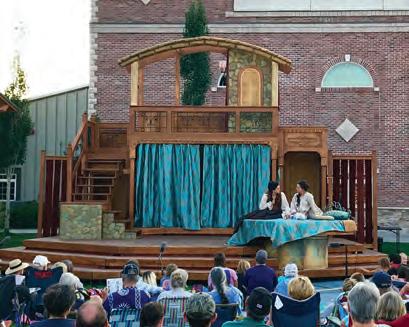
Association




Artisans at Mugler
June 25 – Sept 10 Fridays from 9am –1pm, Mugler Plaza
Downtown Sounds
July 4, 6:30pm – 9:45pm
George Kilby Jr. and the Road Dogs
July 25, 4:30pm – 7:30pm
Jack and Kia
August 14, 6:30pm – 9:30pm Calle Mambo Driggs Plaza
Shakespeare in the Parks
July 20, 6:30pm – 9:30pm A Midsummer Night’s Dream Driggs Plaza
10th Annual
Driggs Plein Air Festival
July 25 – July 31, Main Events
July 25 – Sept 12, Exhibition and Sale
July 30, Competition Judging and Awards Driggs Plaza and Gallery






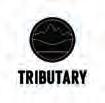


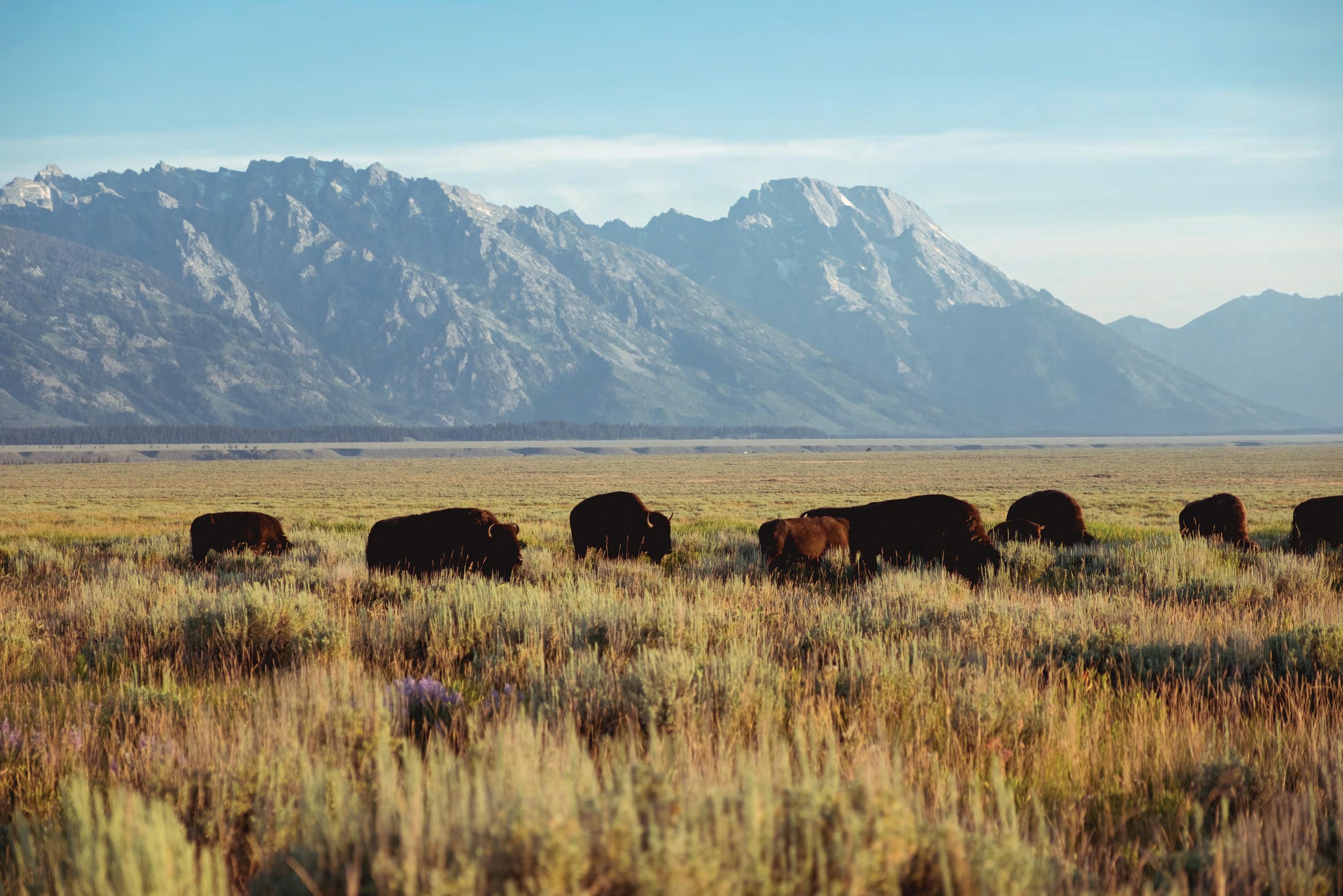


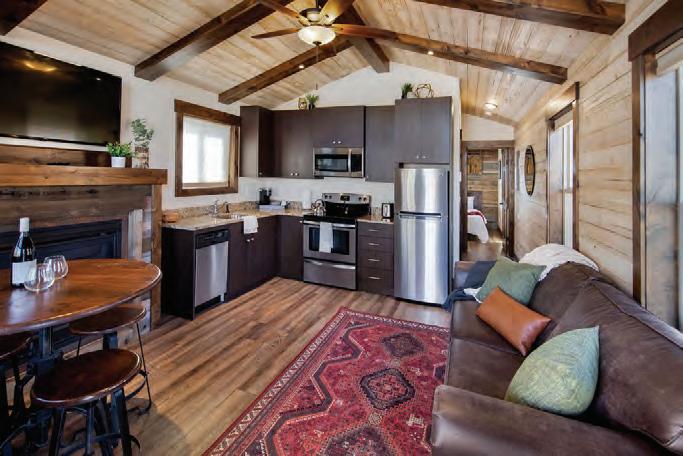




310 North Main Street
Driggs, ID 83422
208-354-2003
Open Daily 11am–10pm
From the owners of El Abuelito in Jackson comes Agave, Teton Valley’s very own family Mexican restaurant! Serving fajitas, burritos, and all of your Mexican favorites, cooked to perfection seven days a week, with lunch specials from 11am to 3pm daily. Bienvenidos amigos, mi casa es su casa! [p. 34]

36 South Main Street
Driggs, ID 83422
208-354-2307
Open Daily 8am–7pm barrelsandbins.market
Teton Valley’s source for all-natural and organic products including local and organic produce, meats, cheeses, and bulk food; 460 Bread baked fresh daily; beer and wine; nutritional supplements; health and beauty products; all-natural pet foods; and much more! Juice & Smoothie Bar is open 9am to 2pm daily. Check in for sandwiches and salads, as well as other grab-and-go takeout options. [p. 33]

Broulim’s Food and Pharmacy
240 South Main Street
Driggs, ID 83422
208-354-2350
Open Mon–Sat 7am–11pm broulims.com/driggs
Order sandwiches to go made from your choice of Columbus meats and cheeses. Breakfast sandwiches and paninis made fresh daily. Our deli has hot baked or rotisserie chicken, take-and-bake pizza, and other meals to go. Check out our display of hand-cut specialty cheeses! Freshly prepared salads, our own Sushi Bar, and hot Asian food. Daily specials of smoked meats available. Inquire at the deli for catering services. New coffee bar.

57 South Main Street
Victor, ID 83455
208-399-2872
Visit website for menus, hours, and online ordering butterinvictor.com
Butter makes it better, that is the true belief of husband-and-wife team Marcos Hernandez and Amelia Hatchard. Stop in or order online to go for a delightful spin on brunch classics such as al pastor hash, smothered cowboy burritos, or our Mexican grilled cheese. For delicious brunch anytime, the only question is: Our place or yours? Follow our Instagram @butterinvictor for specials and updates. [p. 45]

Citizen 33 Brewery & Restaurant
364 N Main St, Driggs, ID 83422
208-357-9099
Mon–Fri 3pm–10pm, Sat and Sun 12pm–10pm, Serving Food ’til 9pm citizen33.com
From the team behind Forage Bistro and Tatanka Tavern, Citizen 33 Brewery & Restaurant in Driggs is dedicated to serving fresh, delicious, and locally sourced food and beer from the Main Street pub. Enjoy ever-changing brews on tap by Brew Master Nick Farney and a delicious menu by Chef John Perry featuring elevated bar bites like local fried cheese curds and 460 Bread olive thyme toast, burgers, sandwiches, and flavorful entrees. Citizen 33 was built for the community members and visitors of Teton Valley to come together and celebrate this amazing place with delicious food and cold craft beer. Cheers to the citizens, “a native or inhabitant,” of Route 33! [p. 43]

Forage Bistro & Lounge
285 Little Avenue, Suite A Driggs, ID 83422
208-354-2858
Open Daily Reservations Recommended forageandlounge.com
Forage Bistro & Lounge, specializing in seasonal regional cuisine with an emphasis on local ingredients, offers creative, chef-inspired lunch and dinner seven days a week. Enjoy half-priced bottles of wine every Wednesday, as well as Board & Bottle for $32 (a house bottle of wine & charcuterie board) daily from 3pm to 5pm. Amazing burgers, steak, trout, market fish, pasta, homemade desserts, and more made from scratch. Our open kitchen with nothing to hide offers diners a unique experience in Teton Valley. [p. 43]
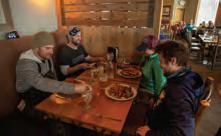
Grand Targhee Resort
Alta, WY 83414
800-TARGHEE (827-4433) grandtarghee.com
The Branding Iron is the best-kept dining secret at Grand Targhee Resort and one of the best restaurants outside of Driggs, Idaho. You’ll find a welcoming atmosphere that is both upscale and casual, and family-friendly. The menu includes a full bar and features house-made items, with fresh local ingredients and Wyomingraised beef. At the Trap Bar and Grill, enjoy a wide selection of local microbrews on tap, great food like the famous Wydaho Nachos and HD TVs with your favorite sports teams! Snorkels is your slopeside bistro; enjoy a cup of hot coffee or cappuccino with a Wyoming-style breakfast burrito; return for an afternoon ice cream or milkshake treat! [BC]

430 Old Jackson Highway Victor, ID 83455
888-899-1656
Open Daily 1pm–9pm grandtetonbrewing.com
Grand Teton Brewing’s Tasting Room is open daily this summer from 1pm to 9pm. With a wide selection of beer on tap and cans to go, there is something for everyone. Food trucks on site Tuesday through Sunday. Please visit our website for more information. [p. 98]
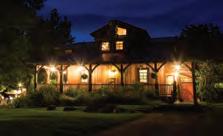
1300 East 6000 South Victor, ID 83455
208-787-LINN (5466) linncanyonranch.com
Whether you are staying at Linn Canyon Ranch or just want to join us for dinner, the Sunset Dinner Ride is not to be missed! Friendly mountain horses will be waiting to take you for a leisurely guided ride through the foothills of the Tetons, winding through aspen groves and fields of wildflowers. After your ride, members of the Linn family will welcome you back to an elegant western evening at our historic lodge. Appetizers and music on the porch precede a gourmet dinner, after which we’ll gather around the bonfire to roast marshmallows and stargaze. [p. 93]

40 Depot Street Driggs, ID 83422
208-354-RISE
Open Daily 7:30am–2pm risedriggs.com
Rise Coffee House is the place where Teton Valley rises, connects with each other, and finds time to slow down and enjoy the best cup of coffee in the valley (voted “Best of Teton Valley” three years in a row!). We have beautifully crafted espresso drinks, unique pour-overs, mimosas, delicious baked goods, and many breakfast and lunch options to enjoy. Come sit in our spacious garden with live music every Sunday from 9am to 11am all summer long!
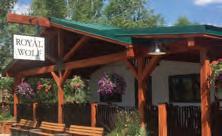
The Royal Wolf
63 Depot Street
Driggs, ID 83422
208-354-8365
Open seven days a week; serving lunch and dinner 11am–late theroyalwolf.com
Since 1997, locals and visitors alike have enjoyed discovering this off-Main Street establishment offering a diverse menu of sandwiches, burgers, salads, appetizers, and entrées served in a casual, smoke-free, pub-style environment. Complementing our menu is a full bar serving all of your favorite beverages, including cocktails, wine, and a selection of regional microbrews on draft. Enjoy outdoor dining on our spacious deck during the summer. Daily food and beer specials, Wi-Fi, and billiards. Stop by to meet old friends and make new ones. Snow sagas and fish tales told nightly.

18 North Main Street, 3rd Floor of the Colter Building, Suite 315 Driggs, ID 83422
208-980-7320
Open Daily 4pm–9pm tatankatavern.com
Tatanka Tavern offers wood-fired artisan pizza, salads, and the finest craft beers and wines. Bring in the family for a night out, or grab a seat at the bar and watch the game. Enjoy local favorites like the Fungus Amongus for dinner daily. [p. 43]

Located at Teton Valley Resort 1208 Highway 31
Victor, ID 83455 208-821-1982
Open Daily wanderlustbistro.com
From the owners of Butter Cafe in Victor and Streetfood at the Stagecoach in Wilson comes Wanderlust Bistro, serving up breakfast, lunch, and dinner daily influenced by regional and global favorites. Located at Teton Valley Resort, stop by and let us get you ready for your adventures ahead. Follow us @wanderlustbistro. [p. 104]
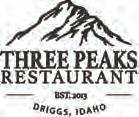
Three Peaks Restaurant & Catering
15 South Main Street
Driggs, ID 83422
208-354-9463
Daily happy hours 4pm–6pm threepeaksdinnertable.com threepeakscatering.com
Enjoy classic Italian dishes with a wild Western flare: Elk Meatballs, Spicy Pork Sausage Lasagna, and Idaho Rainbow Trout, just to name a few. A great downtown Driggs restaurant close to the stoplight. Boutique wine selection available for takeout or on-site enjoyment. Plenty of gluten-free and vegetarian options. Private inhome or on-site catering and cooking classes available. We feature locally made artwork in our unique, circa 1940s building. Visit our website or call for reservations. [p. 48]

Victor Emporium
45 North Main Street
Victor, ID 83455
208-787-2221
Open seven days a week
Over one million served! For more than sixty-five years, the Victor Emporium Old Fashioned Soda Fountain has served delicious milkshakes, including the World Famous Huckleberry Shake. Gourmet coffee and espresso served daily. The Emporium is also a great place to pick up those unusual gifts. Where the locals meet before enjoying the great outdoors here in Teton Valley. [p. 63]

5 South Main Street
Victor, ID 83455
208-787-2230
Open Daily 7am–9pm
Victor Valley Market is your local grocer and the place to get fresh seafood and choice meats in Teton Valley. Offering a unique selection of groceries, from organic and specialty items to your everyday needs, including a full selection of wine and beer. Our gourmet deli counter offers delicious house-made takeout dishes, along with sandwiches made with locally baked bread, fresh salads, housemade soups, and so much more! Victor Valley Market has all that you need to make a delicious meal, whether for eating in or picnicking out. [p. 92]

Warbirds Cafe
675 Airport Road
Driggs, ID 83422
208-354-2550
Open Daily Patio Seating Available wildlifebrewing.com
Craft cocktails, fine wine, creative cuisine: Teton Valley’s most unique dining experience features award-winning Executive Chef David Hugo’s seasonally inspired cuisine from Teton Valley and beyond. Serving lunch from 11:30am–3pm and dinner from 5pm–9pm. Join us for Happy Hour from 4pm-6pm, with drink specials and a light fare menu. Make sure to visit our free display of restored vintage warplanes. Can’t wait to see you.

Wildlife Brewing
145 South Main Street
Victor, ID 83455
208-787-2623
Open Daily 4pm–10pm wildlifebrewing.com
Since 2003, Wildlife Brewing has been a cornerstone of Victor’s restaurant scene. Locals and visitors alike visit daily to enjoy awardwinning microbrews and freshly made hand-tossed pizza. With a large family-friendly seating area and a unique stainless-steel bar, Wildlife is the perfect place to enjoy a quick brew after a fun-filled day or bring the whole family to enjoy the best pizza in the valley. Come on in and ‘Live the Wildlife!’ [p. 44]


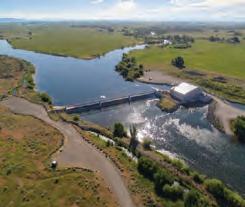




57 South Main Street Victor, ID 83455
307-201-1861
cchsjacksonhole.com
C&C HomeServices provides luxury vacation rentals as well as vacation rental representation and premium home management services to homeowners in Jackson Hole and Teton Valley. We stand by uncompromising standards designed to overachieve the expectations of our owners and guests alike. Homeowners and rental guests enjoy meticulous attention to detail and twenty-four-hour service. We offer services including short-term rental management, long-term rental management, caretaking, housekeeping services, snow removal, and lawncare. It is our pleasure to care for our clients’ homes and provide our guests the best in comfort and convenience. [p. 6]

Grand Targhee Resort
3300 Ski Hill Road
Alta, WY 83414
800-TARGHEE [827-4433] grandtarghee.com
After a day on the mountain, it’s time to relax with the family in one of a variety of Western-style slopeside accommodations. All lodging is located just steps away from an array of shopping, dining, and activities. For those who desire a more intimate family retreat, consider Grand Targhee Resort’s Vacation Rentals in Teton Valley, perfectly situated in Victor, Driggs, or on the way to the resort. Call 800-TARGHEE to book your stay. [BC]
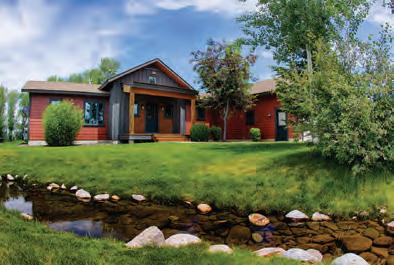
Grand Targhee Resort Property Management
18 North Main Street #105 Driggs, ID 83422
307-353-2300, ext 1396 grandtarghee.com
With more than thirty years of experience, our team provides twentyfour-hour service, real estate advice, and strategic marketing for your vacation rental. We also offer short-term vacation rentals and longterm rentals. Whatever your needs are, our team has you covered. Call 800-TARGHEE to book your stay. [p. 101]

1300 East 6000 South
Victor, ID 83455
208-787-LINN [5466]
linncanyonranch.com
Our lodging combines the best of luxurious accommodations with nature’s simple pleasures. Sleep peacefully in one of our luxury platform tents, or indulge yourself in creature comforts and rustic elegance in our artisan-built timberframe cabin. Our guests feel relaxed and inspired in our cozy mountain sanctuary. When you make your lodging reservation, we will also book your riding and dining activities at the ranch. We are also happy to help you reserve off-site adventures such as floating, fishing, hiking, and sightseeing. [p. 93]

Moose Creek Ranch
2733 East 10800 South Victor, ID 83455 208-787-6078 moosecreekranch.com
Come experience the new Moose Creek Ranch, a four-season private guest ranch located near the base of Teton Pass in Victor, Idaho. The historic ranch is being renovated and is under new ownership with fresh management and big plans for future improvements. Moose Creek Ranch is conveniently located near Yellowstone National Park, Grand Teton National Park, Jackson Hole, and Grand Targhee Resort and is a luxury basecamp for all the epic adventures and sight-seeing this region has to offer. Featuring diverse accommodation options for every traveler, including canvas glamping tents, cabins, and fivestar RV-sites. The ranch also hosts unforgettable weddings, family reunions, and corporate events. Don’t miss the updated restaurant and bar opening in summer 2021, featuring locally inspired eats, craft beer, and wine. [p. 49]
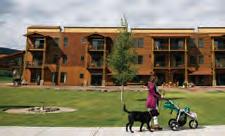
Teton Springs Lodge & Spa
10 Warm Creek Lane Victor, ID 83455 877-787-8757 or 208-787-7235 tetonspringslodge.com
US News & World Report’s #1 Hotel in Idaho multiple times, Teton Springs Lodge & Spa is nestled in the heart of the Yellowstone-Teton area. This all-suite destination hotel includes 36 elegant one and twobedroom suites, as well as 3, 4 and 5-bedroom luxury log homes. Offering the best of both summer and winter activities. The Stillwaters Spa & Salon is the perfect place to rejuvenate. Lodge and cabin guests have access to the Bronze Buffalo Sporting Club amenities, including two Byron Nelson designed golf courses, outdoor heated pool, tennis courts, fitness center, and more. [p. 18 ]

Teton Valley Cabins
34 East Ski Hill Road Driggs, ID 83422 208-354-8153 or 866-687-1522 stay@tetonvalleycabins.com tetonvalleycabins.com
Nestled amongst mature cottonwoods, Teton Valley Cabins welcomes you for your special getaway, vacation home base, or family or group reunion. Quaint charm, rustic cabins, and affordable rates await you at Teton Valley Cabins, just one mile from Driggs, with its restaurants and shops. Enjoy our picnic and activity grounds or explore Teton Valley from here. We are centrally located, with Grand Targhee Resort just up the road and other recreational opportunities within a few minutes’ drive. Various room types are available. Our rooms are equipped with microwave, fridge, satellite TV, and WiFi. [p. 92]
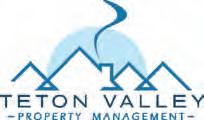
Teton Valley Property Management
253 South Main Street
Driggs, ID 83422
208-354-3431
info@tetonvalleypm.com
tetonvalleyvacationrentals.com
Allow us to find that perfect home or condo to make your vacation memorable. All our homes are nicely furnished, meticulously maintained, and fully equipped to accommodate your group at a fraction of what you would pay for hotel rooms. All homes come complete with linens, kitchen necessities, smart TVs or satellite TV service, high-speed internet, soaps, and paper products. Book online and receive all the conveniences of home, away from home. [p. 8]

Teton Valley Resort
1208 Highway 31
Victor, ID 83455
877-787-3036
tetonvalleyresort.com
At Teton Valley Resort, our goal is to provide you a comfortable and memorable basecamp for your mountain adventure. Whether you choose to camp in an RV site, stay in one of our luxury cabins or glamping units, or enjoy a completely unique experience in one of our rustic tipis, you’ll appreciate the wide variety of lodging and amenity options we offer. Enjoy a refreshing swim in our pool, clear your mind with a facial or deep-tissue massage in our day spa, share in a fun competition on our pickle ball courts, or plan an outdoor adventure excursion coordinated by our guest services team. Let us help you design your perfect stay at Teton Valley Resort and, together, we’ll create memories that last a lifetime. [p. 104]





[As it relates to potential ongoing COVID-19 restrictions during the summer of 2021, please call or text Zane Calderwood (208-317-3325) or Wade Treasure (208-351-4480) for updated worship service times.]
Teton Valley is home to three meetinghouses of the Church of Jesus Christ of Latter-day Saints. Visitors of all ages and backgrounds are invited to attend Sunday worship services in Victor (87 East Center Street), Driggs (225 North 1st Street), and Tetonia (209 South Main Street).
Worship services are centered on the partaking of the bread and water of the sacrament. This one-hour meeting includes congregational hymns, prayers, and brief sermons focused on the love of God and atoning sacrifice of Jesus Christ. Following this meeting, visitors of all ages are invited to attend one-hour Sunday School classes, divided by various age groups from toddlers to youth to adults. Additional information can be found at ChurchOfJesusChrist.org
500 Ski Hill Road | Driggs, ID 83422 | 208-354-WORD [9673] headwaterschurch.fun
Our motto is to simply teach the Bible simply—and thus, our pattern of study is verse by verse, chapter by chapter, book by book, right through the Bible. Sunday service starts at 10am; dress is nice casual. Wednesday Bible study starts at 7pm; dress is casual. From the stoplight in Driggs, head east on Ski Hill Road and the church will be on your left as you round the turn.
20 Alta School Road | Alta, WY 83414 | 307-353-8100 sftetons@silverstar.com | stfrancis.episcopalidaho.org
Join us for Sunday morning worship beginning at 10am. St. Francis of the Tetons Episcopal Church welcomes worshippers of all walks of faith. In the shadow of the Tetons, this historic church offers an opportunity to experience God’s presence and join in fellowship, spiritual renewal, and service to others.
265 North 2nd East | Driggs, ID | 208-354-8523 tetonvalleybiblechurch.org
Teton Valley Bible Church exists to glorify God and exalt Jesus Christ as Lord through Holy Spirit-empowered living and worship. Our mission is to make disciples through gospel-centered outreach, the spiritual building-up of believers, and living in loving fellowship with one another. We gather together to worship the Lord on Sunday mornings; please visit the website for service times. Pastor Jim Otto (MDiv) is committed to expositional preaching and Biblical theology. Child care is available and all are welcome. [p. 101]
Teton Valley Campus | Grades preschool–8 | 192 West Birch Street | Victor, ID 83455
Jackson Campus | Grades preschool–12 | 700 Coyote Canyon Road | Jackson, WY 83001 tetonscience.org
An independent day school for students Preschool to grade 8 that creates lifelong learners through place-based education. Educating the whole child through academic engagement, character development, and community focus. [p. 42]
District Office: 208-228-5923
tsd401.org
Empowering our students to reach their full potential—Teton School District 401 provides a safe and exceptional learning environment where career and college readiness are the academic cornerstones of a relevant and progressive education. [p. 98]
Grades 9–12 | 208-228-5924
tsd401.org
Teton High School strives to recognize the uniqueness of the individual in preparing for a lifetime of learning. THS provides a safe and academically focused learning environment, where students are challenged for career and college readiness.
Grades 9–12 | 208-228-5928
tsd401.org
Basin High School is an alternative for students who meet the state criteria for enrollment. Students obtain credits through a stateapproved independent-study format, with assistance from certified staff.
Grades 6–8 | 208-228-5925
tsd401.org
The mission of TMS is to be a safe and innovative organization that empowers each student and staff member to develop a foundation of self-efficacy, build relationships, overcome challenges, stretch their grit and resilience, and recognize their potential.
Grades 4–5 | Driggs 208-228-5926 tsd401.org
Rendezvous’ mission is to create a caring community of learners who inspire each other to embrace curiosity, value others’ opinions, and develop a foundation of self-efficacy.
Victor 208-228-5929 | Driggs 208-228-5927 | Tetonia 208-228-5930 in Driggs 208-228-5926 tsd401.org
The mission of the TSD 401 elementary schools is to be integral in the partnership between school, home, and community in nurturing and encouraging all children to become productive citizens and lifelong learners.
PHOTO BY LINDA SWOPE

LOOK TO THE SKIES this fall to spot the iconic sandhill cranes as they flock to Teton Valley’s wetlands and farmlands for rest and sustenance, a pre-migration ritual to build up needed energy for their winter migration. Teton Regional Land Trust has protected more than eleven thousand acres in Teton Valley, including wetlands, nesting, and foraging habitat essential for sandhill cranes.
Celebrate this species at the Land Trust’s fourth annual Greater Yellowstone Crane Festival, held September 13 through 18. Learn more: tetonlandtrust.org.




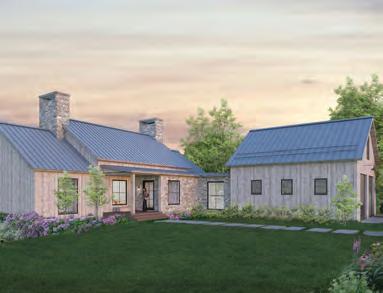







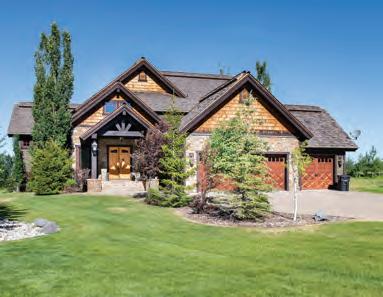

17+ MILES OF
BIKING 70+ MILES OF XC BIKING SCENIC CHAIR LIFT RIDES
SWIMMING POOL
18-HOLE DISC GOLF COURSE NATURE CENTER
GUIDED NATURE HIKES
SCENIC HIKING
SUMMER CAMP
BIKING CAMPS & LESSONS
BUNGEE TRAMPOLINE MINING COMPANY
CLIMBING WALL HORSEBACK RIDES AND MUCH MORE

